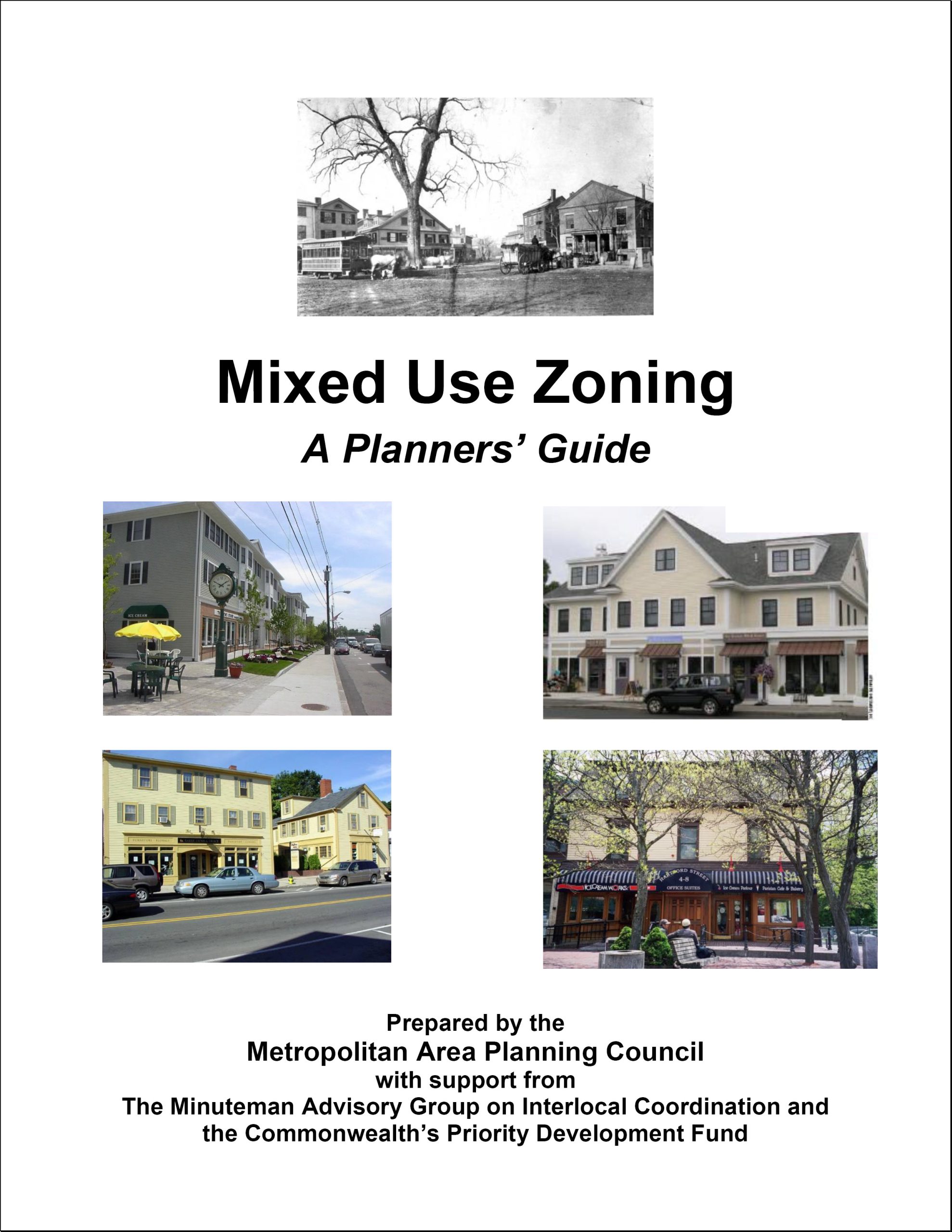Guidebooks & Templates
Utilize guidebooks and template documents, organized alphabetically by category, to assist your agency in crafting, formulating, and/or amending your land use documents.
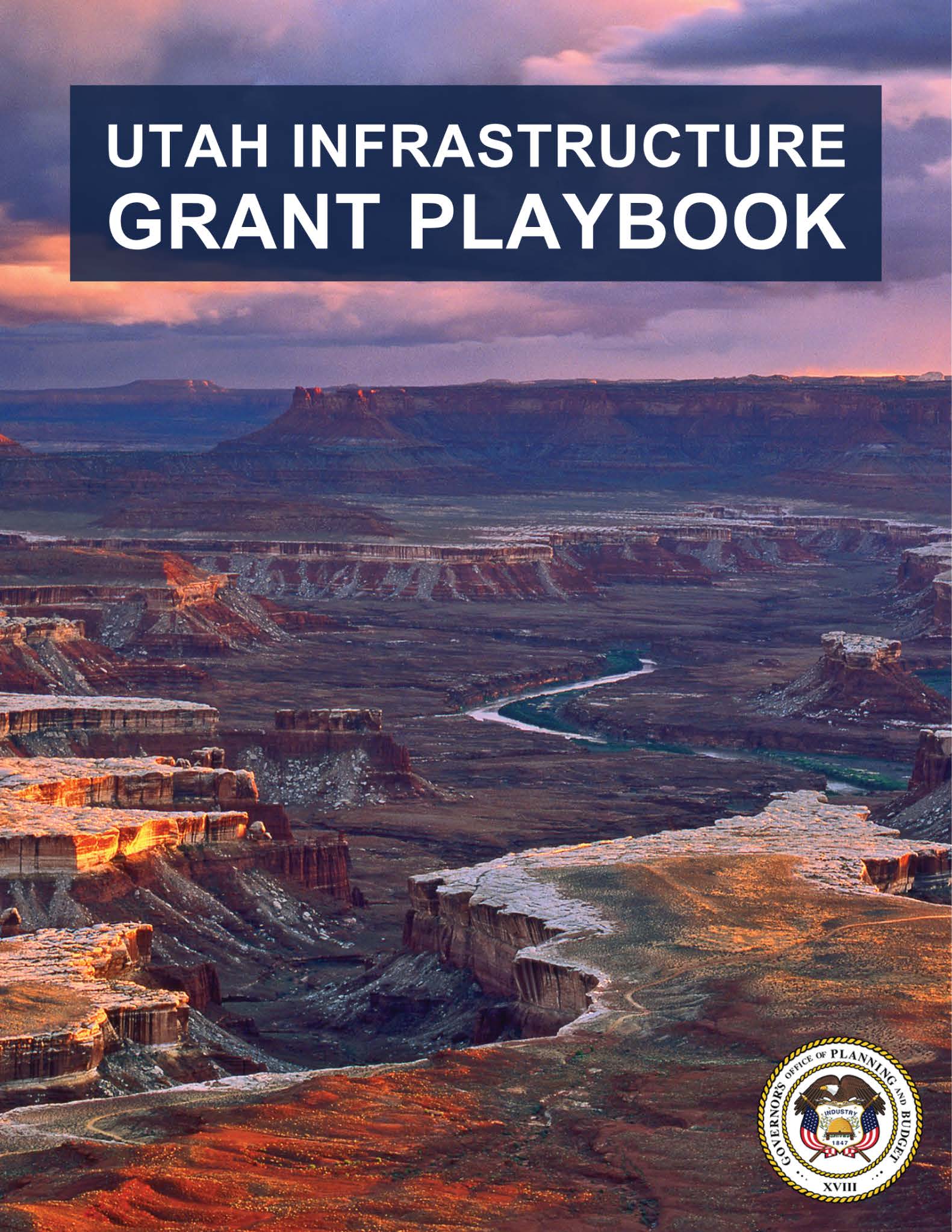
GOPB's Grant Infrastructure Playbook is intended to connect grant applicants to necessary resources to learn about grant programs, find appropriate grants to apply to, understand what resources are necessary to apply, find resources for applications, understand what steps are necessary after submitting an application, receiving an award, and receiving and using grant funds, as well as finding resources necessary for these post-application steps.
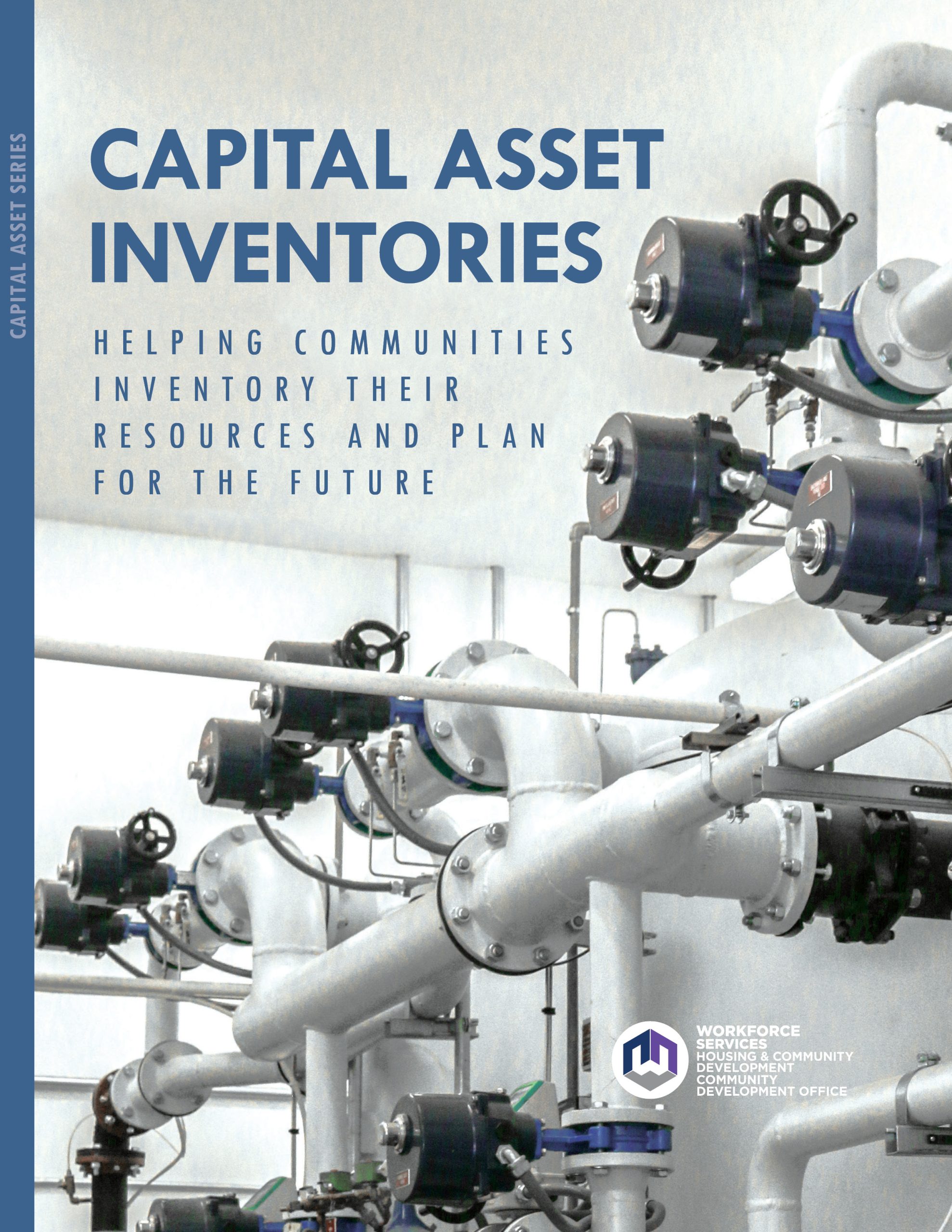
The Capital Asset Inventories Guidebook discusses why every community should have a capital asset inventory, how to create the inventory, and advice to communities that are beginning or updating their inventories.

ULUI's Public Infrastructure Financing Options document provides a primer on several types of financing options available to governments including Taxation, Value Capture and Tax Increment Financing (“TIF”), Grants, Public Private Partnerships (“PPPs”), and Public Infrastructure Districts (PIDs), and more.
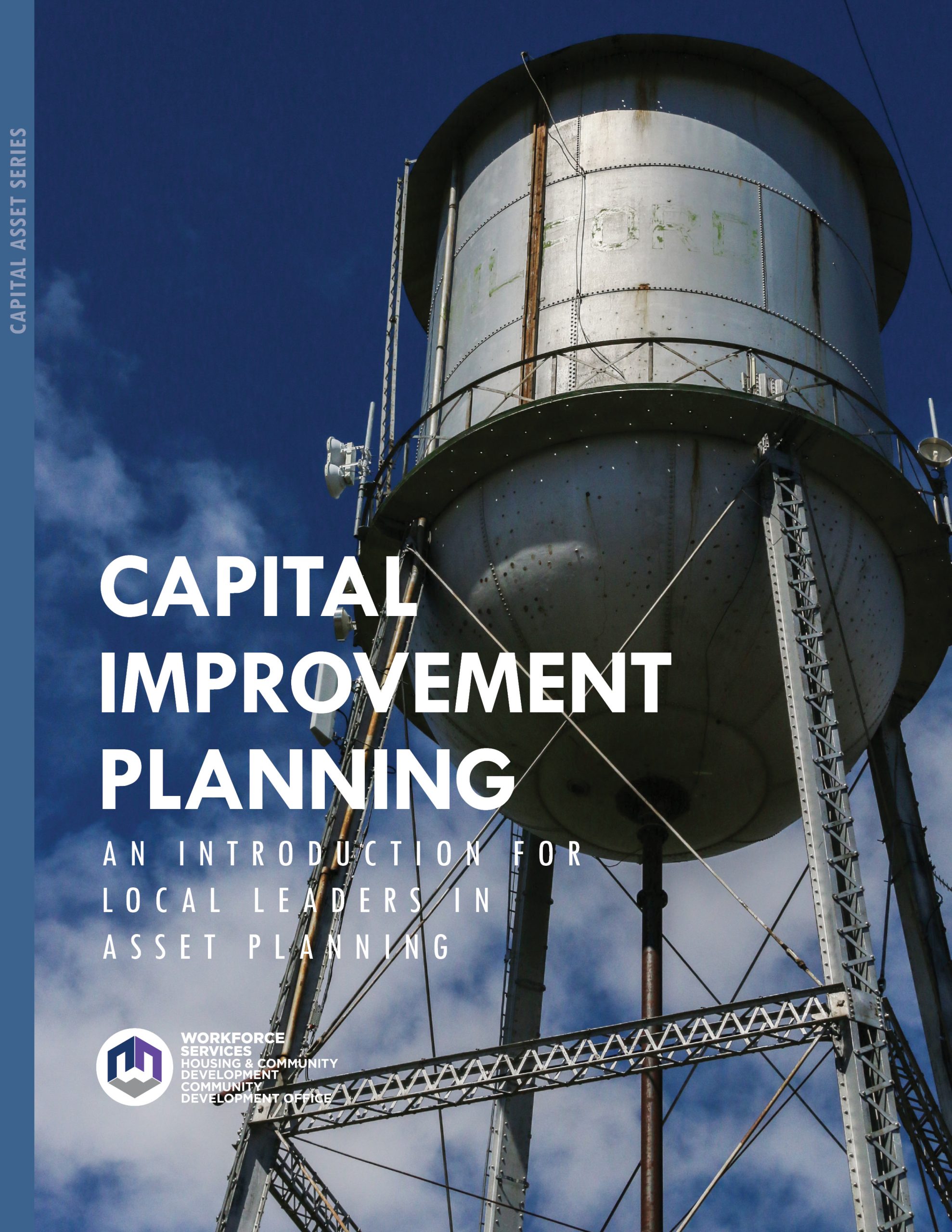
The Capital Improvement Planning Guidebook lays out an example capital improvement planning process for those new to the concept or reviewing their current capital improvement planning process.
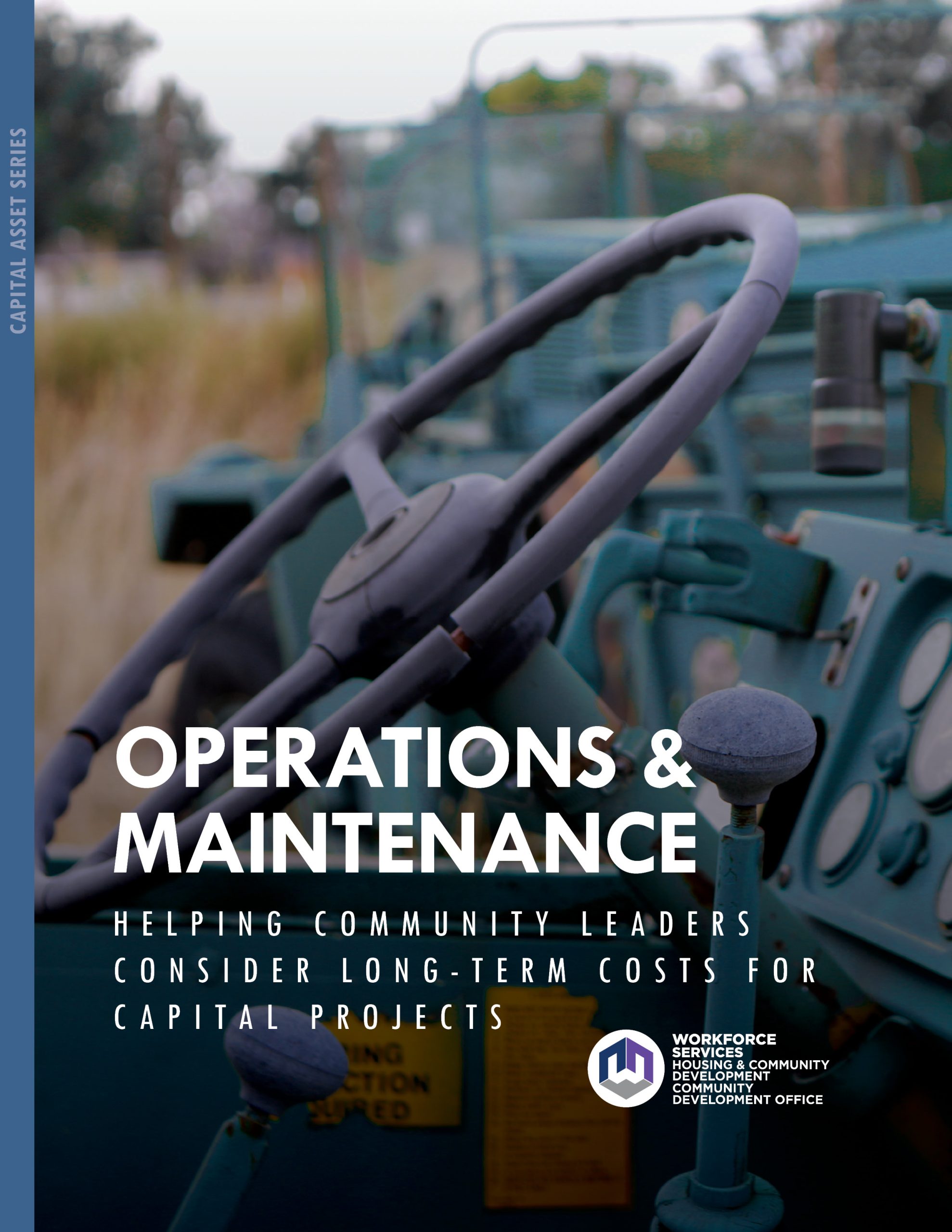
The Operations & Maintenance Guide establishes best practices for local community leaders to consider long-term O&M costs for capital projects.
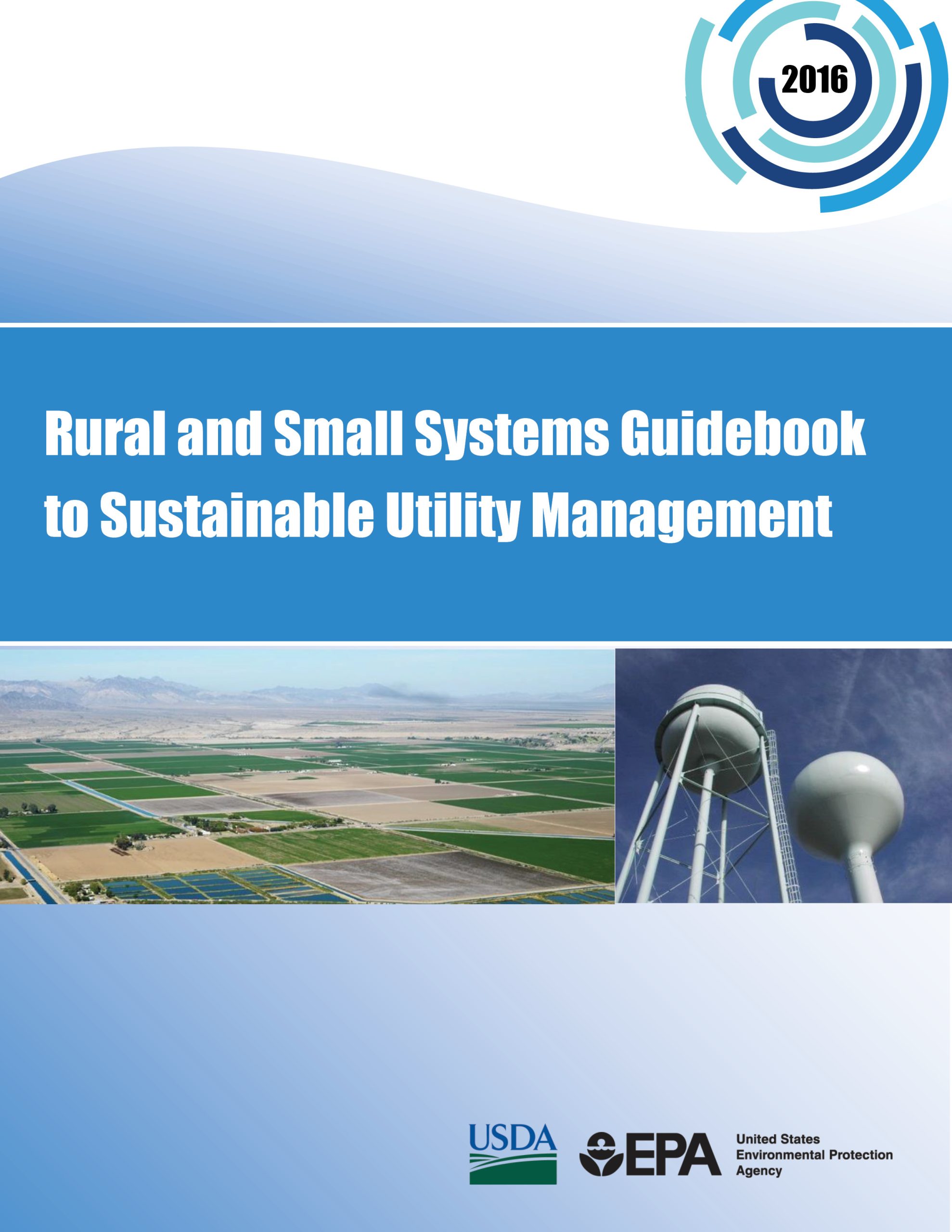
USDA & EPA's Rural and Small Systems Guidebook to Sustainable Utility Management addresses the significant management and operational issues that many rural agencies face, including aging or inadequate infrastructure, recruiting and retaining qualified staff, growing or establishing financial reserves, and setting rates that are reflective of their operational costs and capital needs.
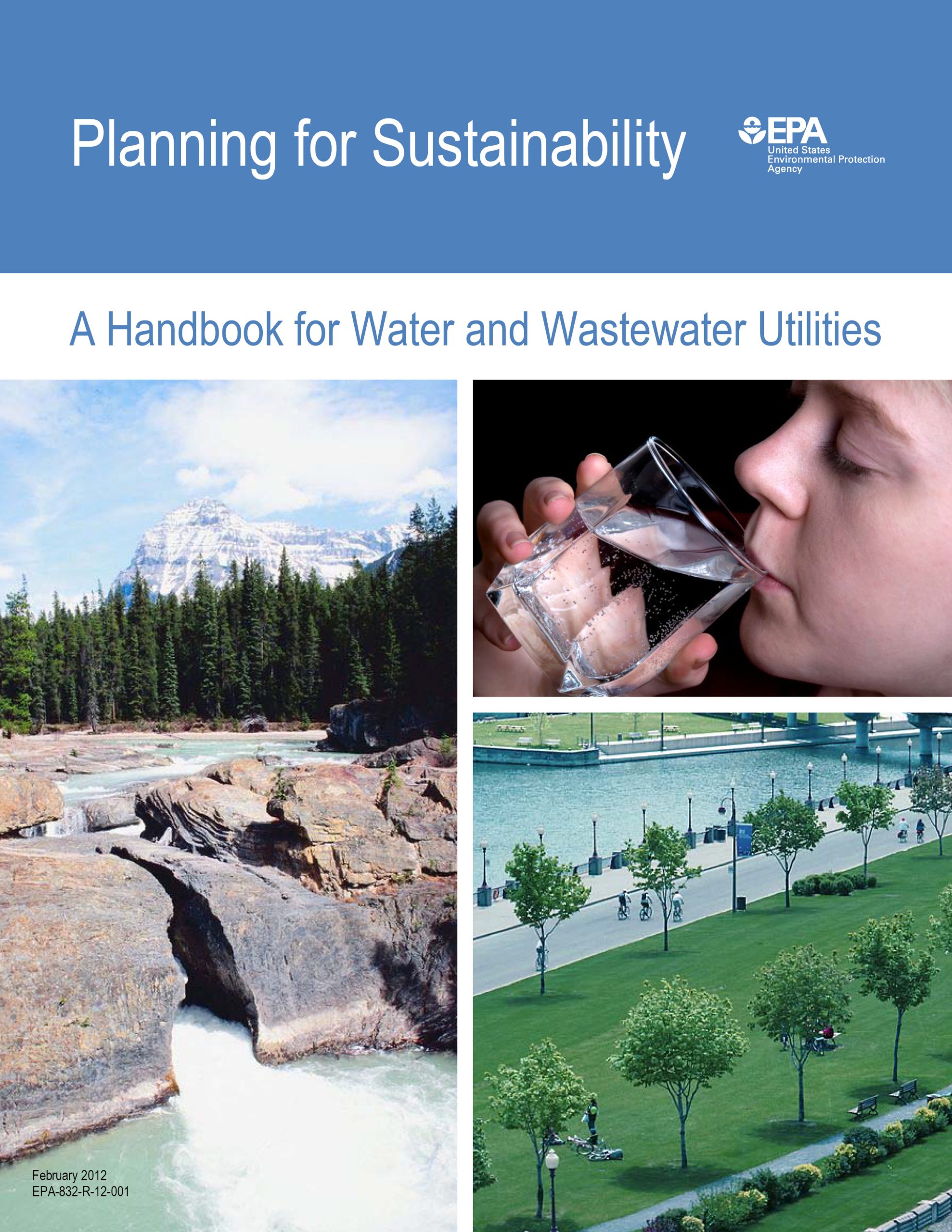
EPA's Handbook for Water and Wastewater Utilities promotes the adoption of practices by water and wastewater utility providers that will help these providers plan and effectively manage their infrastructure and operations to ensure sustainability and develop and maintain the necessary technical, financial, and managerial capacity to do this planning.
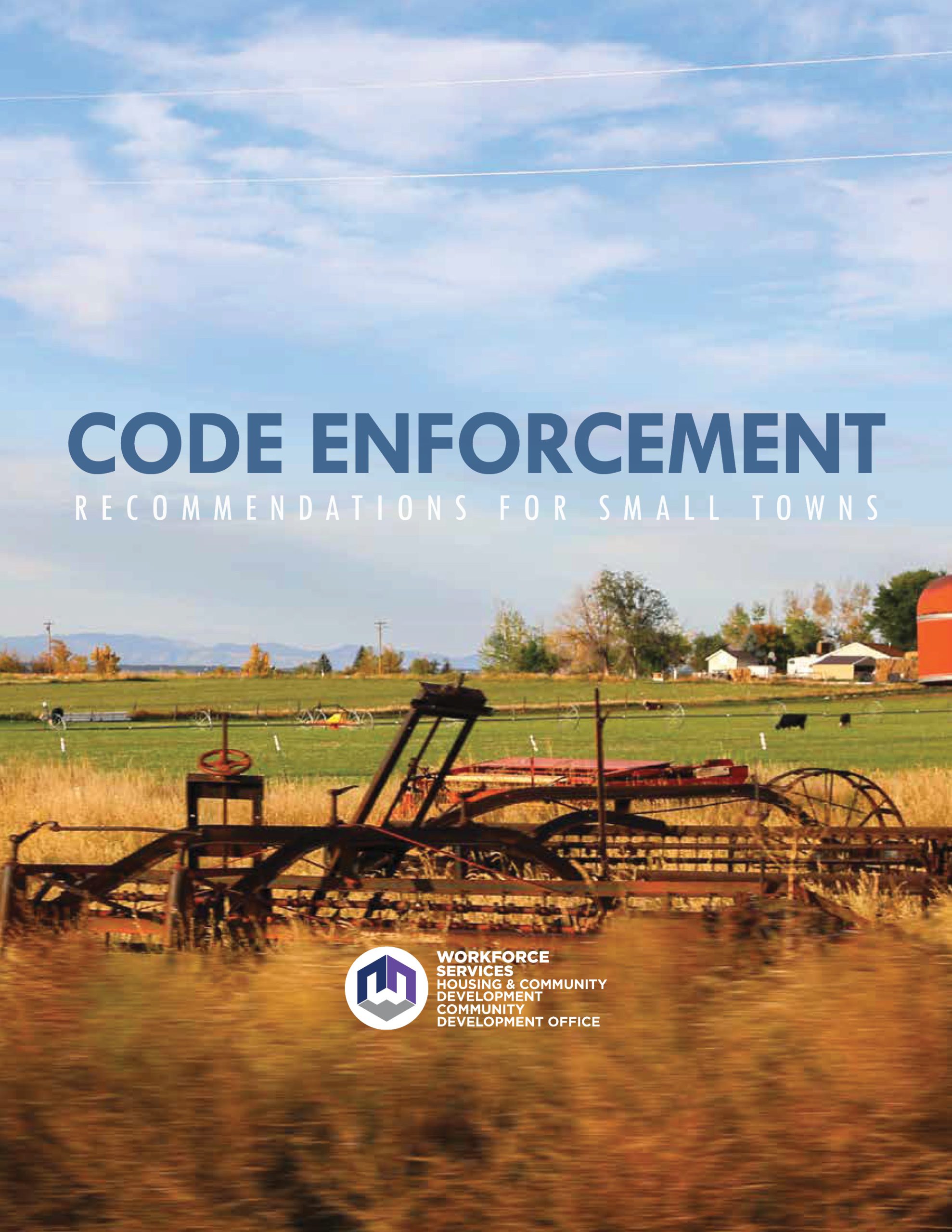
The Code Enforcement Recommendations For Small Towns Guidebook is intended to provide instruction on best practices to help small communities address common challenges to code enforcement. Good code enforcement must be based on good code and good code must be based on a good general plan. Community plans must justify the provisions in the code, which, in turn, justifies the community's enforcement of the code.
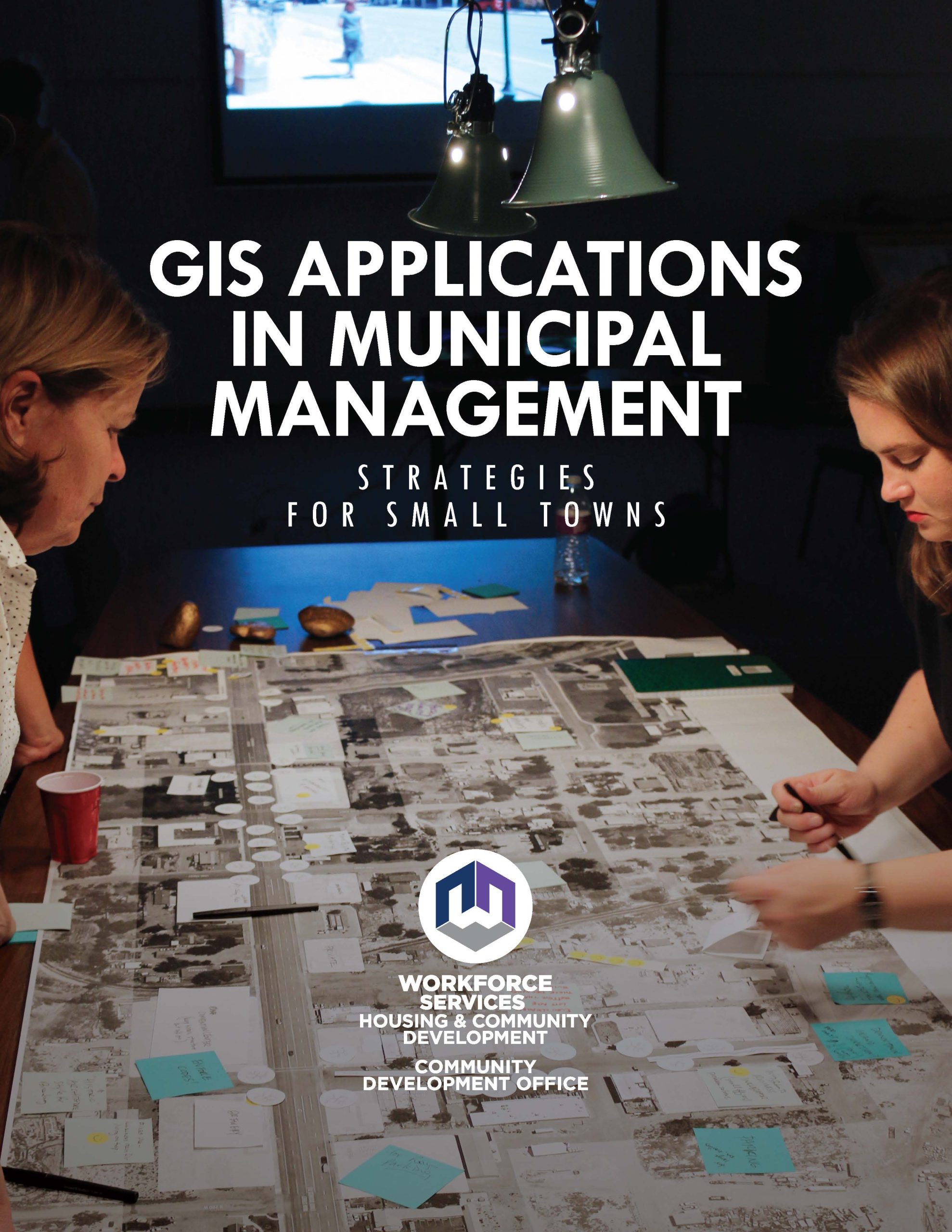
GIS Applications in Municipal Government - Strategies for Small Towns Guidebook is intended to provide small-town leaders, planners, and managers with a basic understanding of Geographic Information Systems (GIS) and how GIS technology can support planning and municipal management activities. The guide gives strategies for overcoming actual and perceived barriers to GIS implementation – especially those that inhibit small towns.
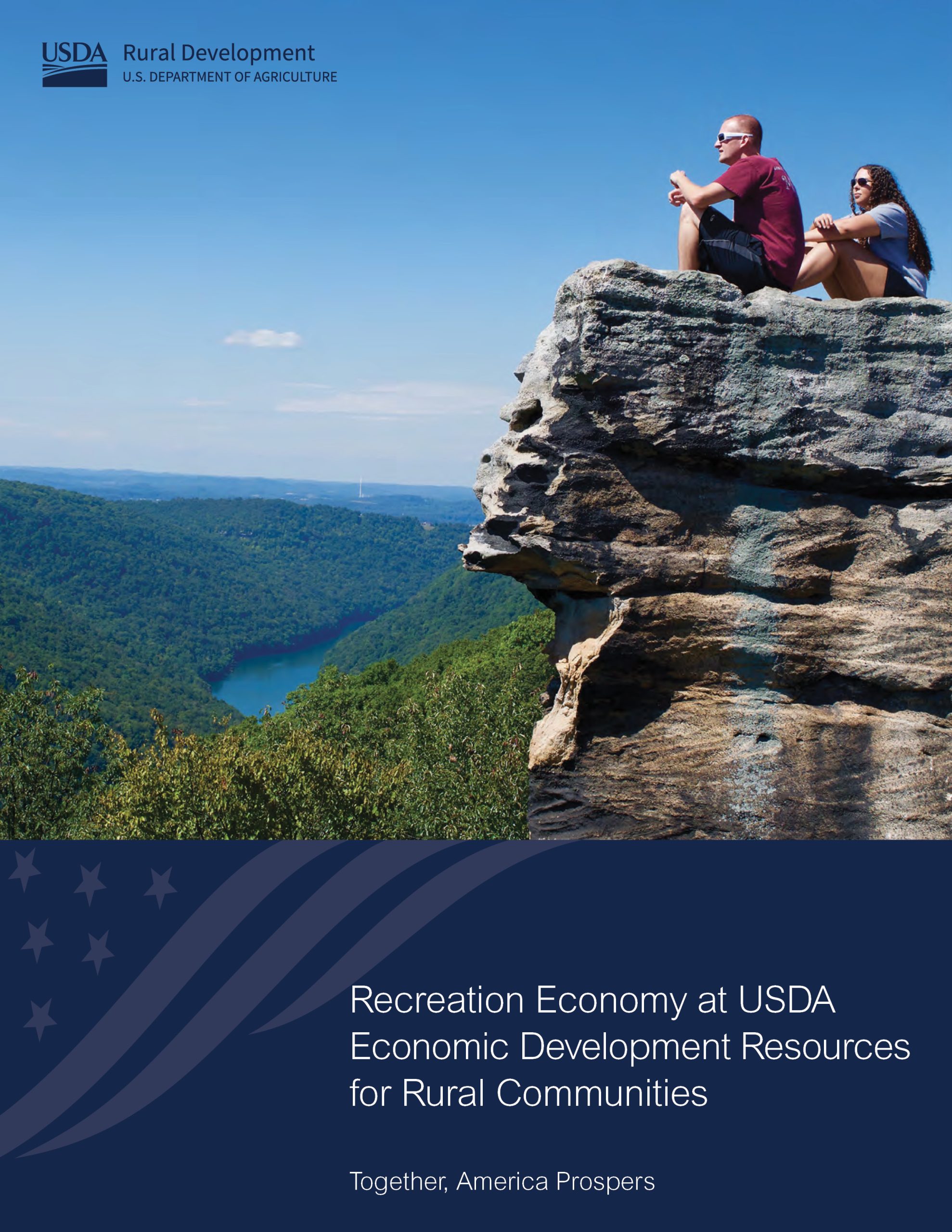
USDA’s Forest Service (FS), Rural Development (RD), and the National Institute for Food and Agriculture (NIFA) have developed the Recreation Economy Guidebook for rural communities to identify resources that develop the recreation economy.
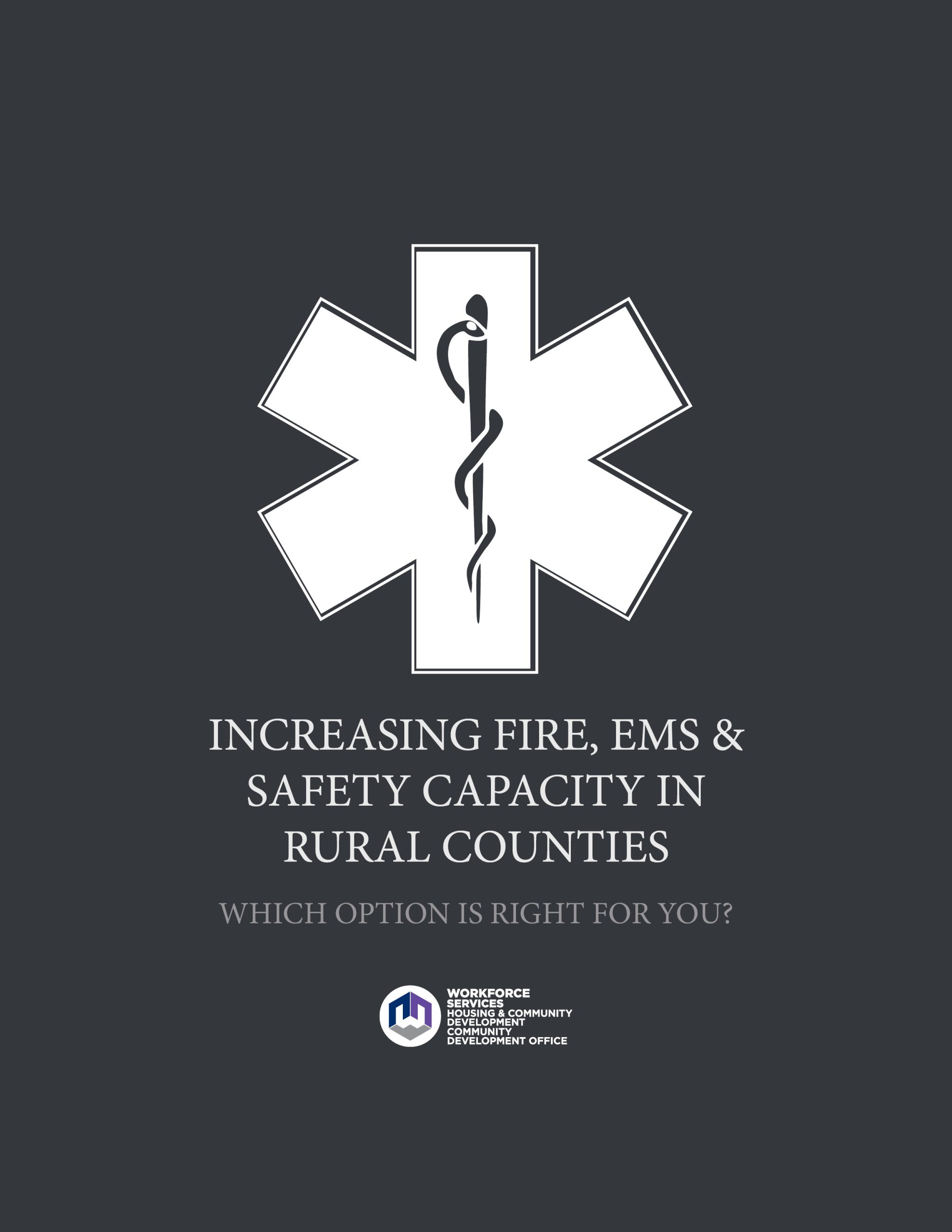
For Utah’s rural counties, ensuring that fire, EMS, and public safety staff are trained, supported, and adequately funded is key to increasing community resilience. Increasing Fire, EMS & Safety Capacity in Rural Counties seeks to assist rural counties currently facing funding challenges to fully support their fire, EMS, and public safety services.
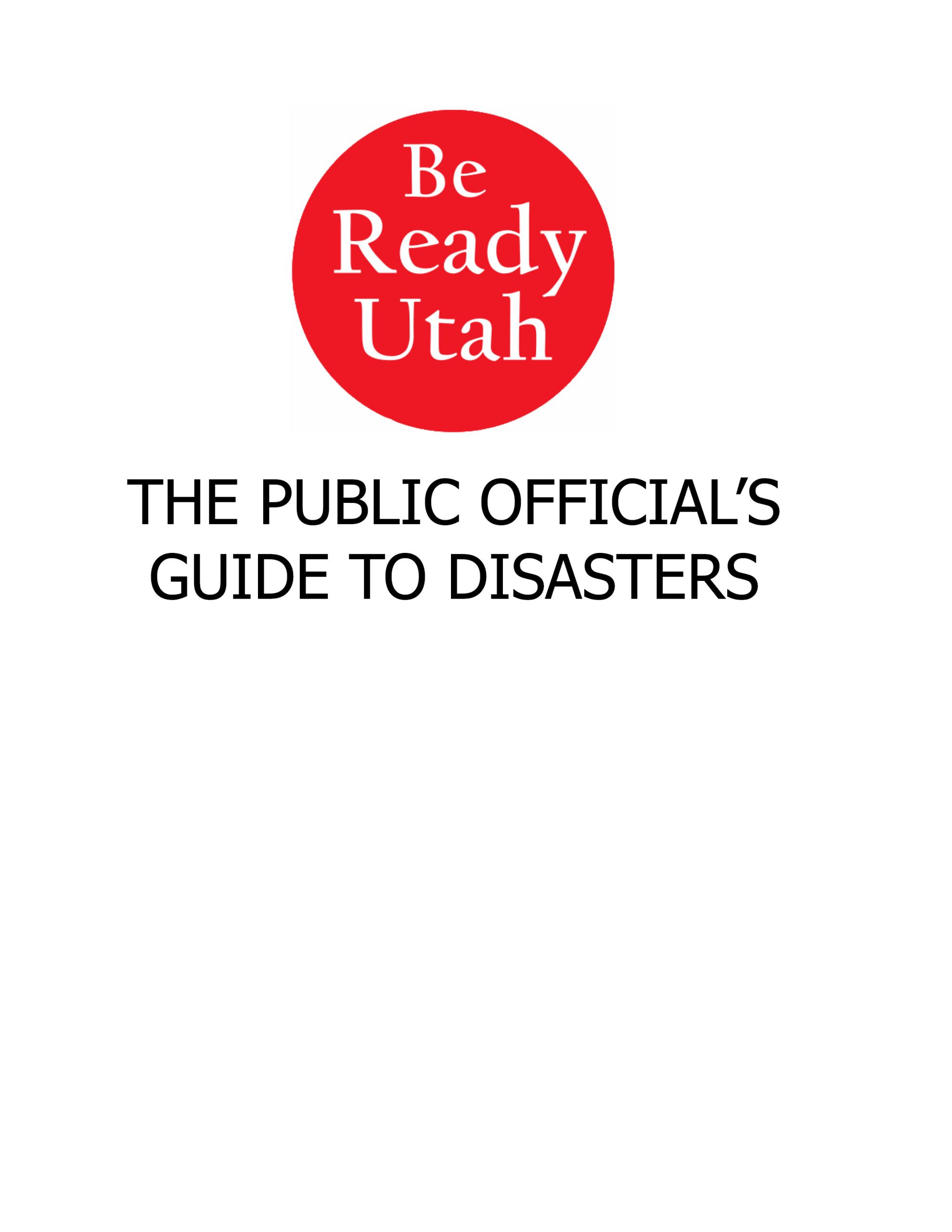
Be Ready Utah's Public Official's Guide to Disasters is a tool to help you prepare for, respond to, and recover from emergencies of all kinds that might threaten to overwhelm your community.
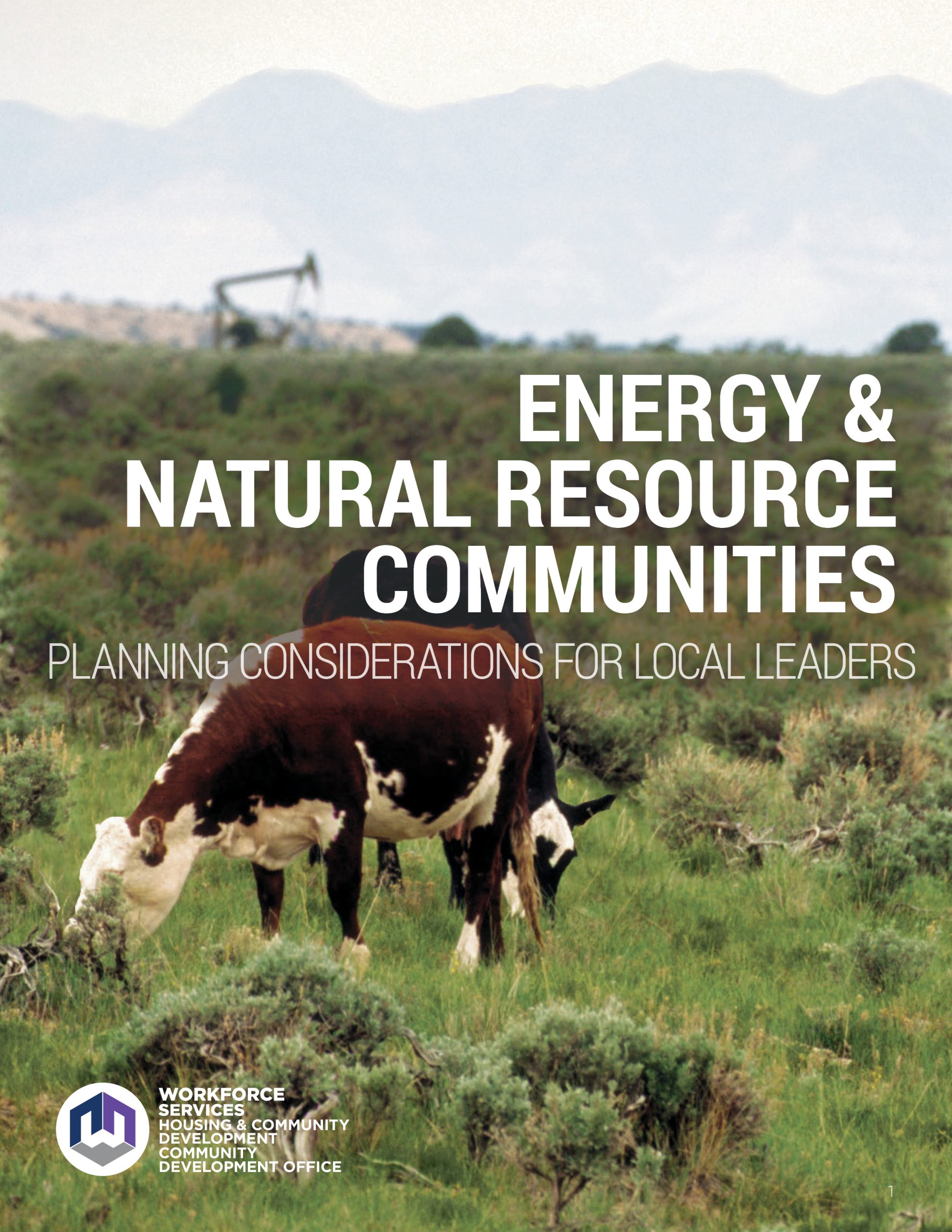
Building off of previous studies the Energy & Natural Resource Communities - Planning Considerations for Local Leaders guide was assembled as a one-stop resource to assist energy and natural resource communities in building and maintaining resiliency.

The Dark Sky Planning Guide provides direction on how agencies can focus on keeping naturally darker and less-populated rural areas free from light pollution.
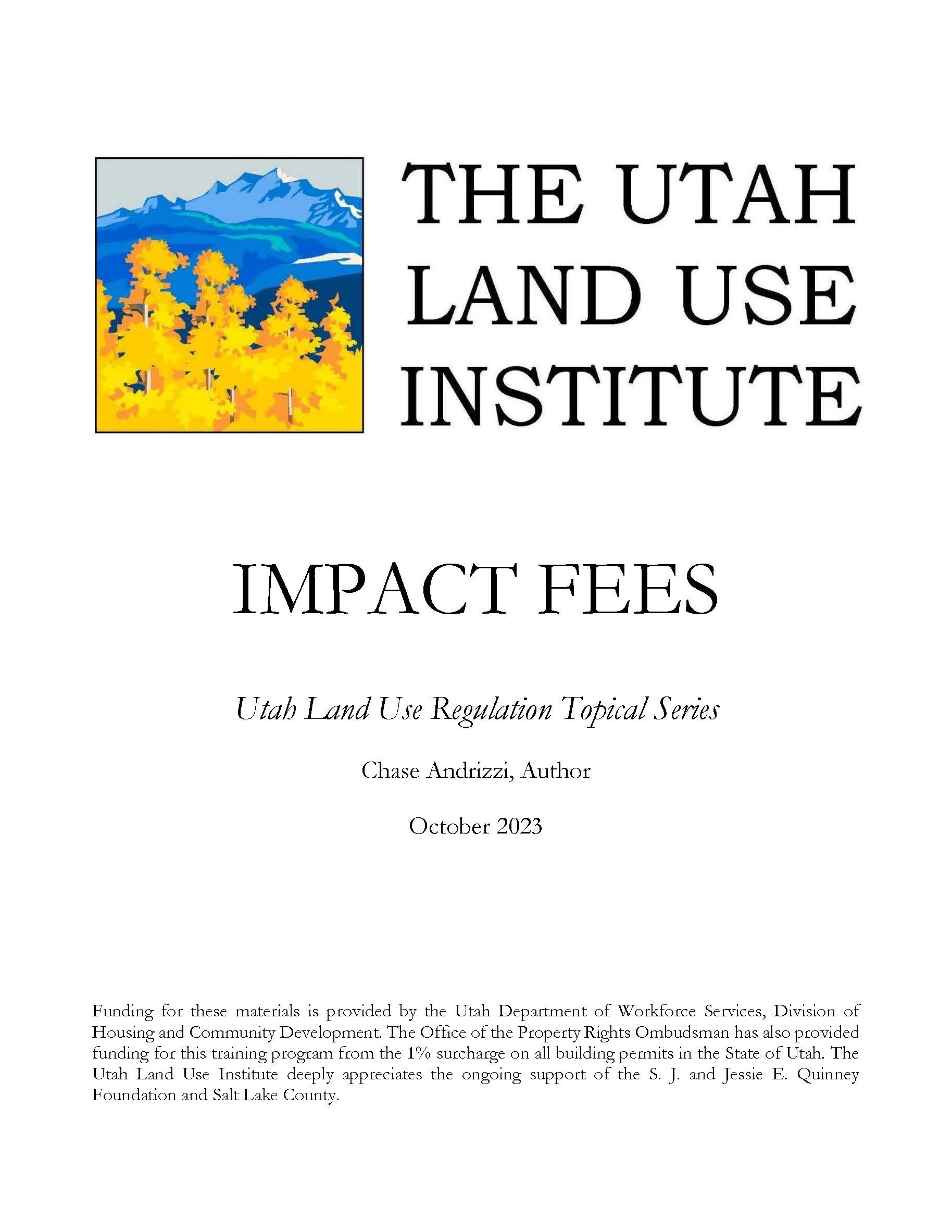
ULUI's Impact Fees document discusses the history of Utah's Impact Fees Act, the scope and applicability of the Act, and studies some of the relevant Utah Case Law that came in the wake of it. It also includes helpful guides for elected officials and local governments tasked with adopting and implementing impact fees in their jurisdiction.
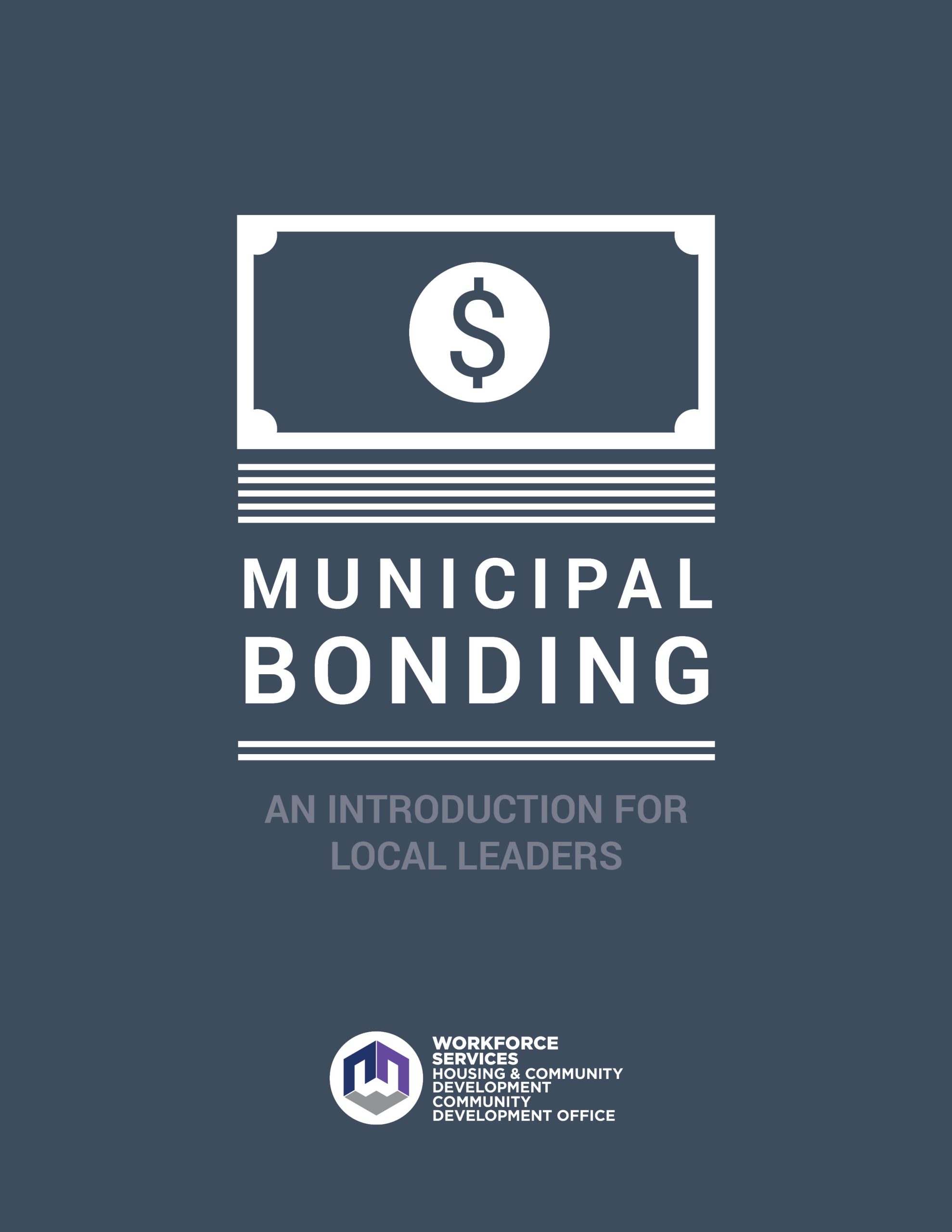
The purpose of the Municipal Bonding - An Introduction for Local Leaders guide is to enhance understanding of municipal bonds among Utah community leaders, including elected officials, city staff, volunteers, and other stakeholders.
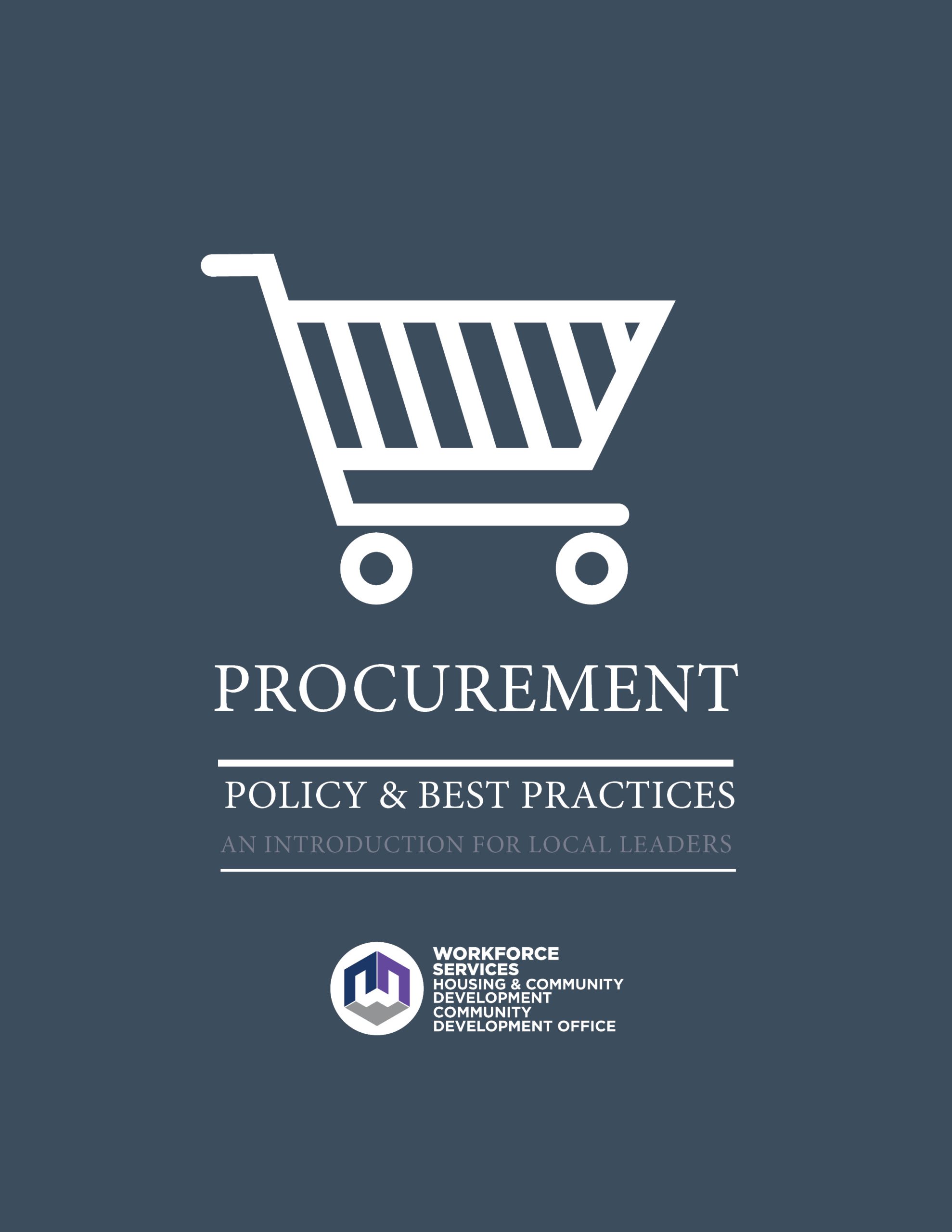
Small local governments often lack the staff, expertise, service providers, training, and clear policy, which can lead to inefficiency, waste, and poor accountability in procurement of goods and services. The Procurement Policy & Best Practices - An Introduction for Local Leaders guide summarizes best practices in procurement policy to help local governments overcome these challenges.
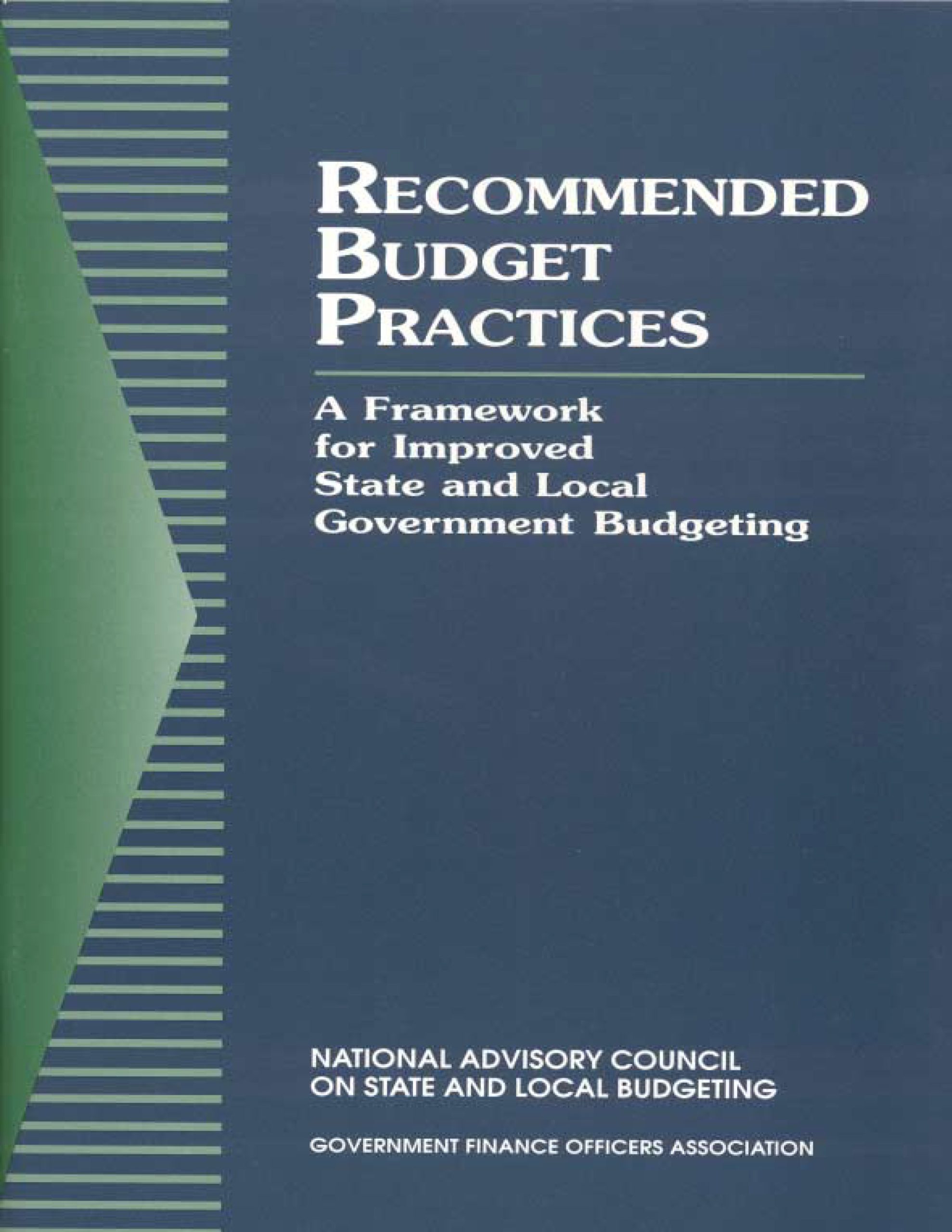
The Government Finance Officers Association Recommended Budget Practices - A Framework for Improved State and Local Government Budgeting publication provides best practices for a fiscally responsible agency.
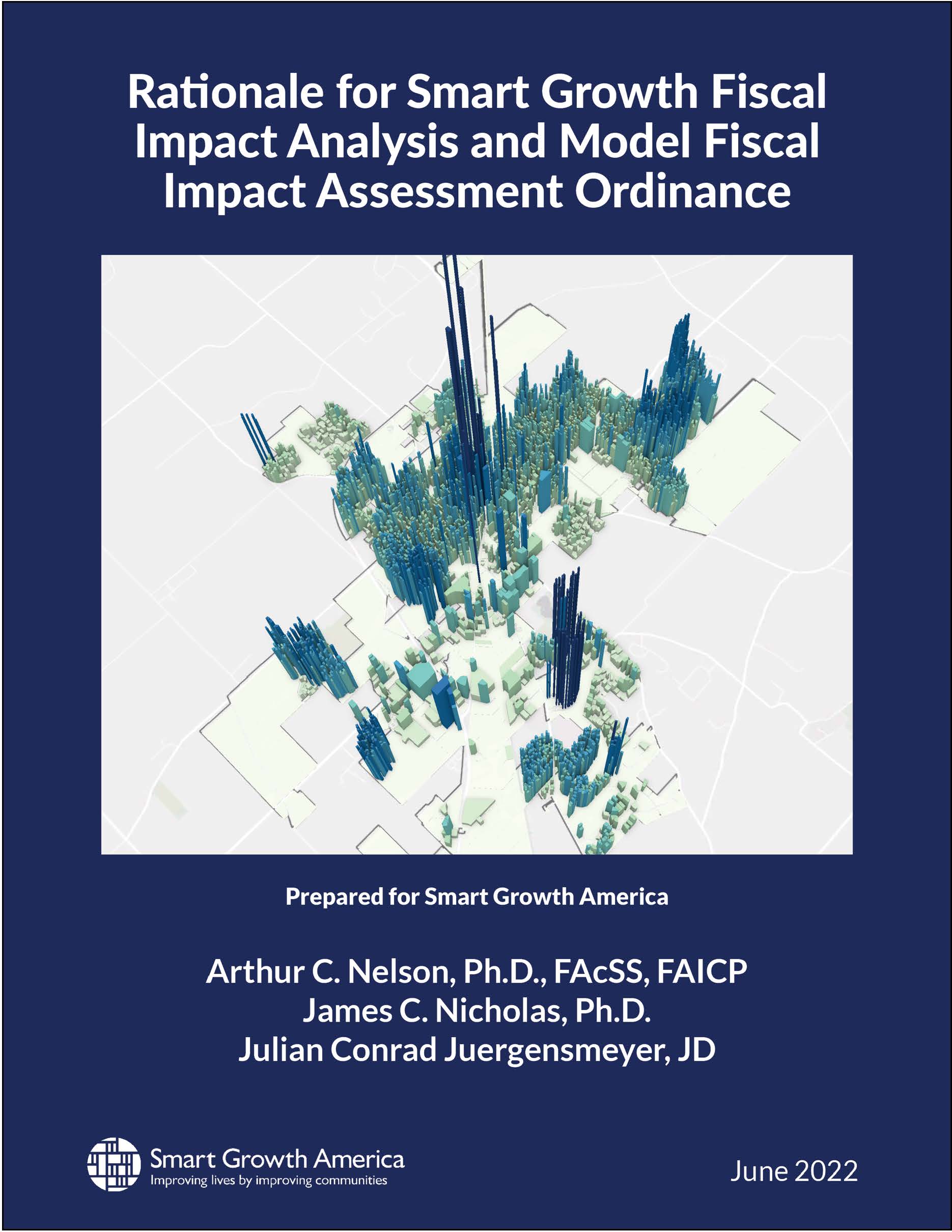
Smart Growth America's Rationale for Smart Growth Fiscal Impact Analysis and Model Fiscal Impact Assessment Ordinance publication provides a tool to objectively assess the extent to which development projects impact government fiscal resources. In planning and land use development decision-making, it can be used to compare fiscal outcomes to different land
use or development scenarios.
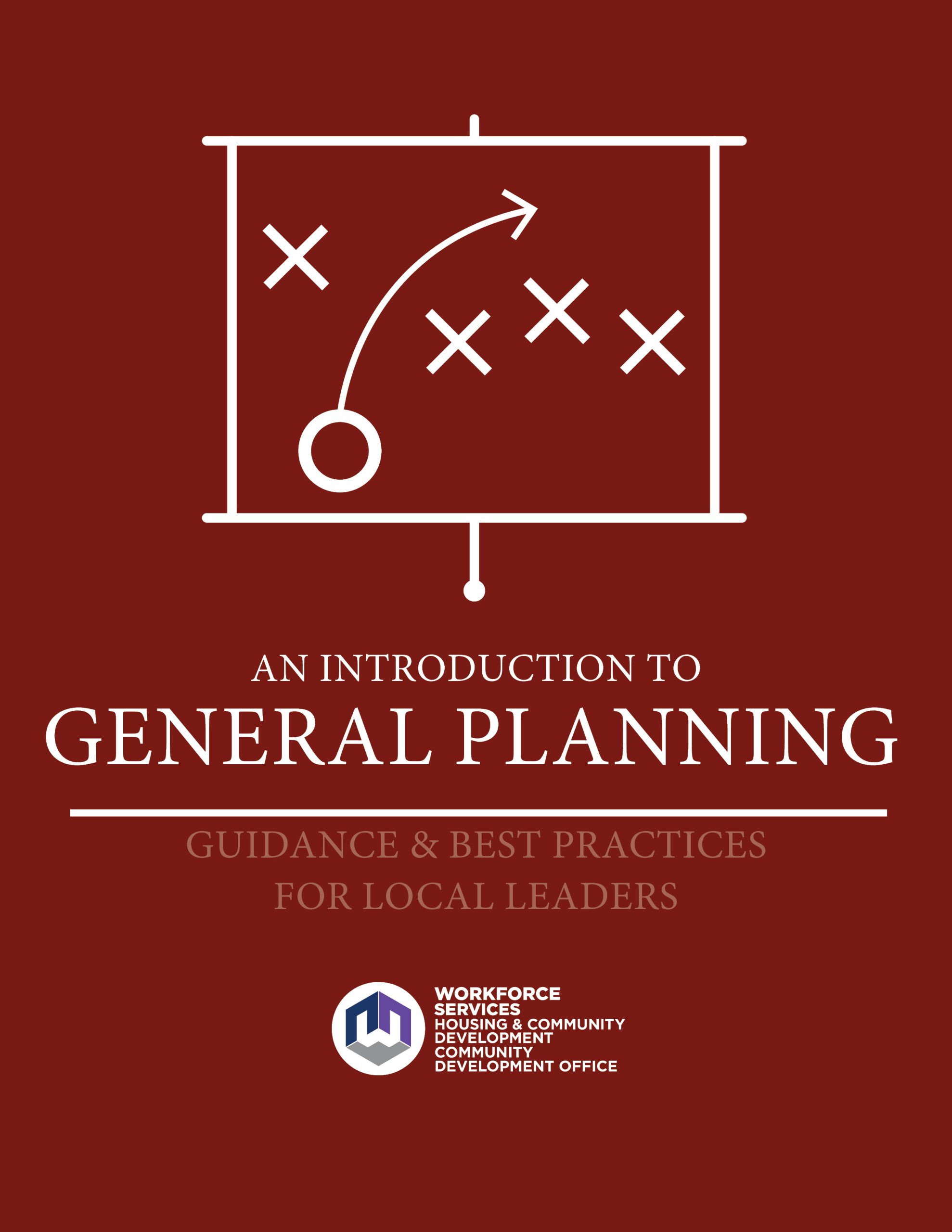
Utah state code requires every municipality to have a General Plan. The Introduction to General Planning Guidebook is intended to help citizen planners, local government staff, and elected officials understand the reasons behind this requirement and the importance of local government planning.
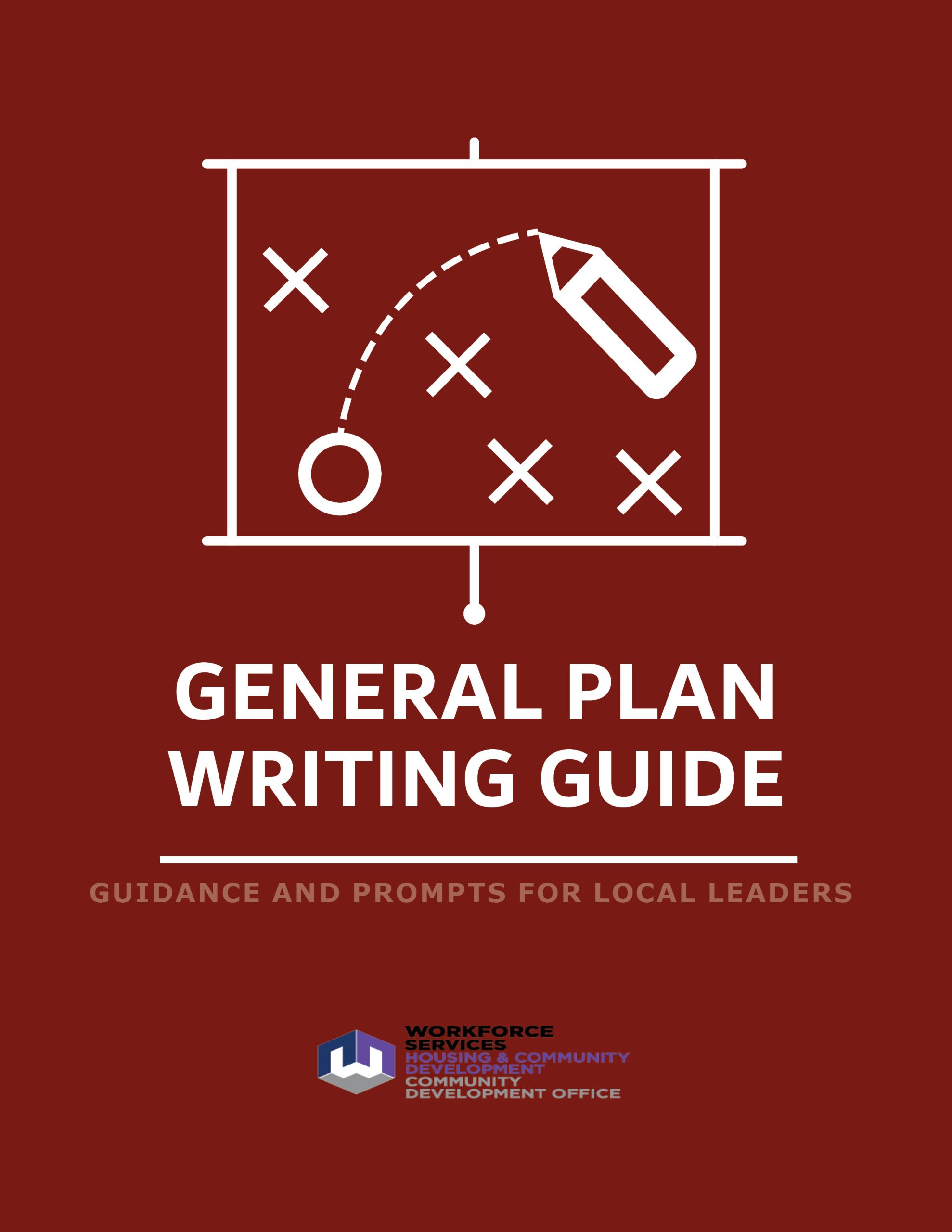
The General Plan Writing Guide will help you craft your community general plan, which is a required document for every city and county by Utah state code. General plans, also called master or comprehensive plans, guide your community's decision-making by describing its current and future needs, including water use and preservation, housing, land use, and transportation.
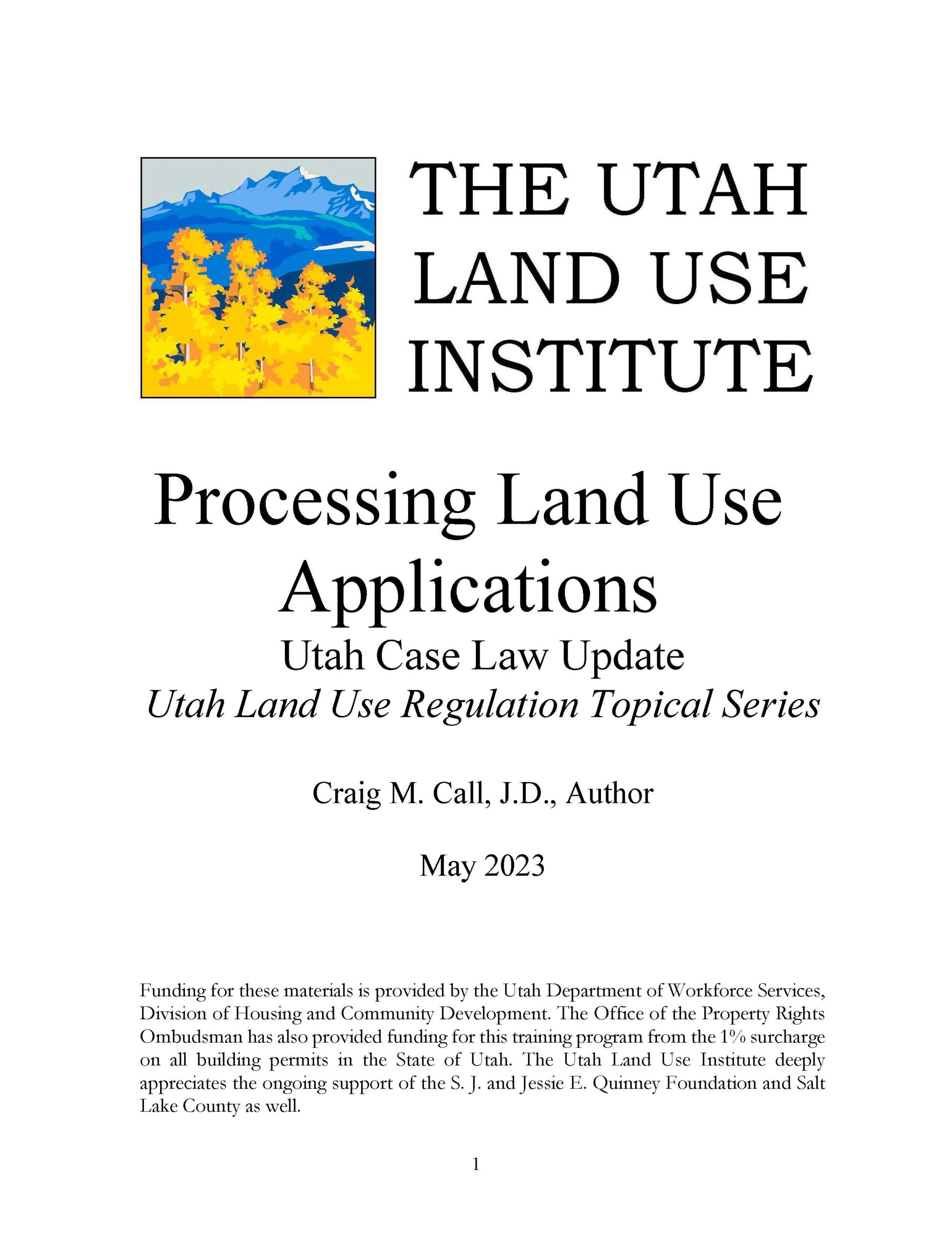
ULUI's Processing Land Use Applications discusses four land use cases decided in recent years by the Utah Supreme Court and Court of Appeals. The case studies focus on how local administrative decisions are scrutinized on appeal. These cases were written not just for local authorities, property owners, and neighbors of development projects but also as a guide for district court judges and those who practice before them on how to review local land use decisions.
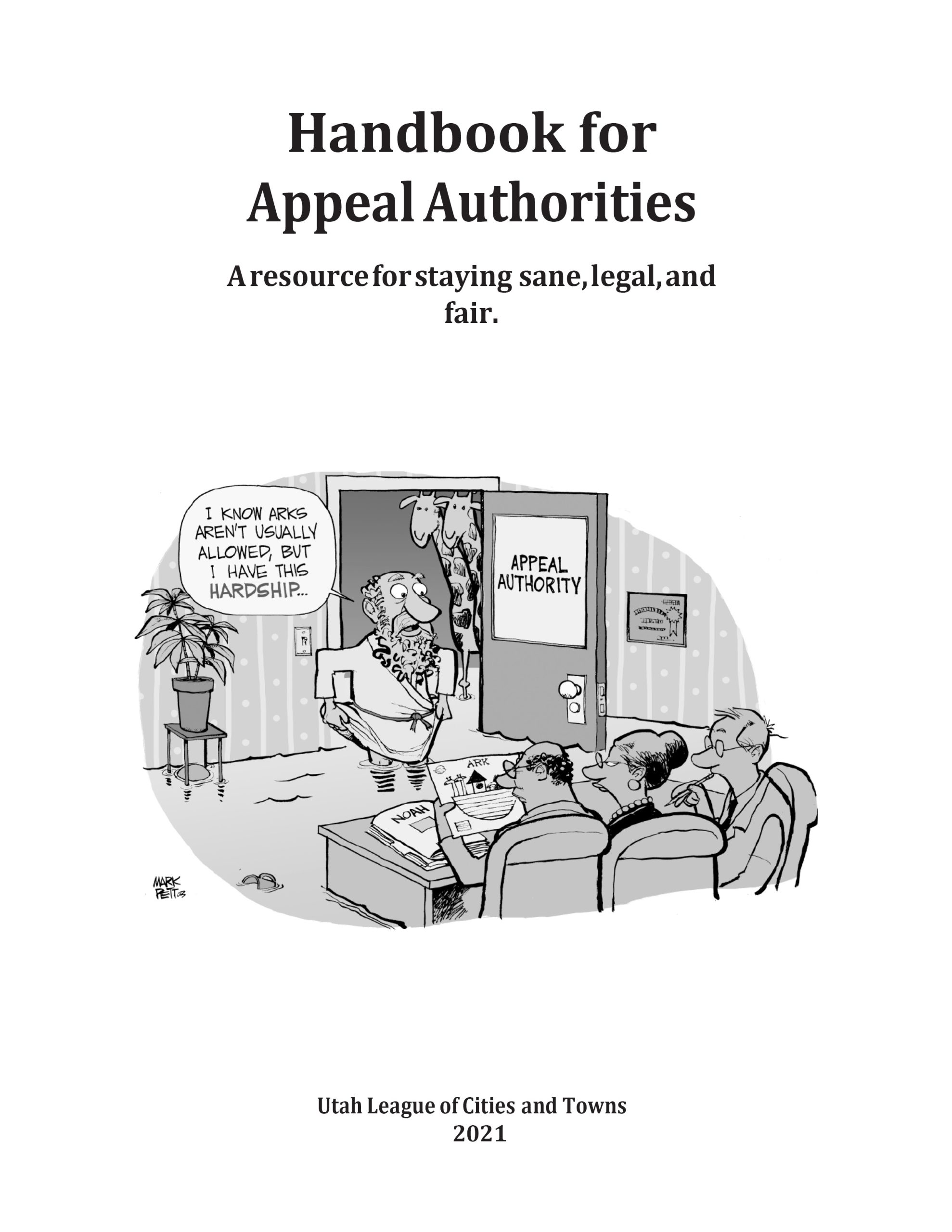
ULCT's Handbook for Appeal Authorities explains the laws that govern the appeal authority process for local agencies.
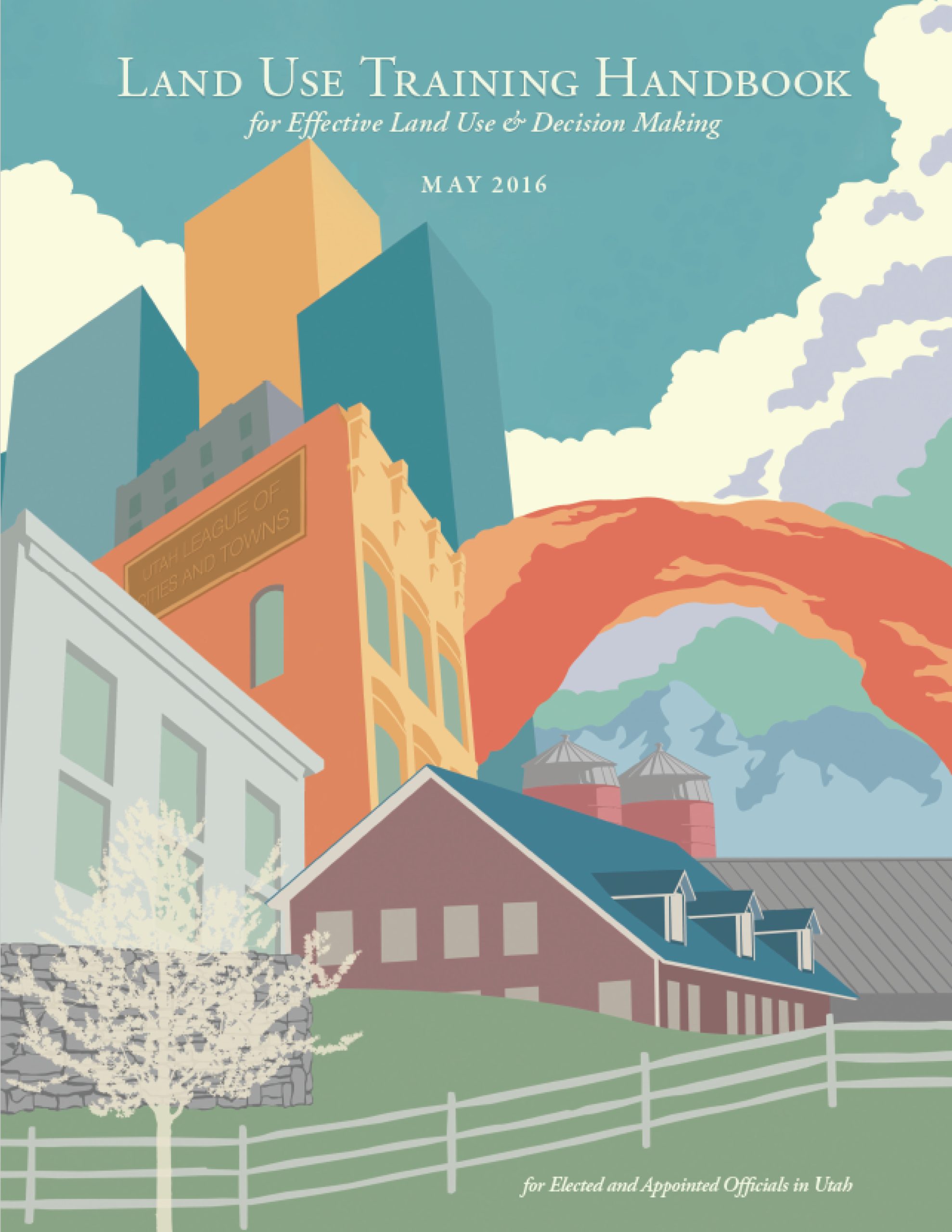
ULCT's Land Use Training Handbook helps guide agencies through effective land use and decision making processes based on law and best practice.
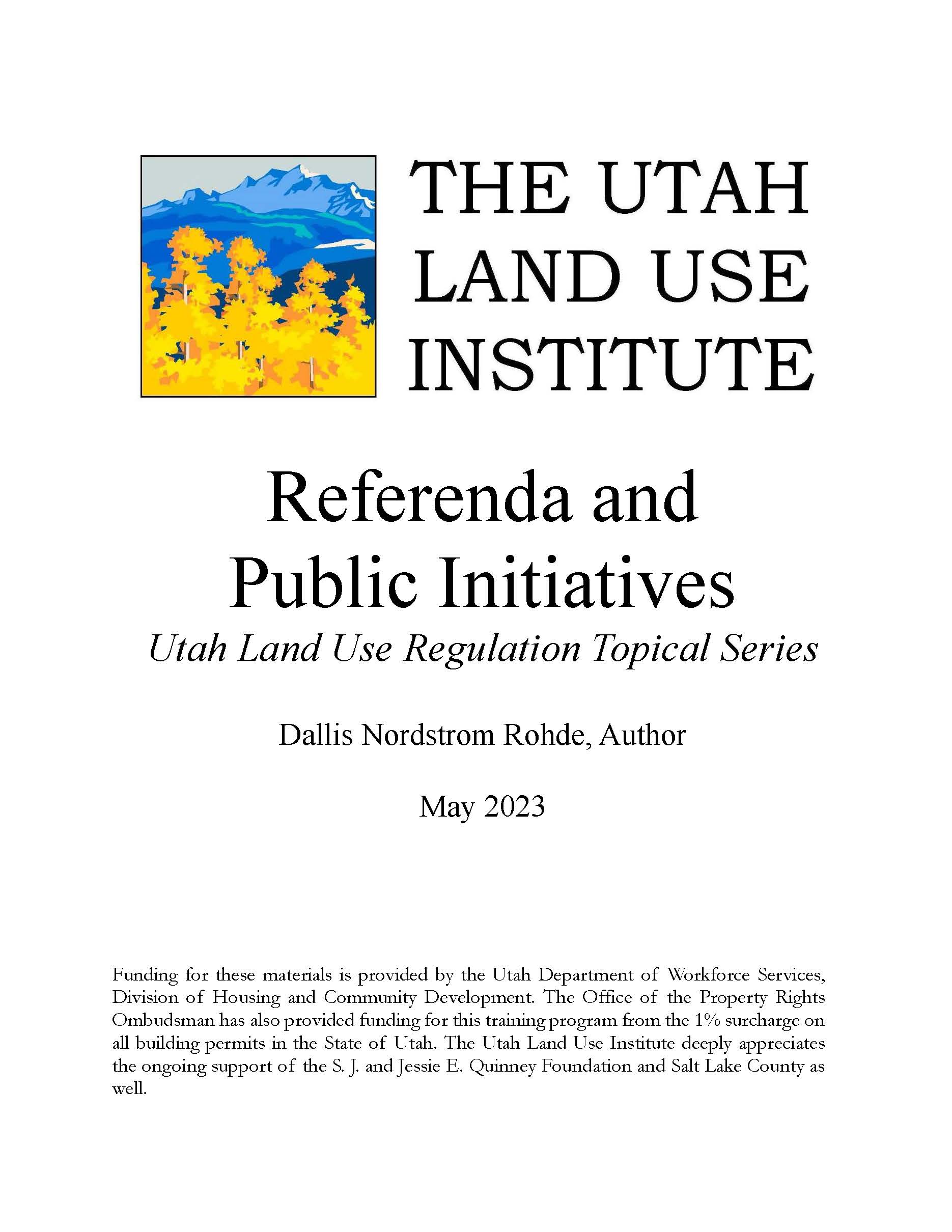
Utah was the first state to embrace direct democracy by amending the Utah Constitution in 1900 to give voters the right to initiative and referendum. ULUI's Referenda and Public Initiatives details Utah's history with these rights, and provides best practices relating to these actvities.
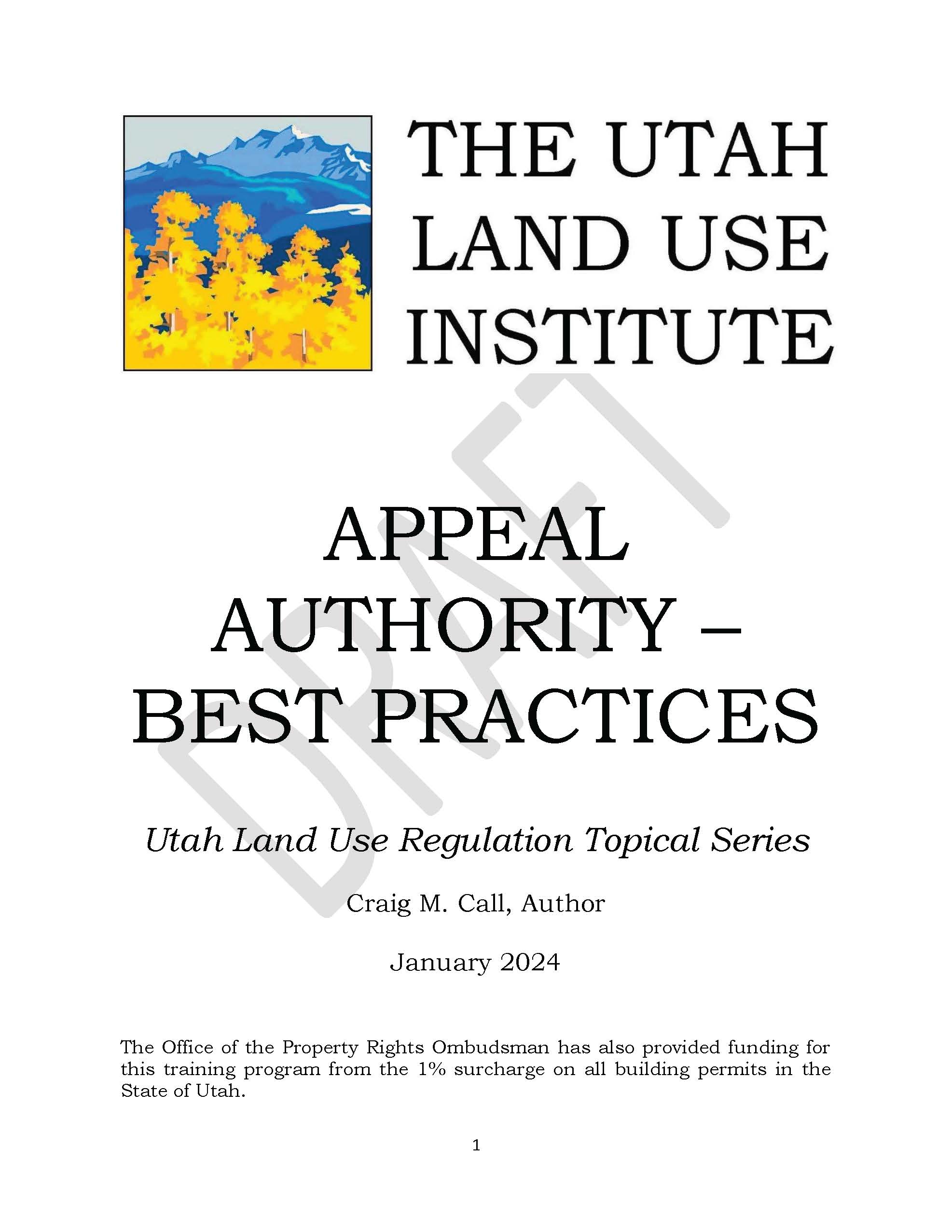
ULUI's Appeal Authority Best Practices presents a practical guide to help appeal authorities in Utah operate in the most efficient and effective manners.
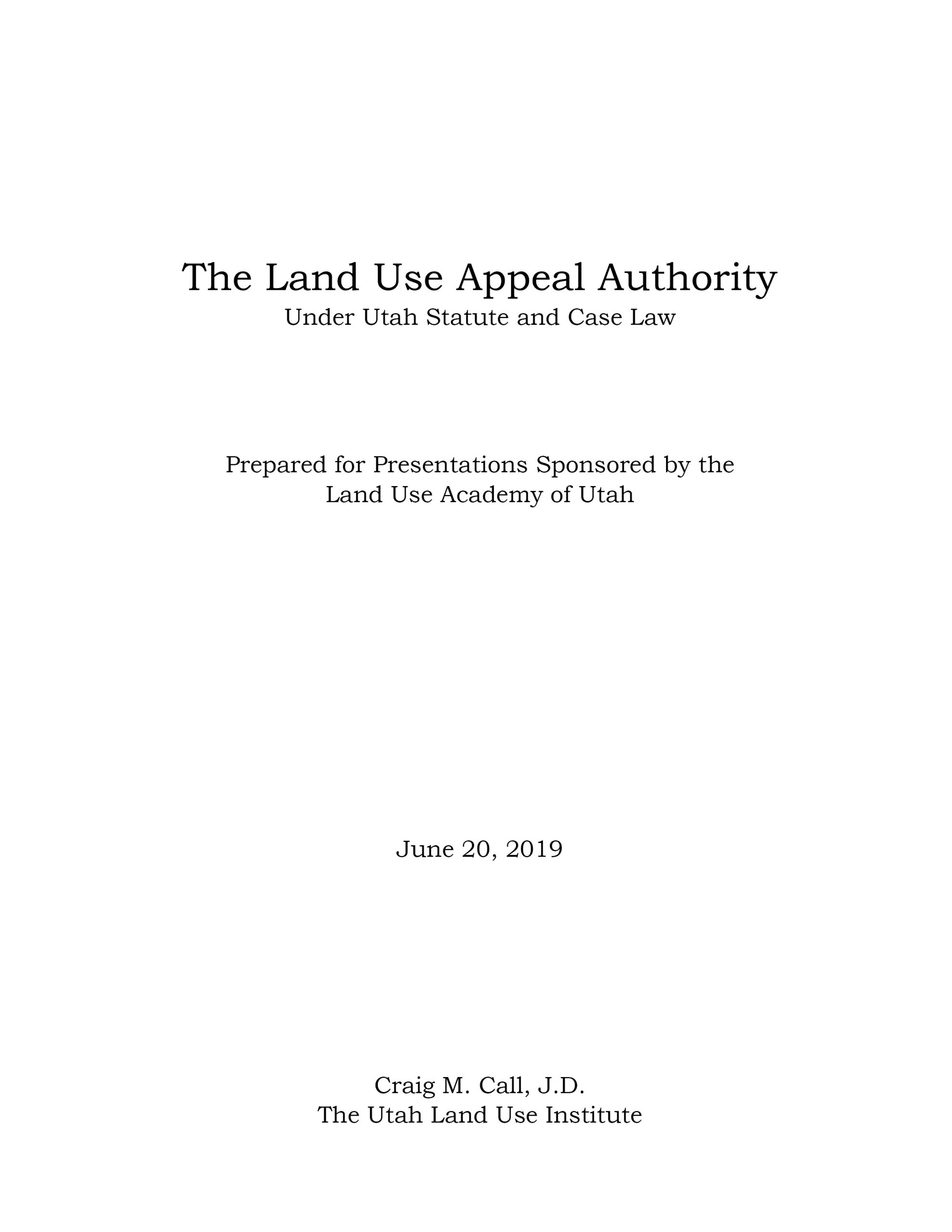
ULUI's Land Use Appeal Authority is intended to be a guide for practitioners of land use law. The guide examines definitions, cases, and statutes associated with land use appeal authority in Utah.
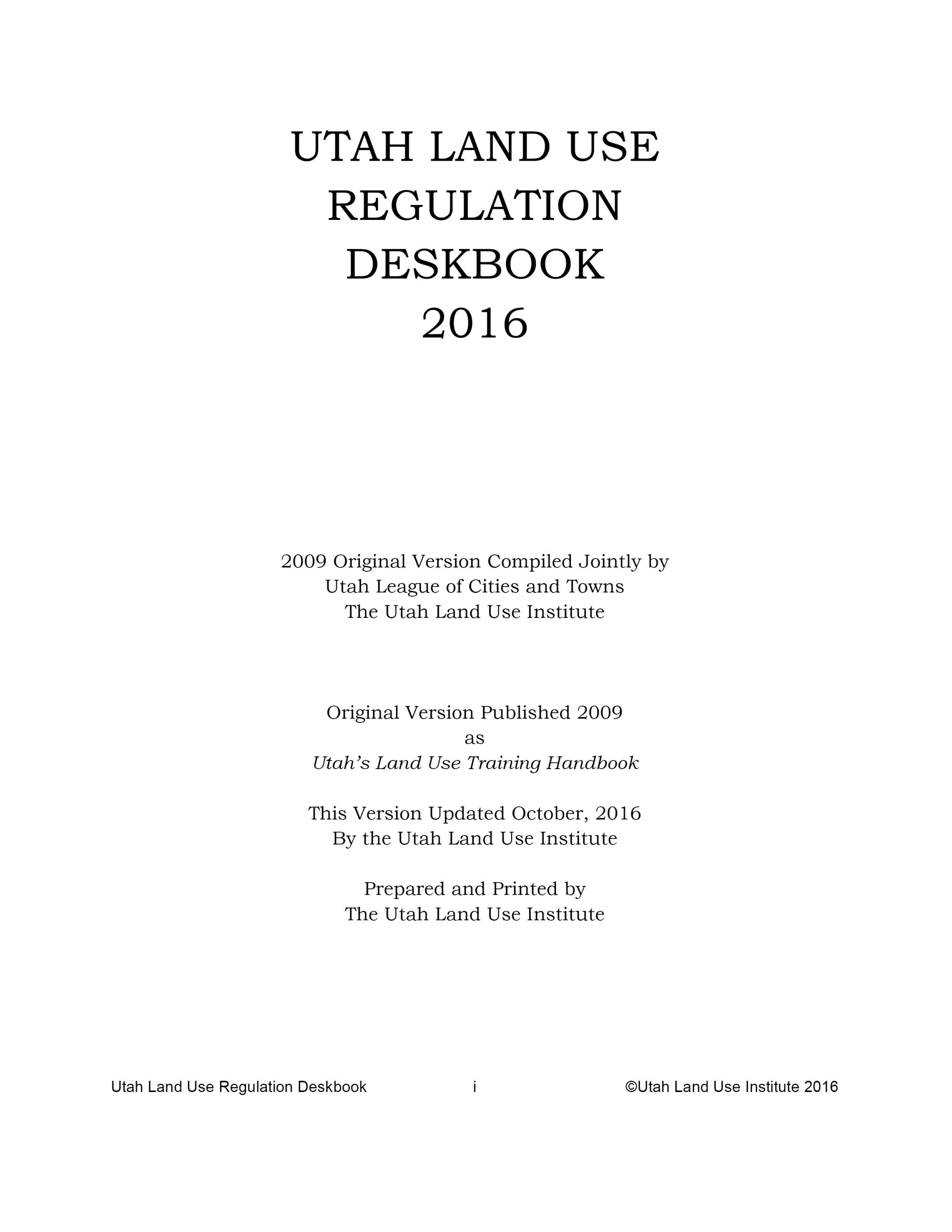
The Utah Land Use Regulation Deskbook (2016) was created as a comprehensive land use best practice and law guide for Utah's local staff and elected and appointed officials.
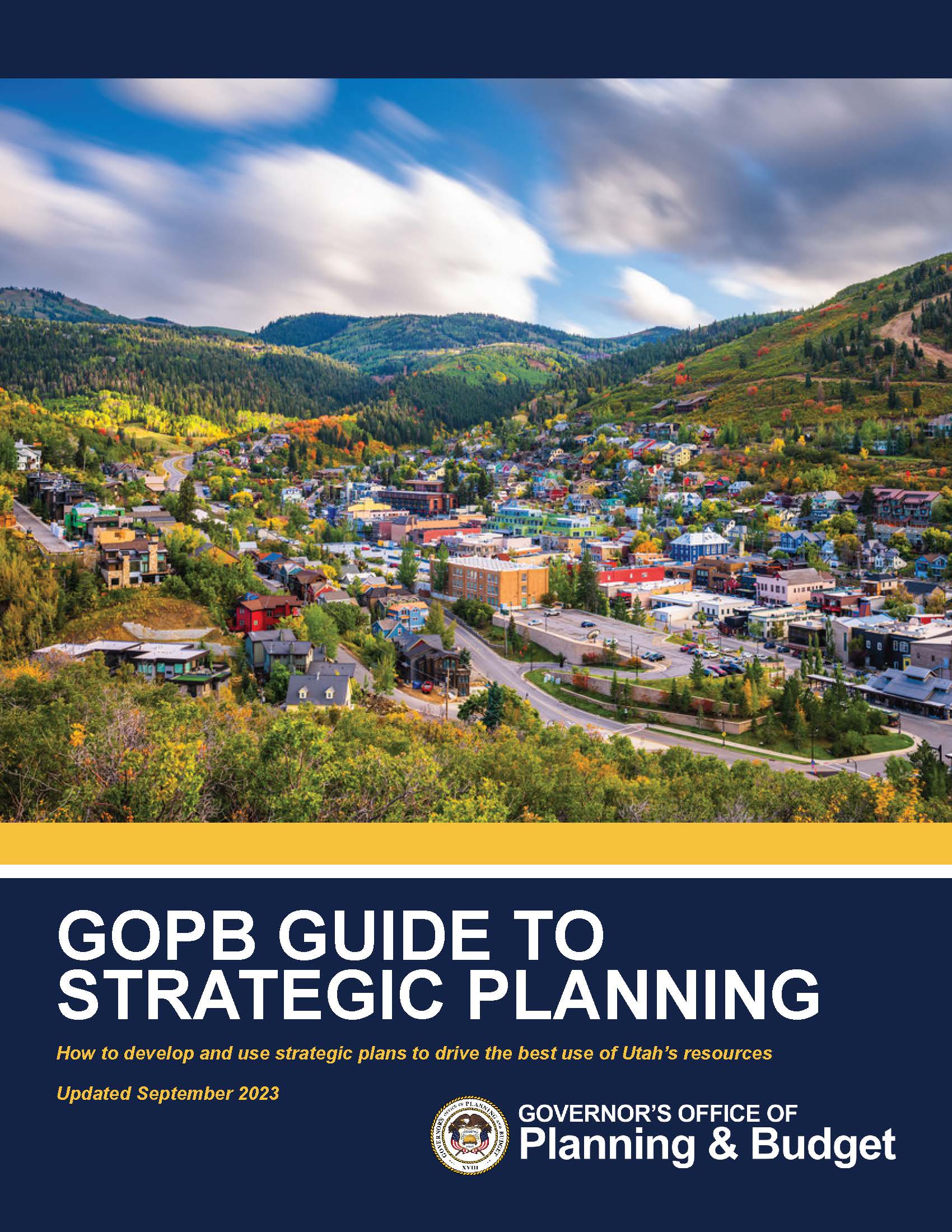
GOPB's Guide to Strategic Planning will help you establish philosophy, structure, and best practices for creating an agency strategic plan, and help agencies align priorities for statewide coordination. While it takes time and focused attention to produce, strategic planning is one of the most valuable exercises that an organization can do to promote effective work, facilitate performance measurement, and improve strategic budgeting.
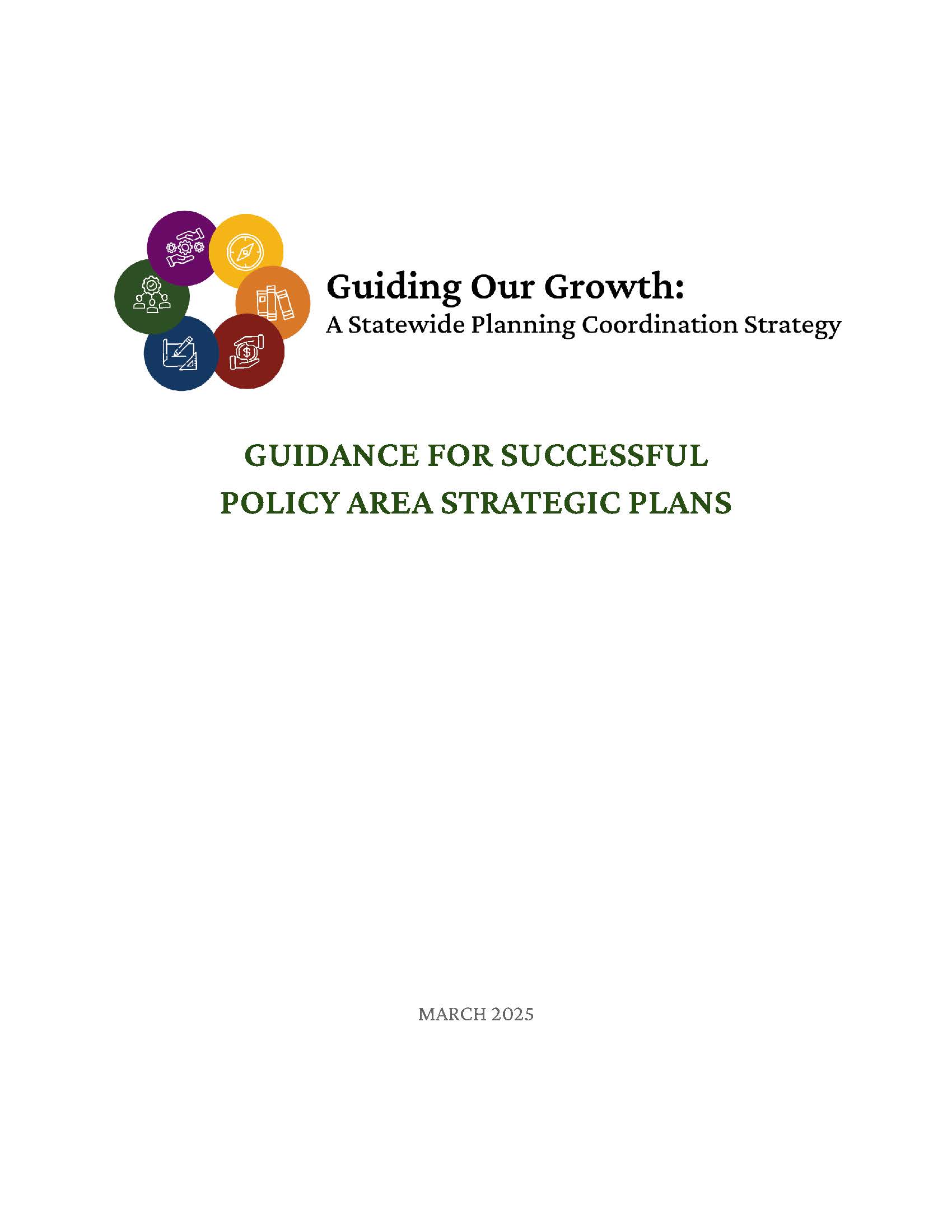
GOPB's Policy Area Strategic Planning Guidebook will help you describe goals for a specific policy area (e.g. transportation, water, aging, Olympics) and what is needed to accomplish those goals. These plans will likely involve more than one state agency and external stakeholders, and may have a planning horizon of up to 30 years.
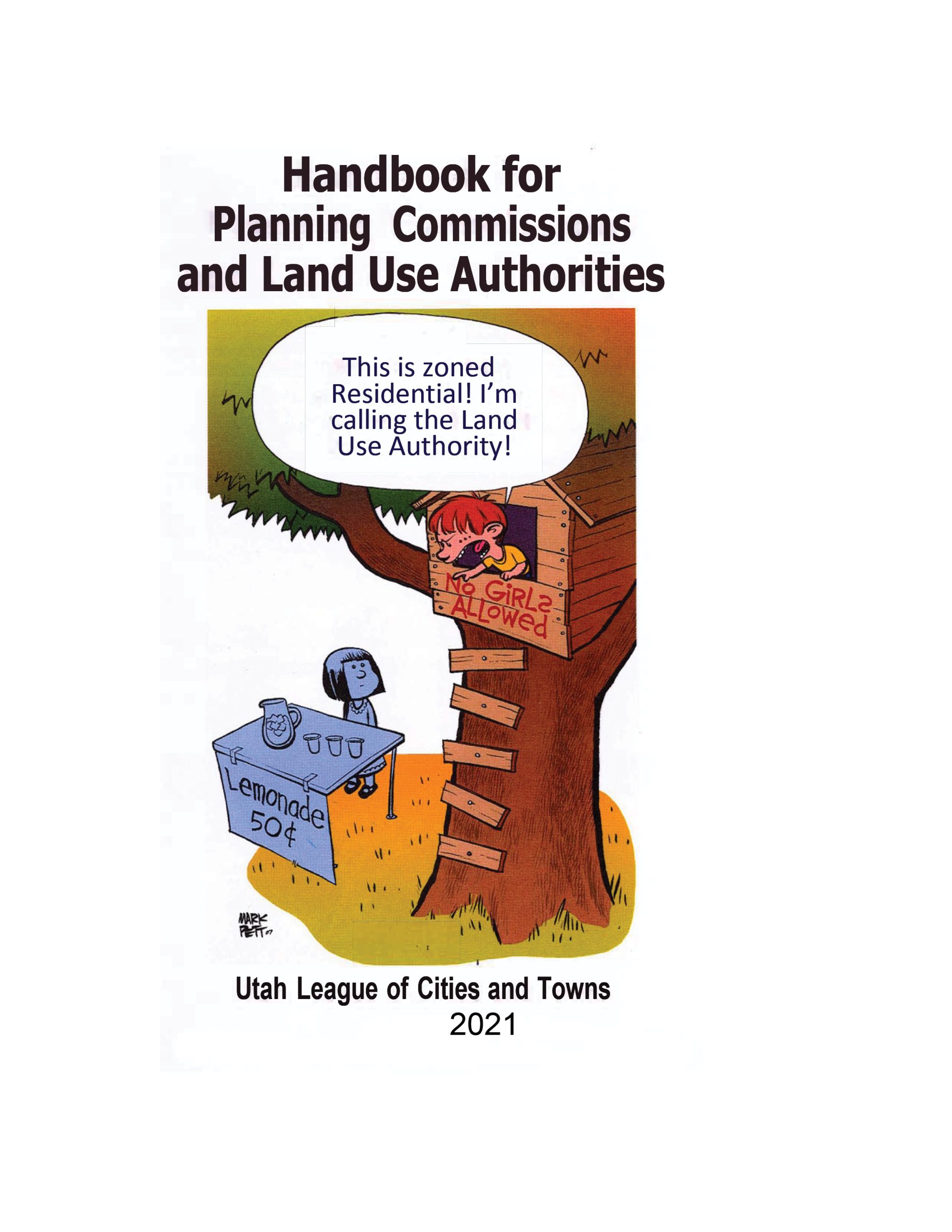
ULCT's Handbook for Planning Commissioners and Land Use Authorities answers the questions about the duties, responsibilities, liabilities, and limitations in the role of a Planning Commissioner.
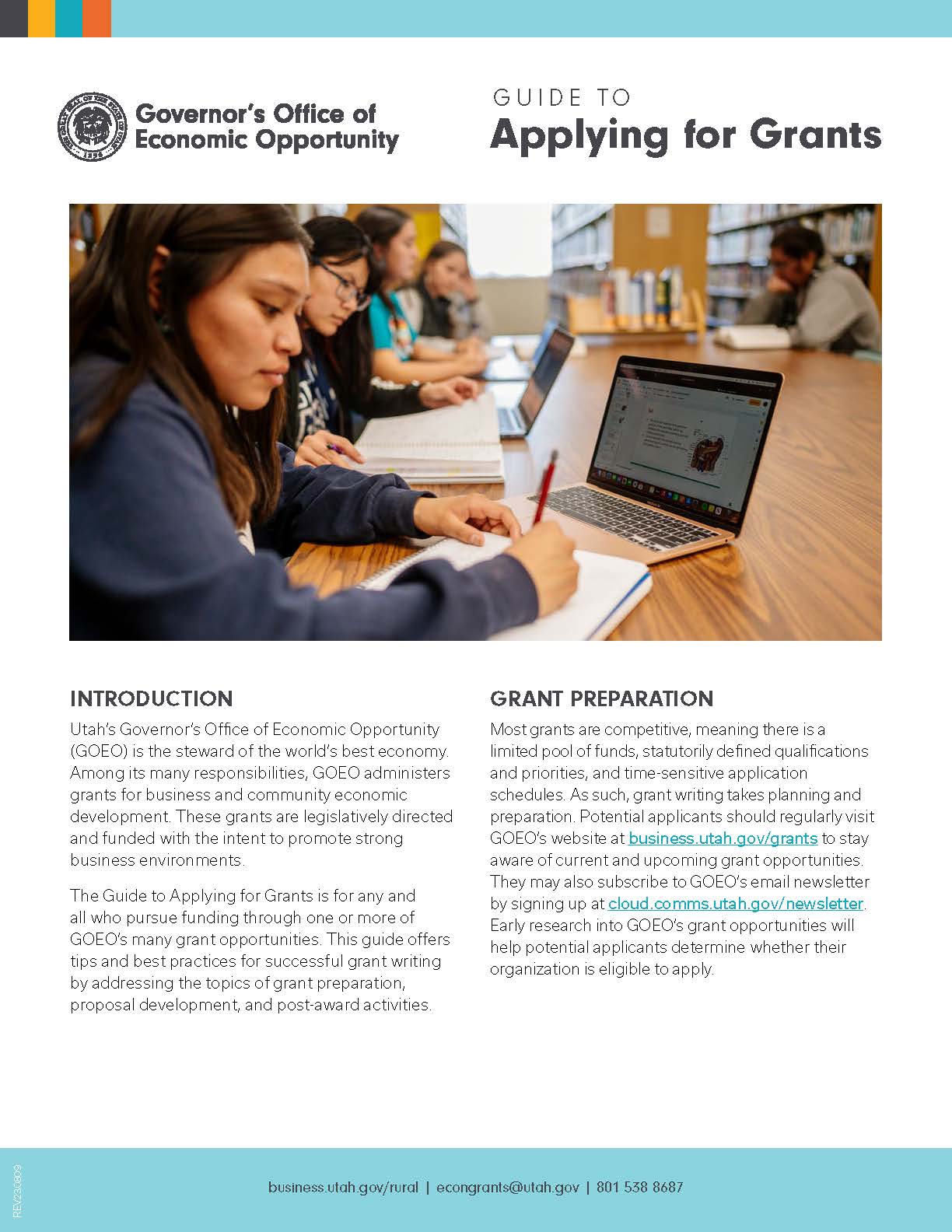
The Governor's Office of Economic Opportunity's Guide to Applying for Grants offers tips and best practices for successful grant writing.
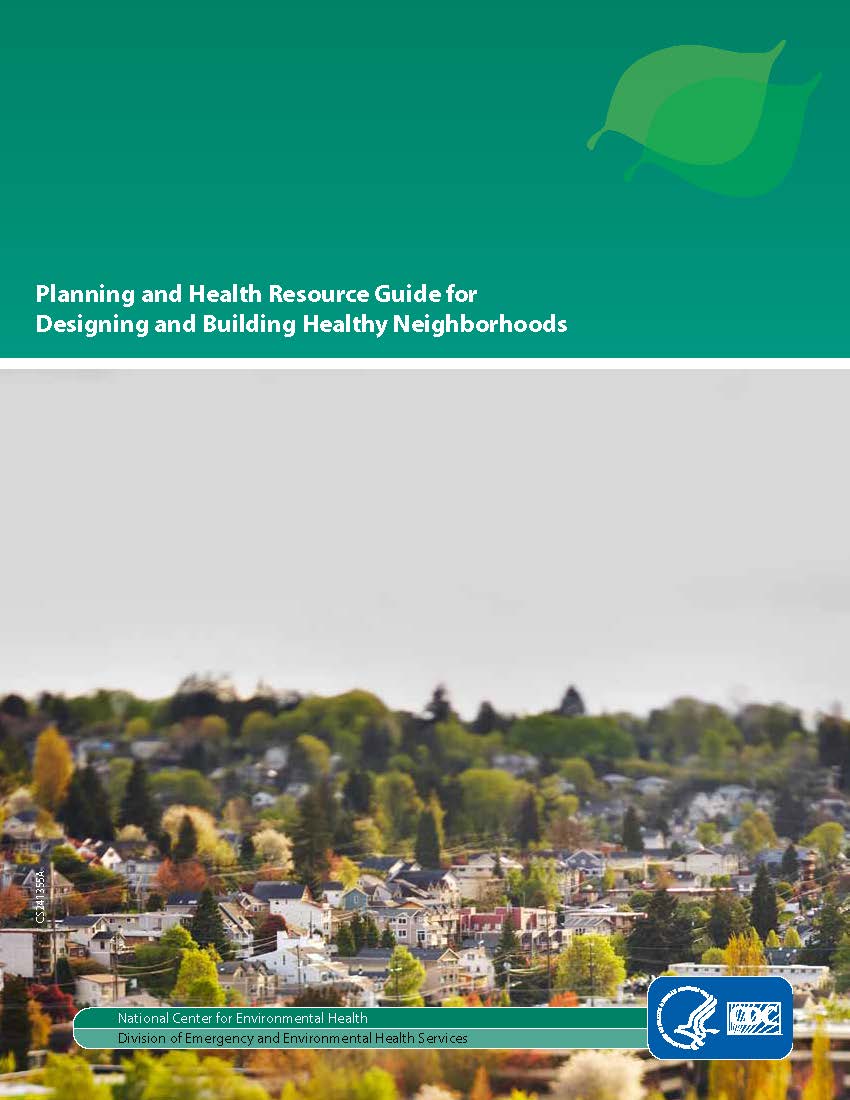
The Center for Disease Control's Planning and Health Resource Guide for Designing and Building Healthy Communities offers resources for designing and building communities that positively impact physical and mental health.
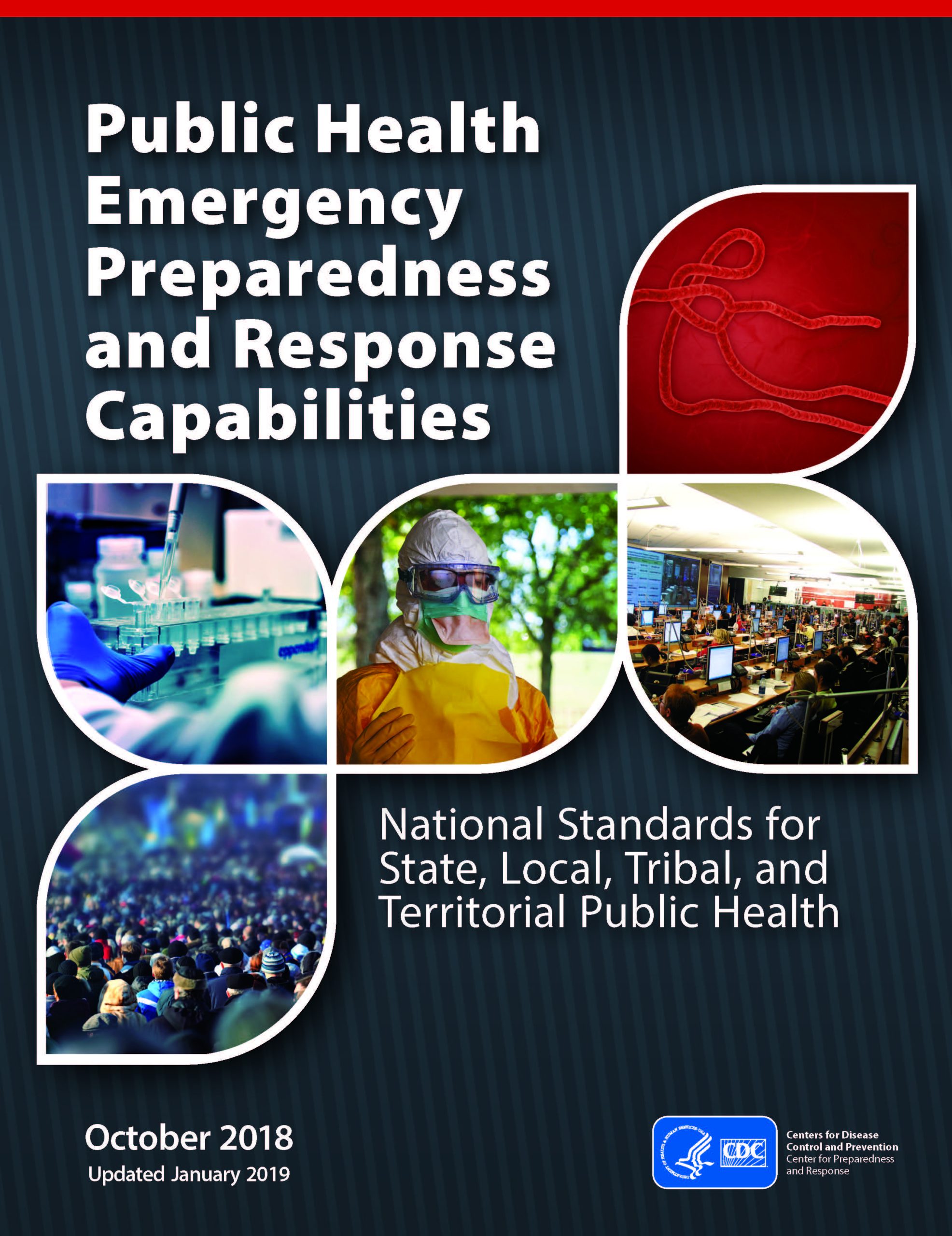
The Center for Disease Control's (CDC) Public Health Emergency Preparedness and Response Capabilities provides national standards guidance for state, local, tribal, and territorial public health.
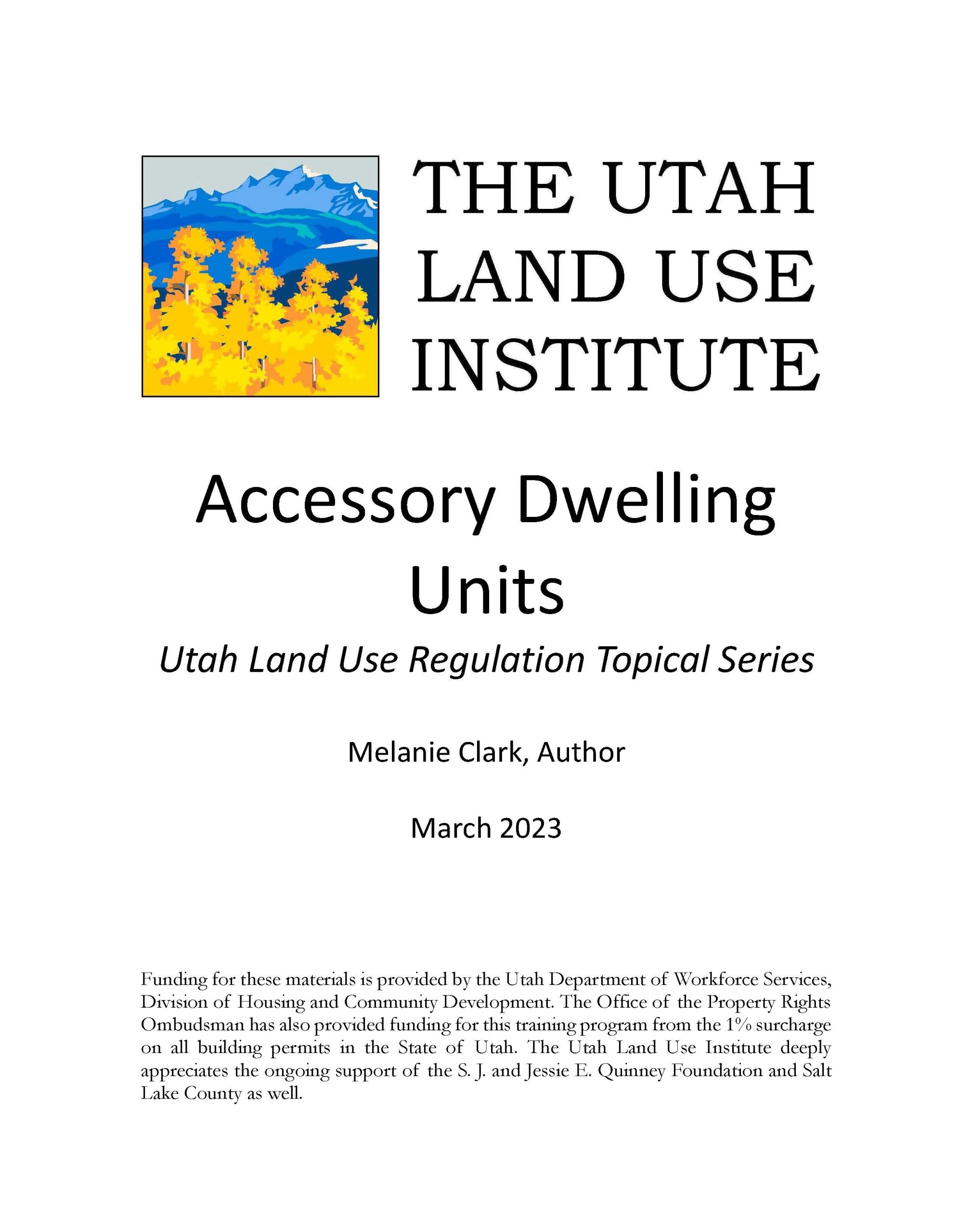
The Utah Legislature has recently stepped in to encourage more use of “ADU’s”. The Utah Land Use Institute's Accessory Dwelling Units outline is meant to inform local decision makers as well as land use applicants and neighbors about the laws related to ADU’s. This outline concludes with considerations in making decisions related to ADU’s and tips for implementing ADU regulations.
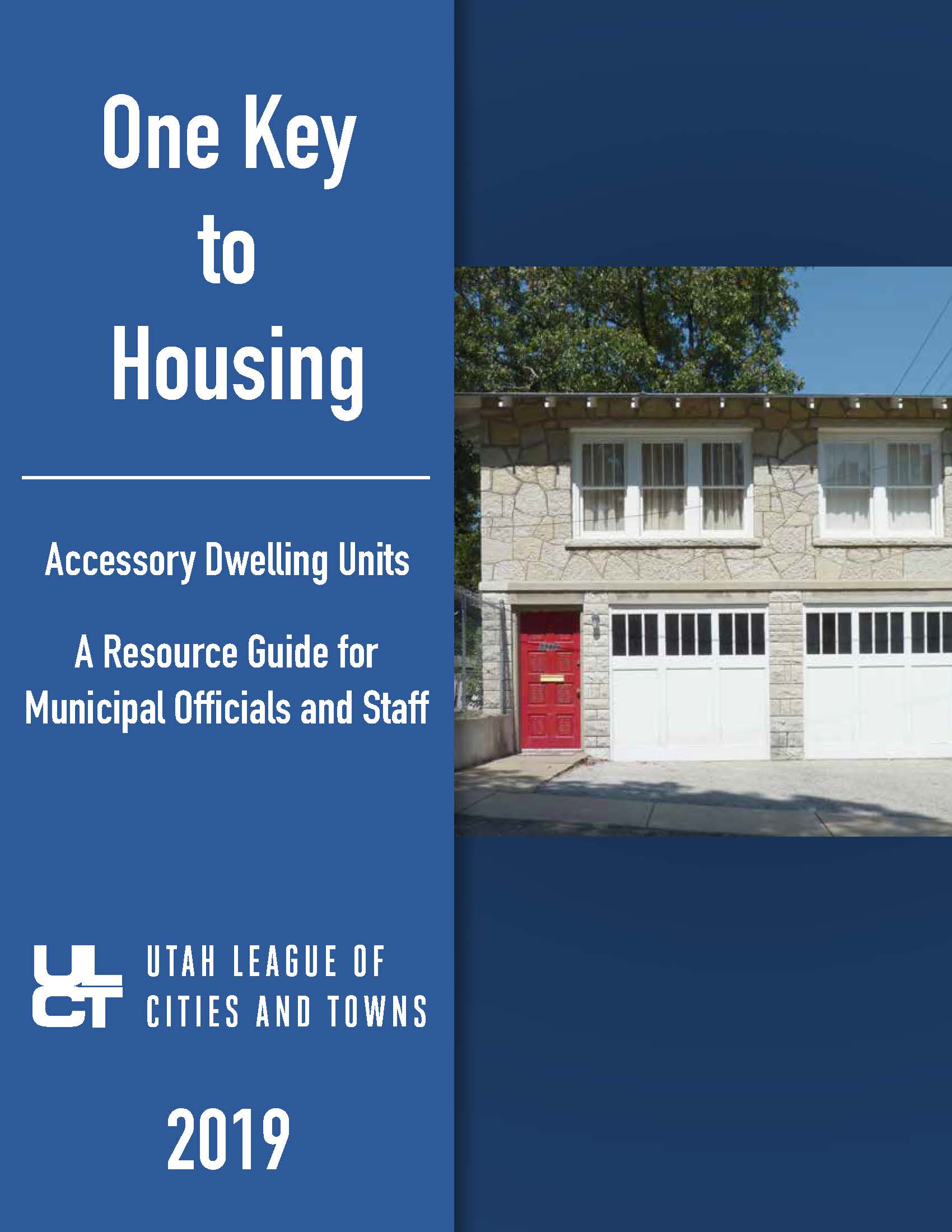
ULCTs One Key to Housing: Accessory Dwelling Units serves as a resource guide for municipal officers and staff to consider the changes and trends in housing and how agencies can work to accommodate more options for residents throughout their communities.
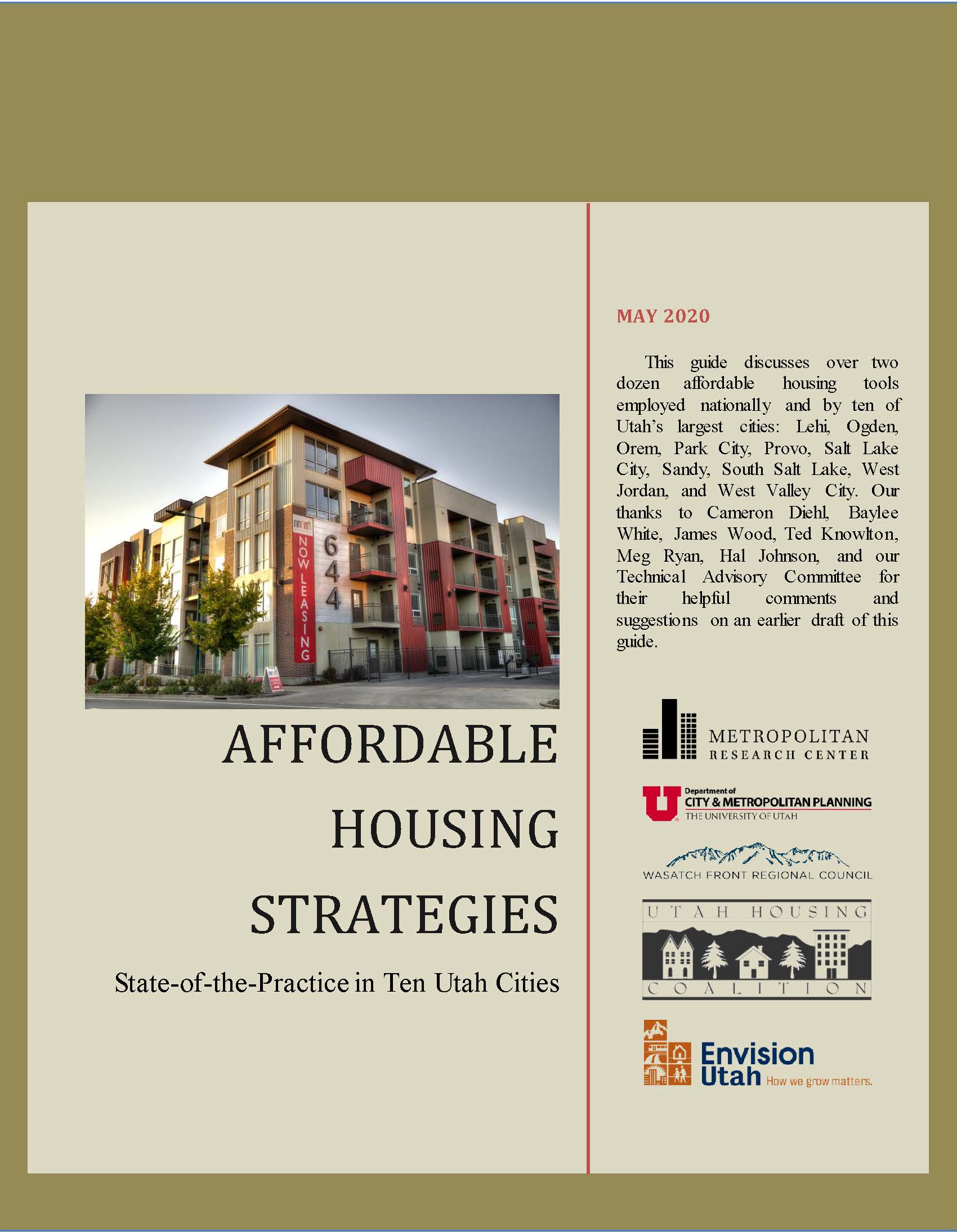
The Affordable Housing Strategies Guide discusses over two dozen affordable housing tools employed nationally and by ten of Utah’s largest cities: Lehi, Ogden, Orem, Park City, Provo, Salt Lake City, Sandy, South Salt Lake, West Jordan, and West Valley City.
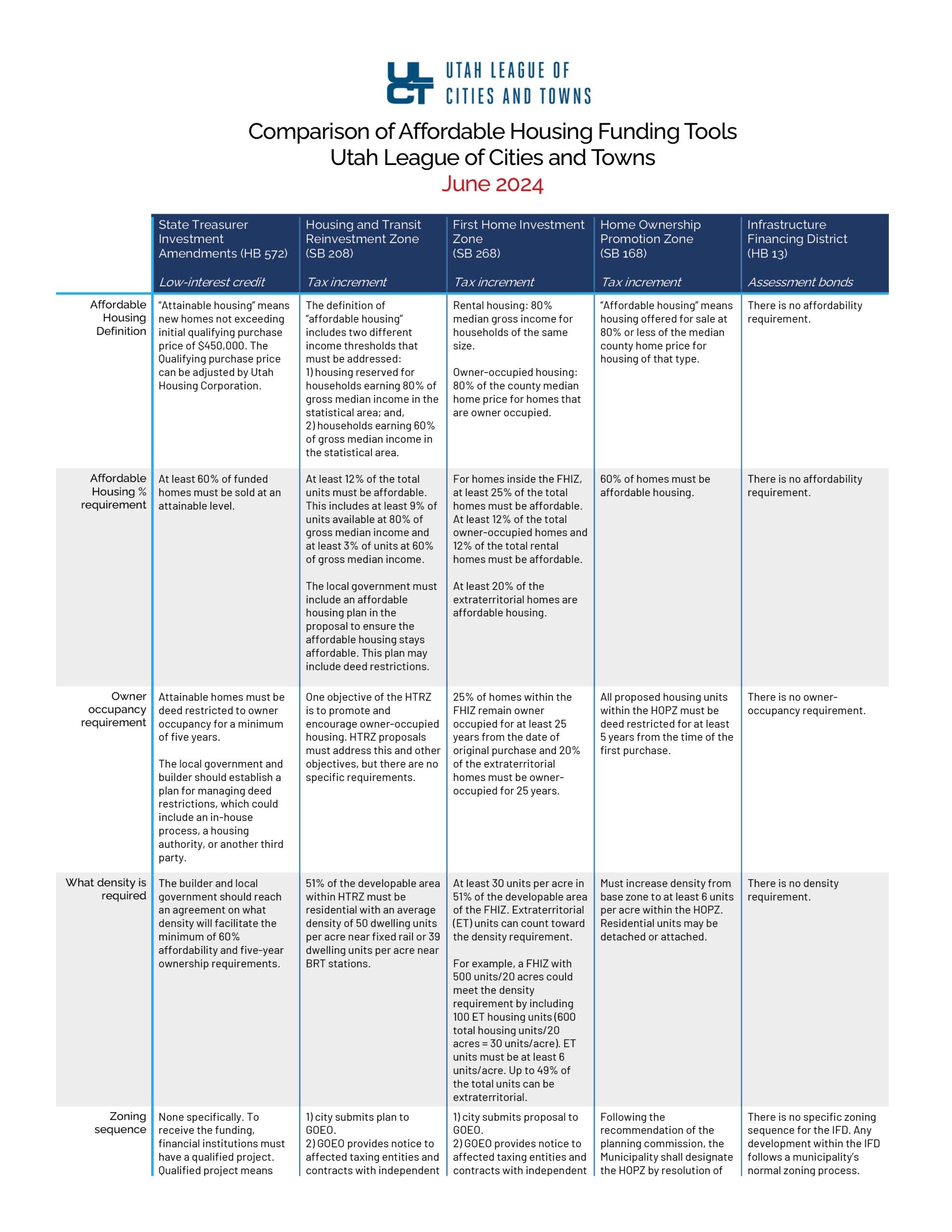
ULCT's Housing Financing Tools Comparison Chart (June 2024) provides a quick reference for housing finance options made available through legislative actions undertaken over the last several years in Utah. Contact info for League staff is also included to allow for quick connection.
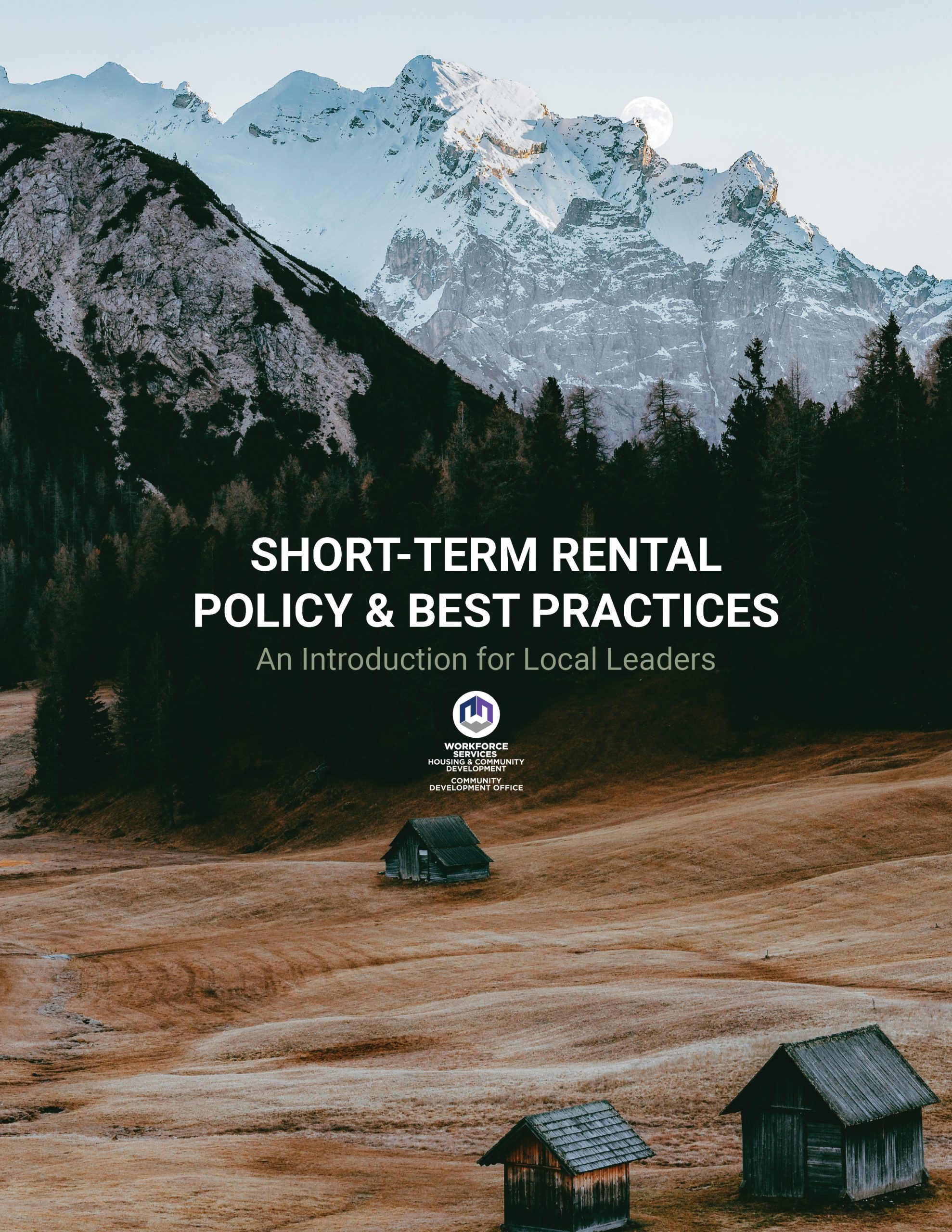
The Short-Term Rental Policy & Best Practices - An Introduction for Local Leaders guide is intended to help communities understand and make informed decisions about regulating short-term rentals (STRs). From writing a STR ordinance to incentivizing compliance, this guide serves as a tool for your community as you formulate your own ordinance.
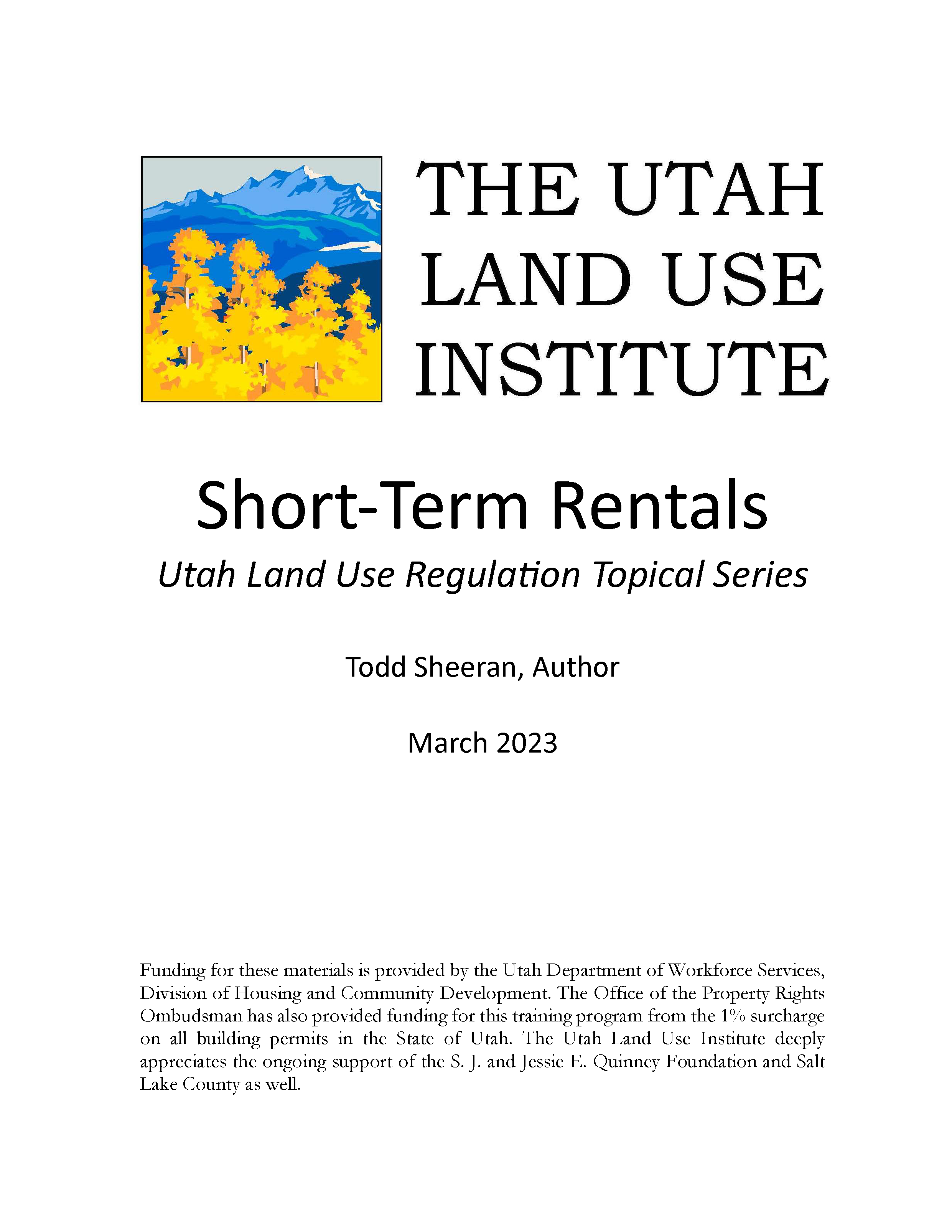
The Utah Land Use Institute's Short-Term Rentals (STRs) outline is meant to inform local decision-makers, land use applicants, and neighbors about the laws related to STRs. This outline includes details associated with STR laws, their impacts, and considerations for local agencies when regulating them.
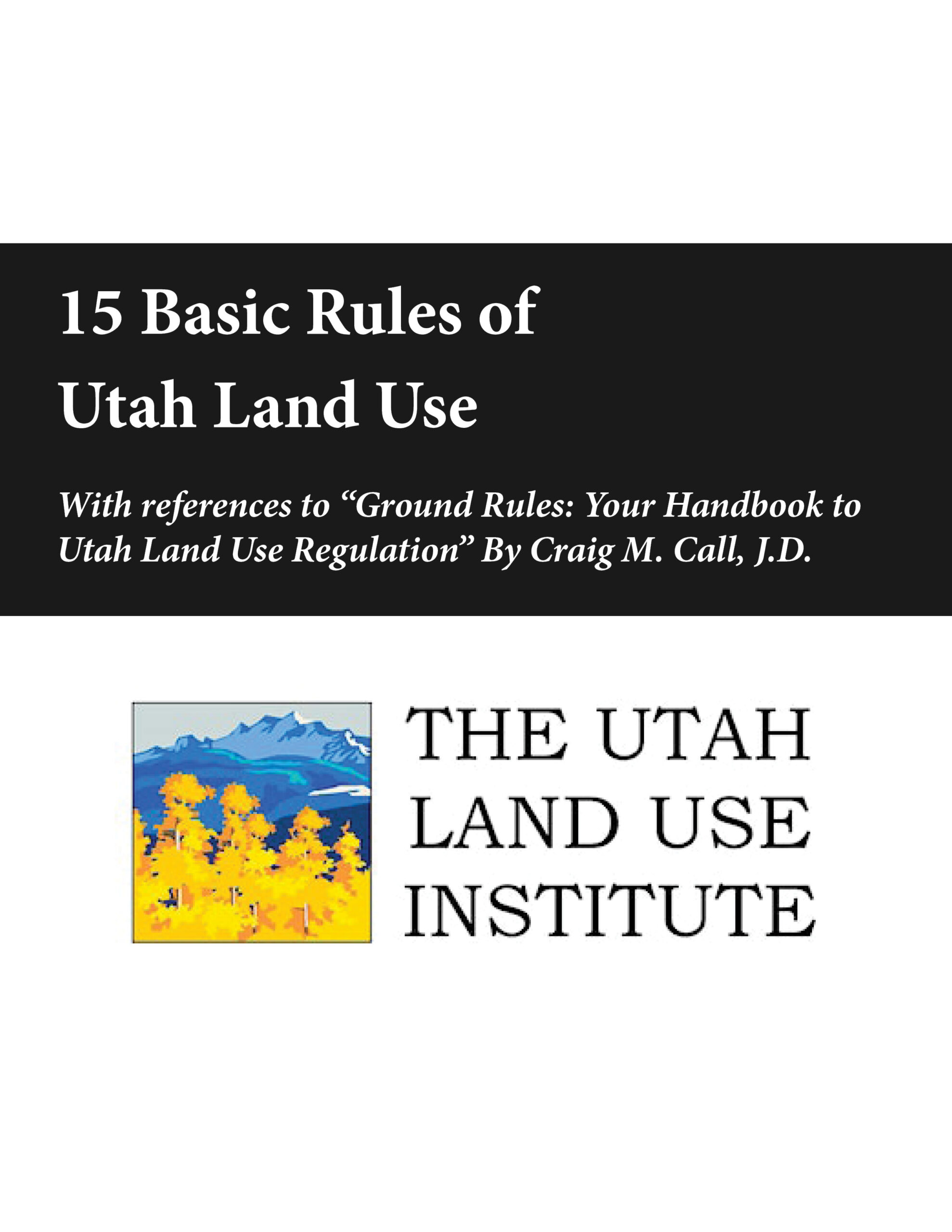
ULUI's 15 Basic Rules of Utah Land Use lays out the foundational topics to understand as a land use professional in Utah. The brief guide references "Ground Rules: Your Handbook to Utah Land Use Regulation," authored by the ULUI Executive Director, Craig M. Call, J.D.
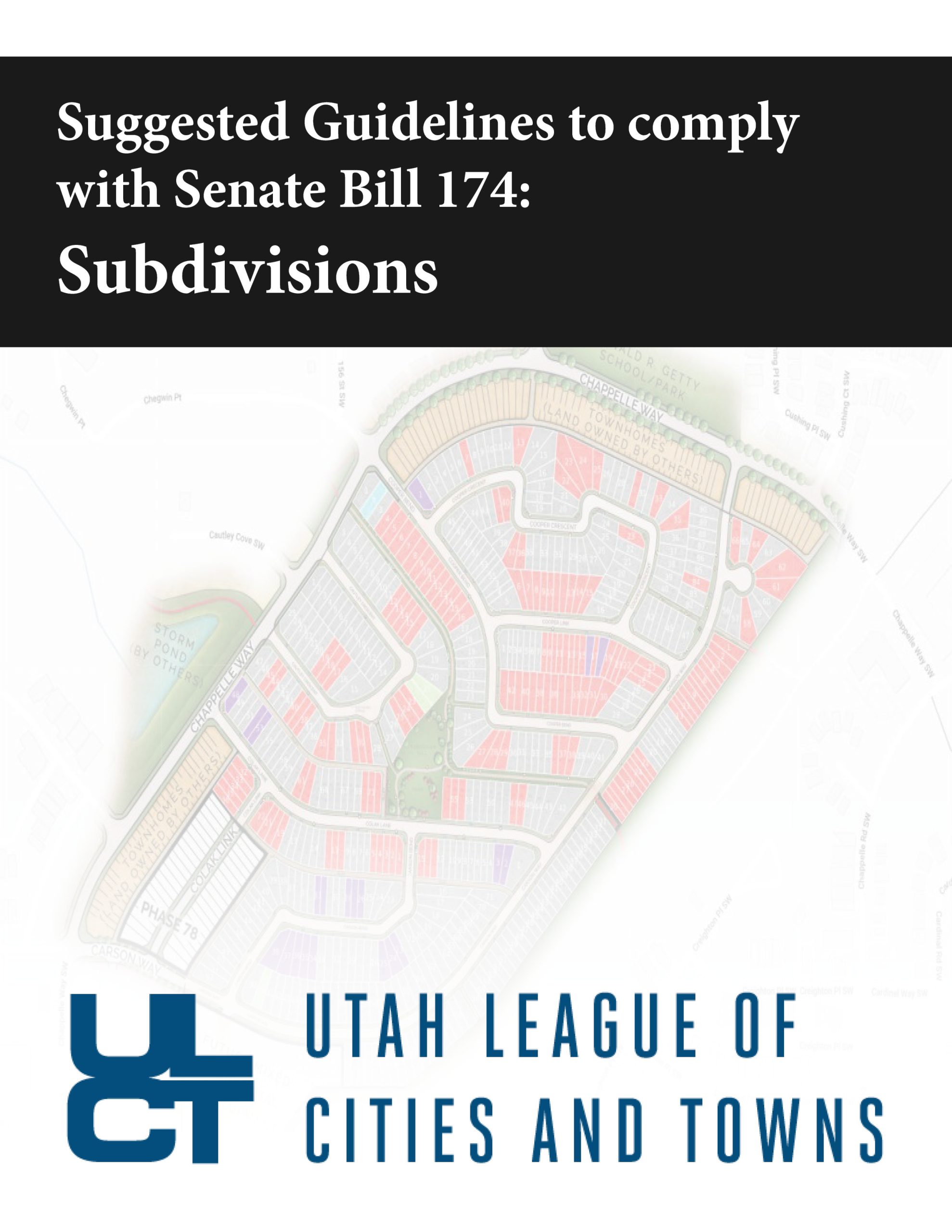
ULCT's Suggested Guidelines to comply with Senate Bill 174 (2023) Subdivision Process for Single Family, Two Family and Townhome Dwellings only provides a template for local agencies to use when addressing needed changes to their current process following the passage of Senate Bill 174.

ULCT's 2024 Land Use Compliance Checklist details the most common concerns that ULCT hears at the capitol about city compliance with recent land use laws.
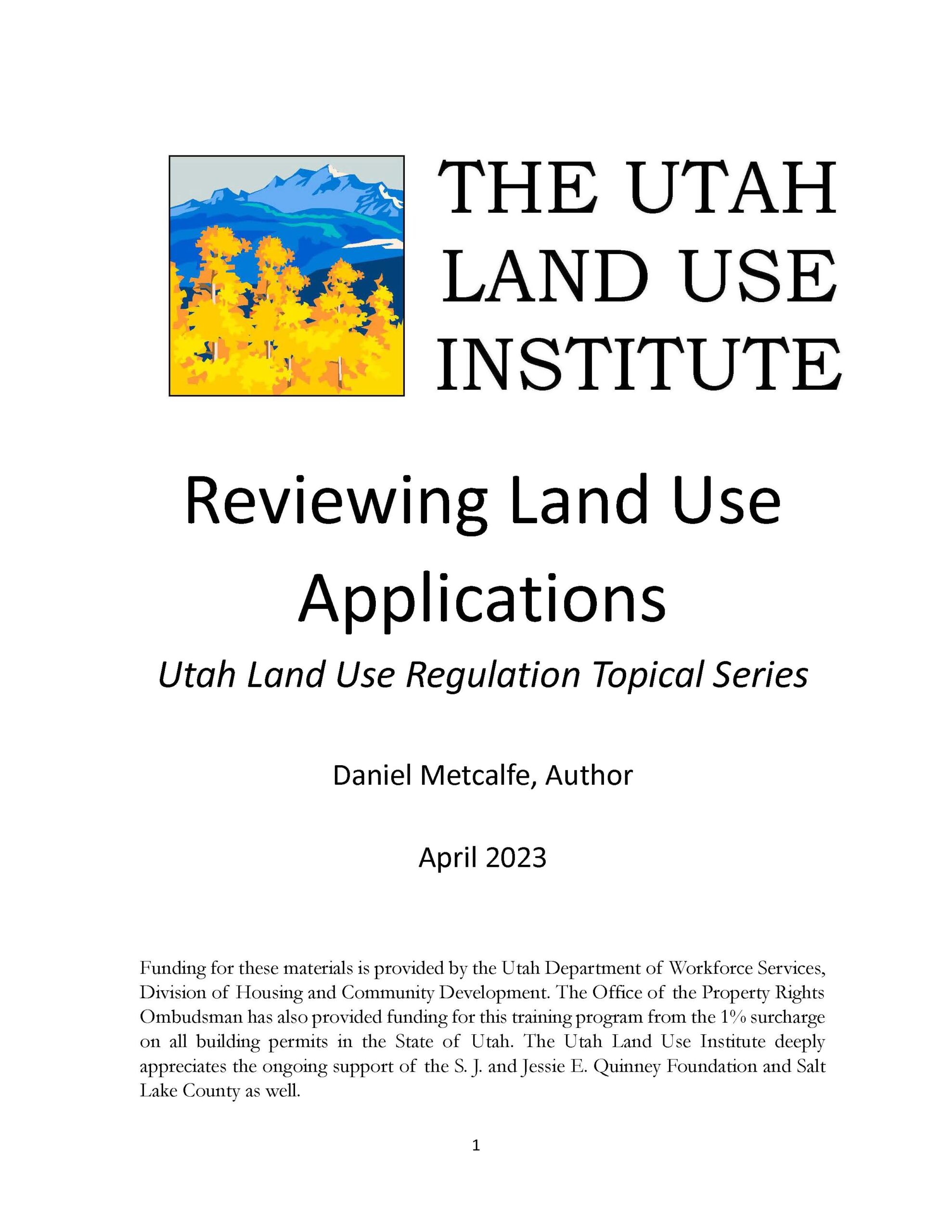
ULUI's Reviewing Land Use Applications details standard decision-making procedures that will enable a City, an applicant, and the public to reasonably review land use applications and participate in the local decision-making process in a timely and effective way; while maintaining compliance with applicable State and local laws and preserving the interests of the community.
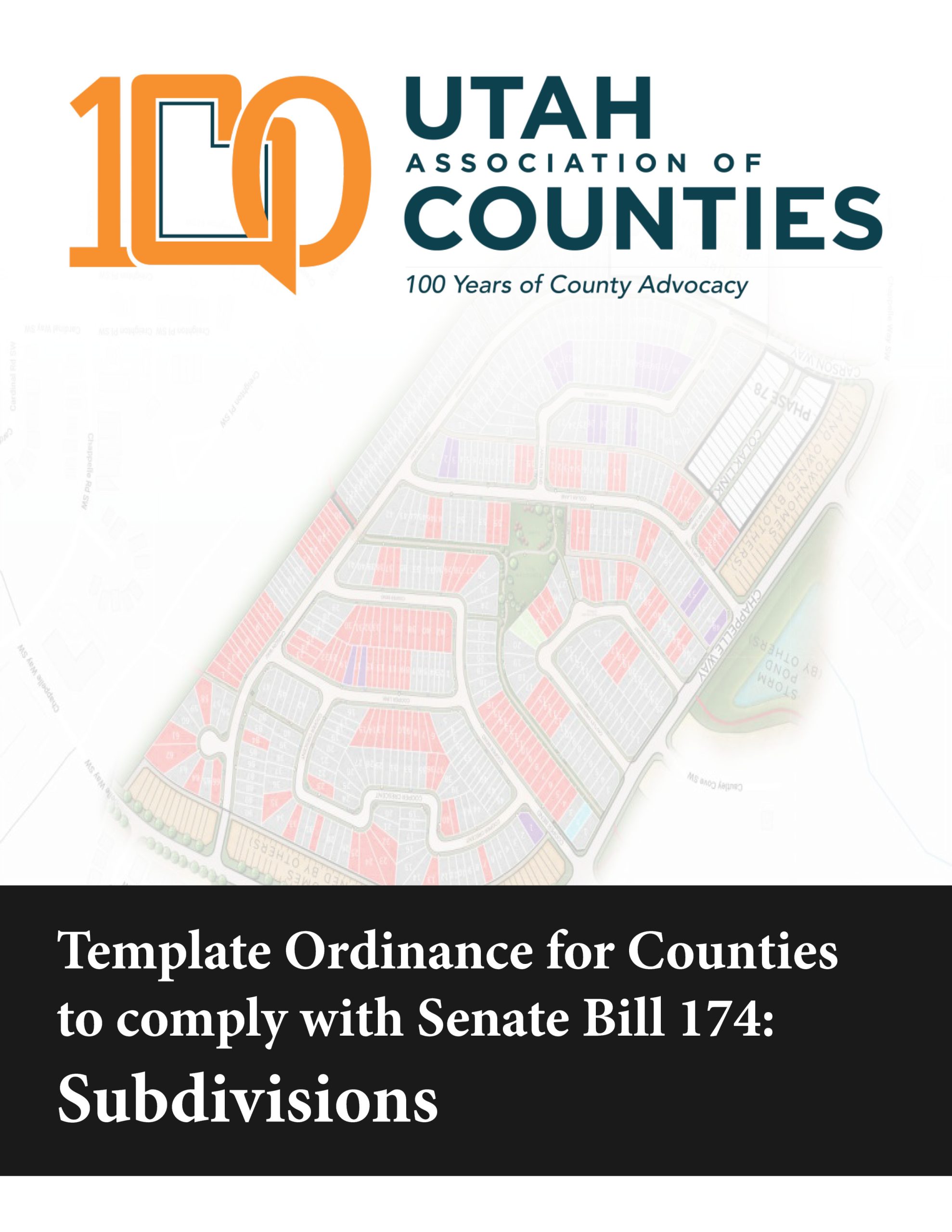
UAC's Template Ordinance for Counties to comply with Senate Bill 174 (2023) Subdivision Process for Single Family, Two Family and Townhome Dwellings only provides a template for counties to use when addressing needed changes to their current process following the passage of Senate Bill 174.
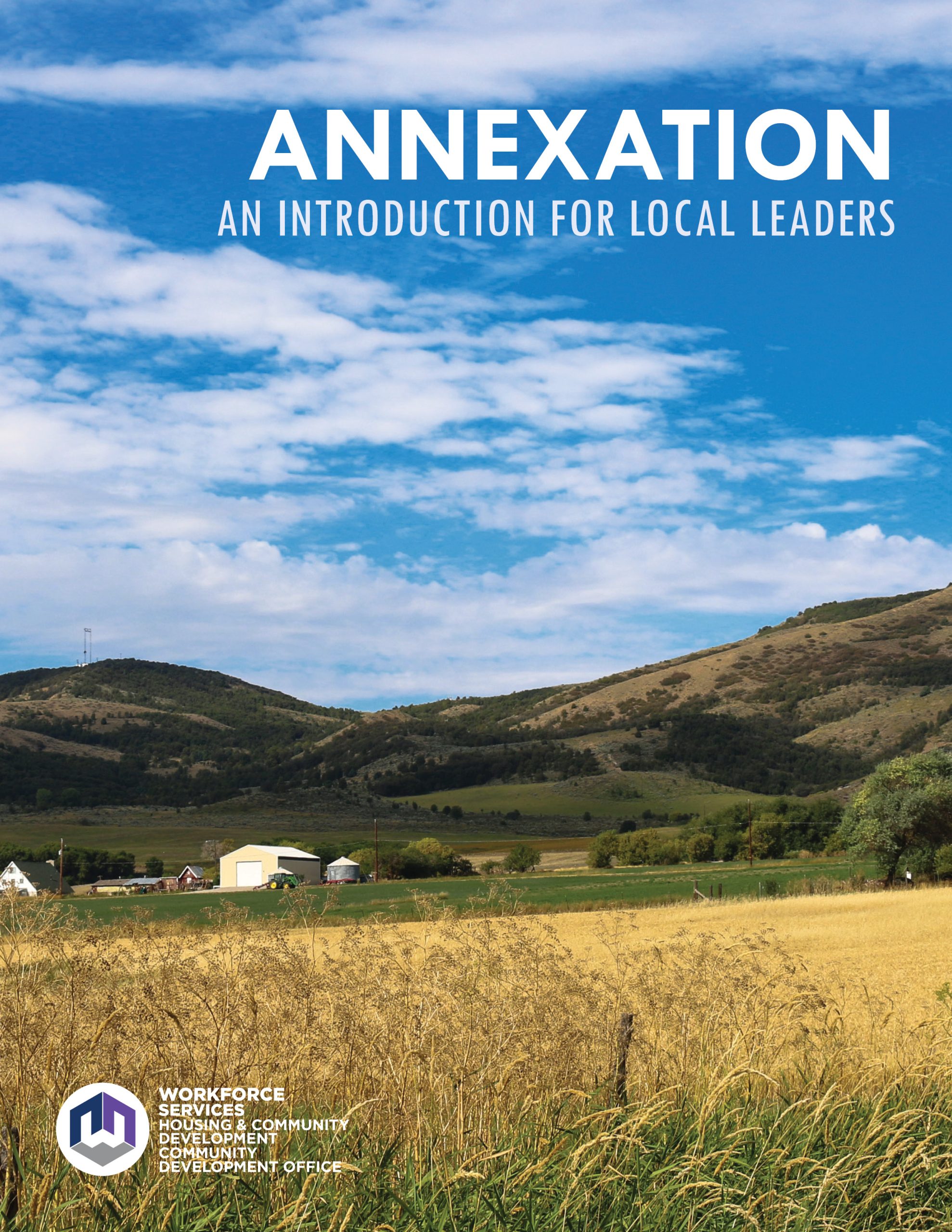
Annexation can be a daunting prospect for small cities with limited planning and administrative capacity. The Annexation - An Introduction for Local Leaders guide will help elected officers understand the basics of municipal annexation and provide guidelines on what to consider when making annexation decisions.
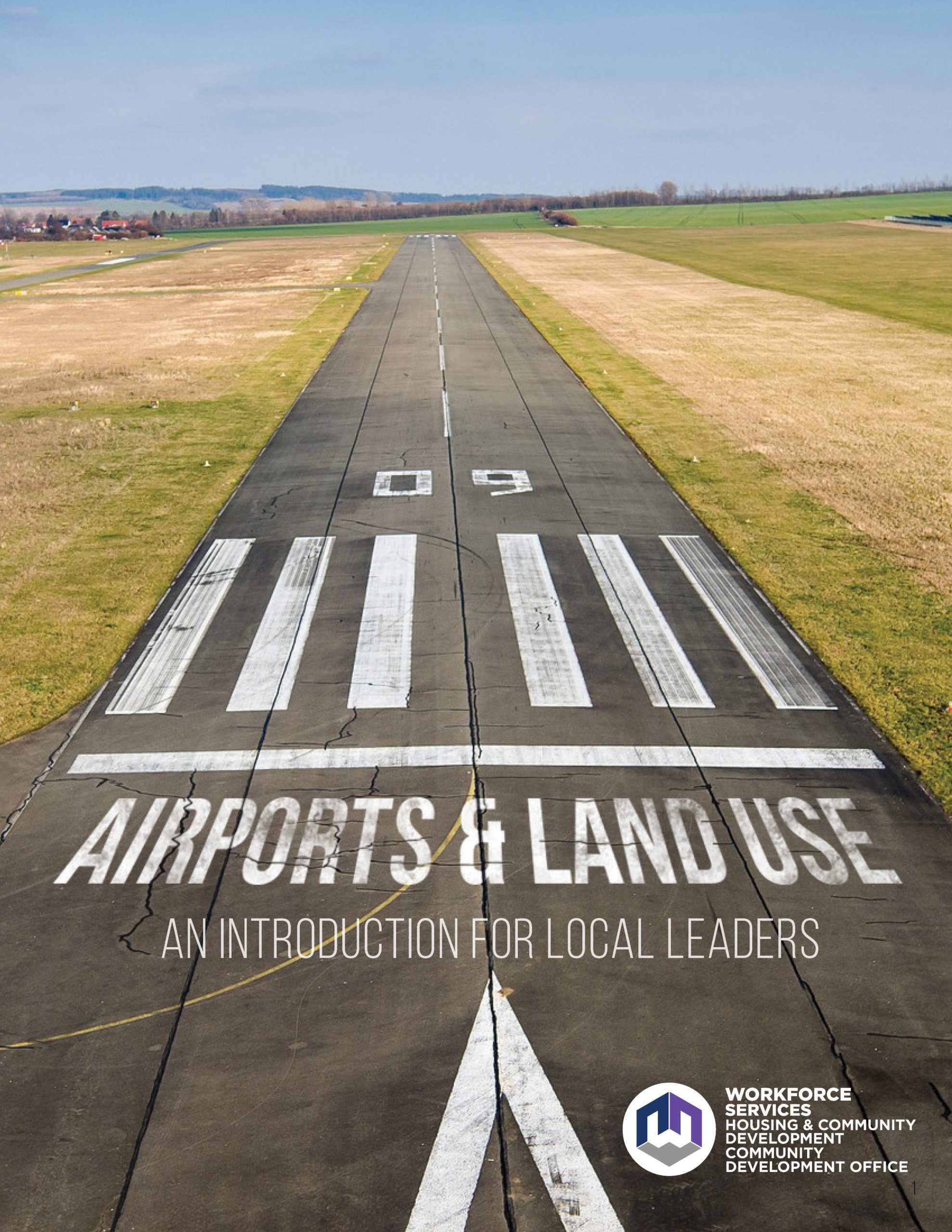
Airports & Land Use - An Introduction for Local Leaders was expressly created with Utah’s rural communities in mind—particularly those communities who already operate or want to operate an airport. It provides a brief introduction to key considerations that local leaders need to understand about land use planning for airports.
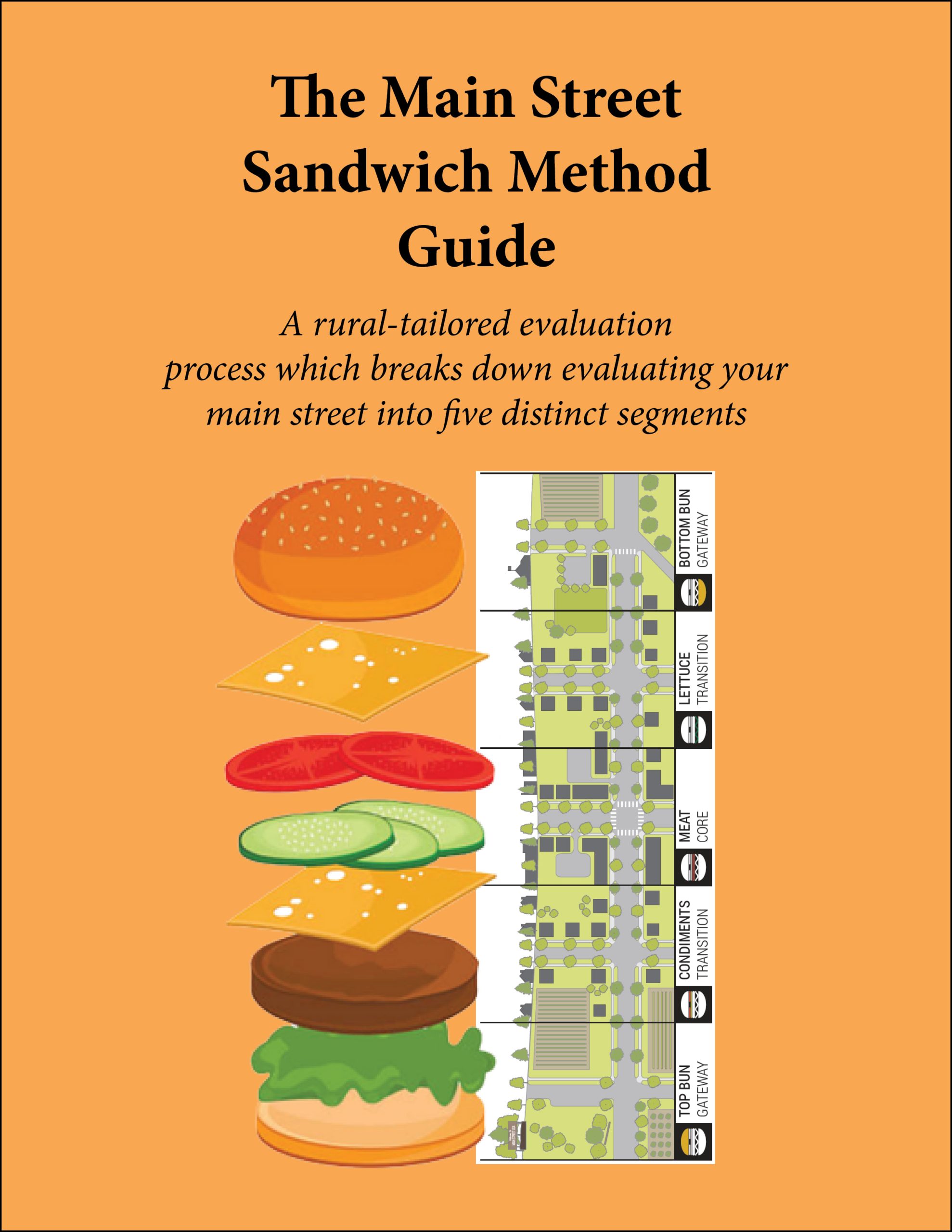
The Main Street Sandwich Method is a rural-tailored evaluation process to help those not otherwise familiar with planning or main street design understand and critique their town’s main street.
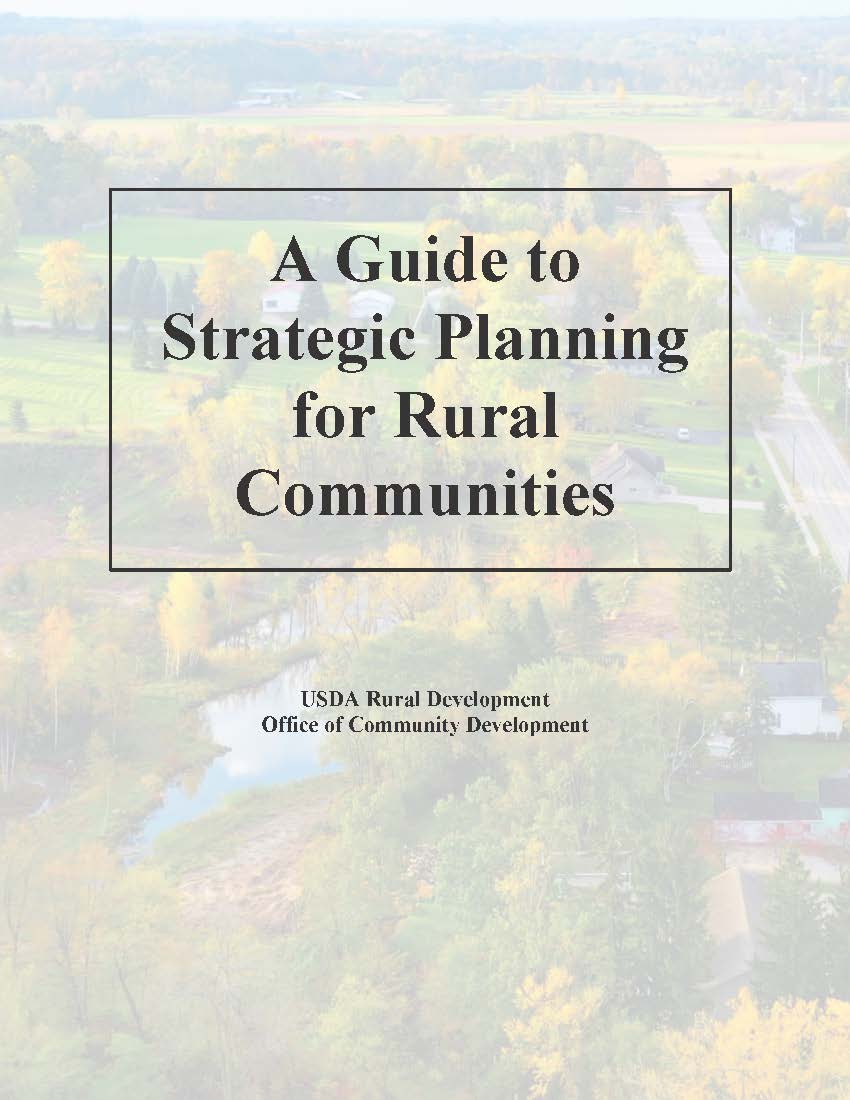
The strategic plan is a useful tool for any community that wishes to change and grow - especially for rural cities and towns. A plan will help you see where you want to go and help you make decisions on how to get there. The Guide to Strategic Planning for Rural Communities will help you choose a path for your community.
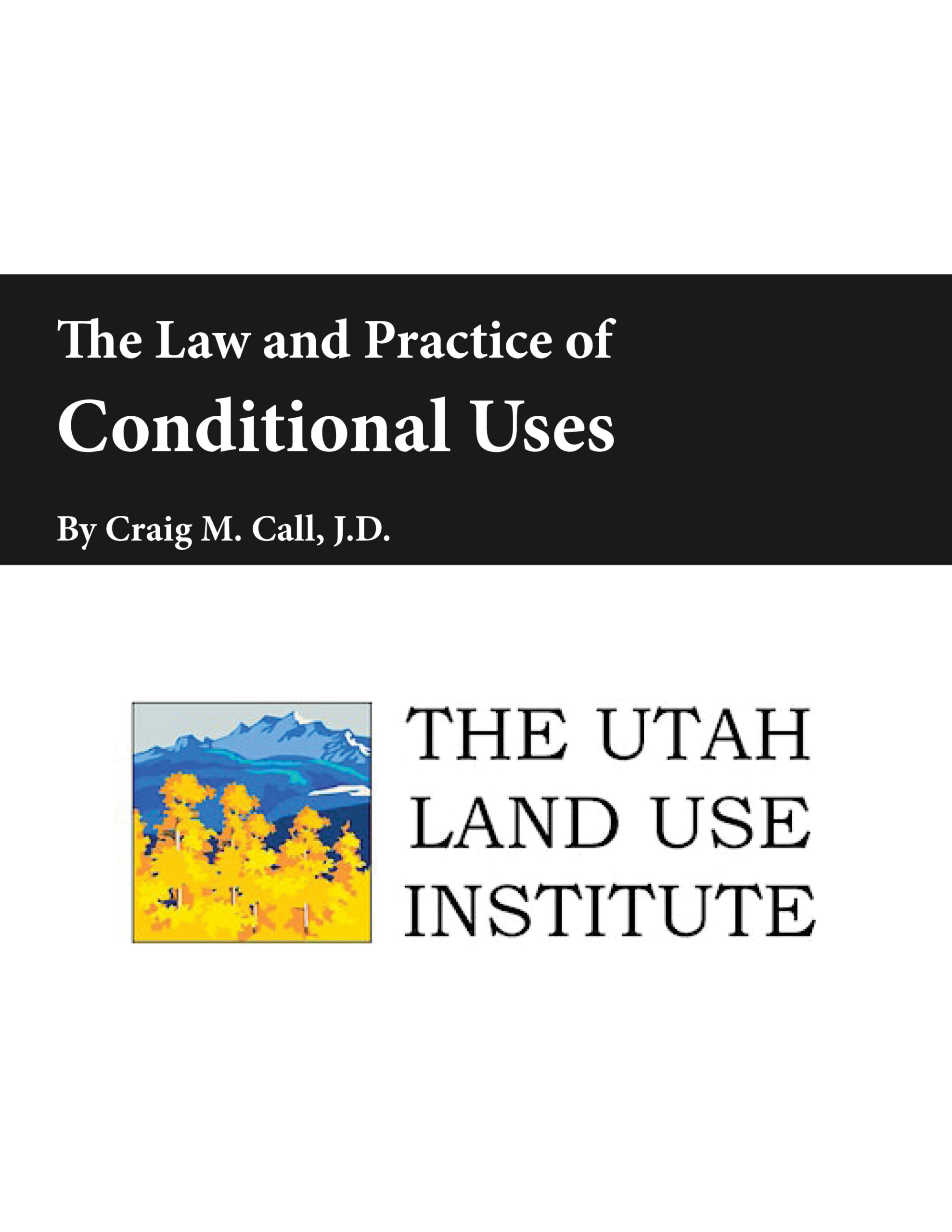
ULUI's The Law and Practice of Conditional Uses analyzes the most critical points and legal analysis for communities to consider when they are evaluating conditional uses.
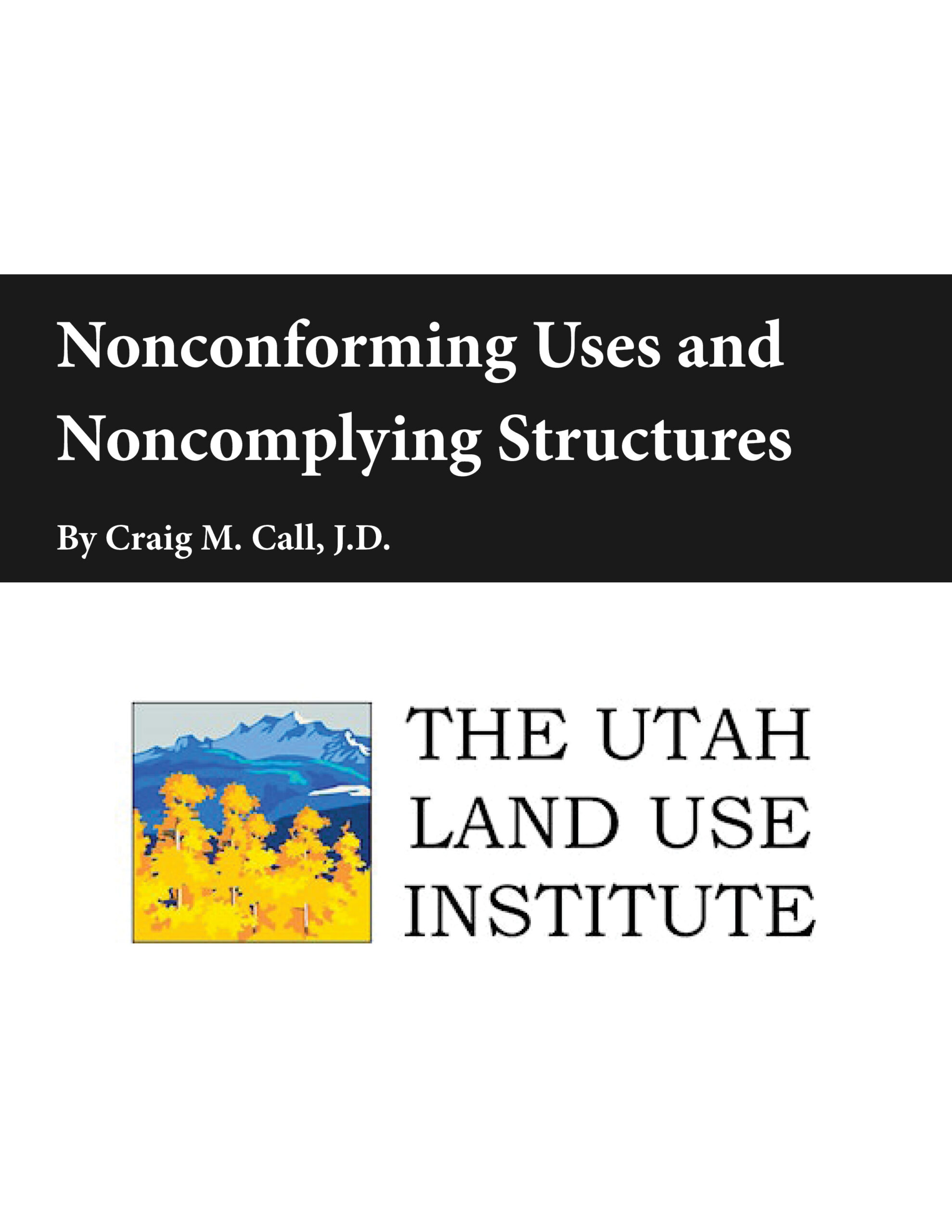
ULUI's Nonconforming Uses and Nonconforming Structures analyzes principles that apply to pre-existing legal uses and structures which do not now comply with current land use regulations.
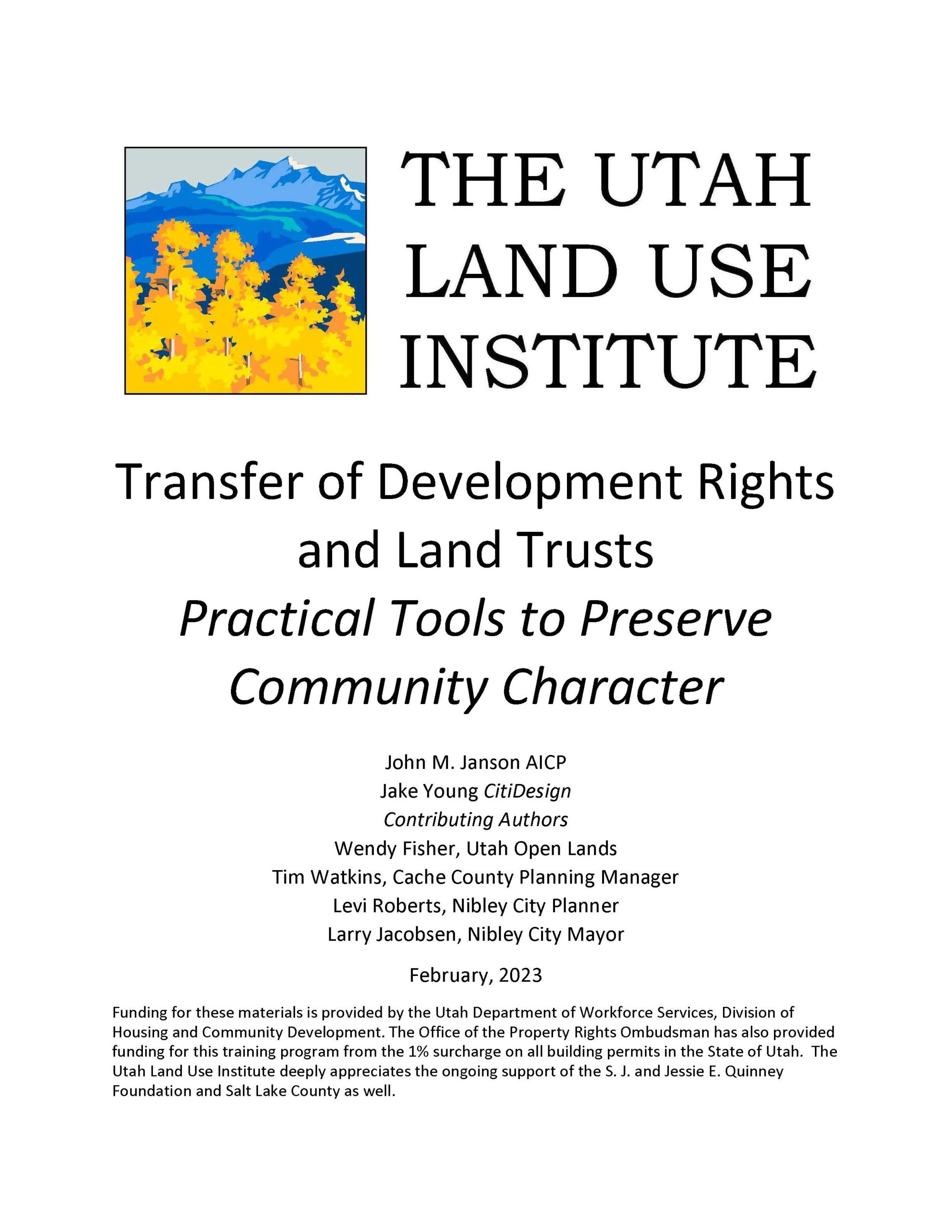
ULUI's Transfer of Development Rights and Land Trusts details the history, background, opportunities, and common challenges of voluntary strategies used to preserve community character.

ULCT's Checklist for Conducting Open Meetings helps you remember all of the key details to holding a lawful public meeting. Checklists for in-person, electronic, and closed session are covered in the guide.
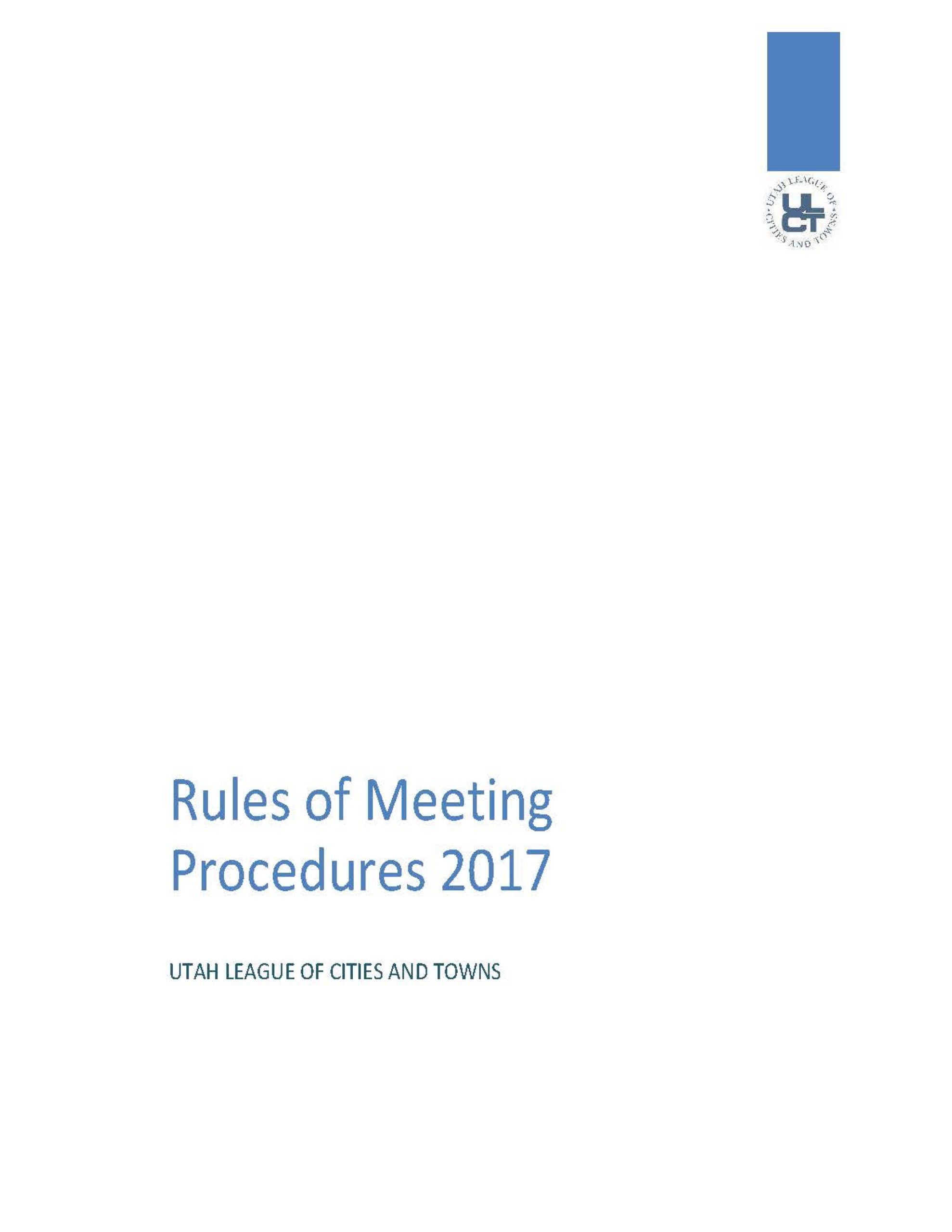
ULCT's 2017 guide, Rules of Meeting Procedures, provides local agency directives for the 2011 Utah Legislature requirement that all cities and towns adopt rules of procedure and order for their council meetings and planning commission meetings.

This simple Closed Meeting Affidavit Template provides direction to help agencies document a closed meeting in accordance with the Open and Public Meetings Act.
NOTE: be sure to note the specific subsection of 52-4-205 relating to your closed meeting.

The National Association of Counties The Right Way to Run a Meeting: A Guide for County Officials can help you master the art of running an effective and efficient public meeting.
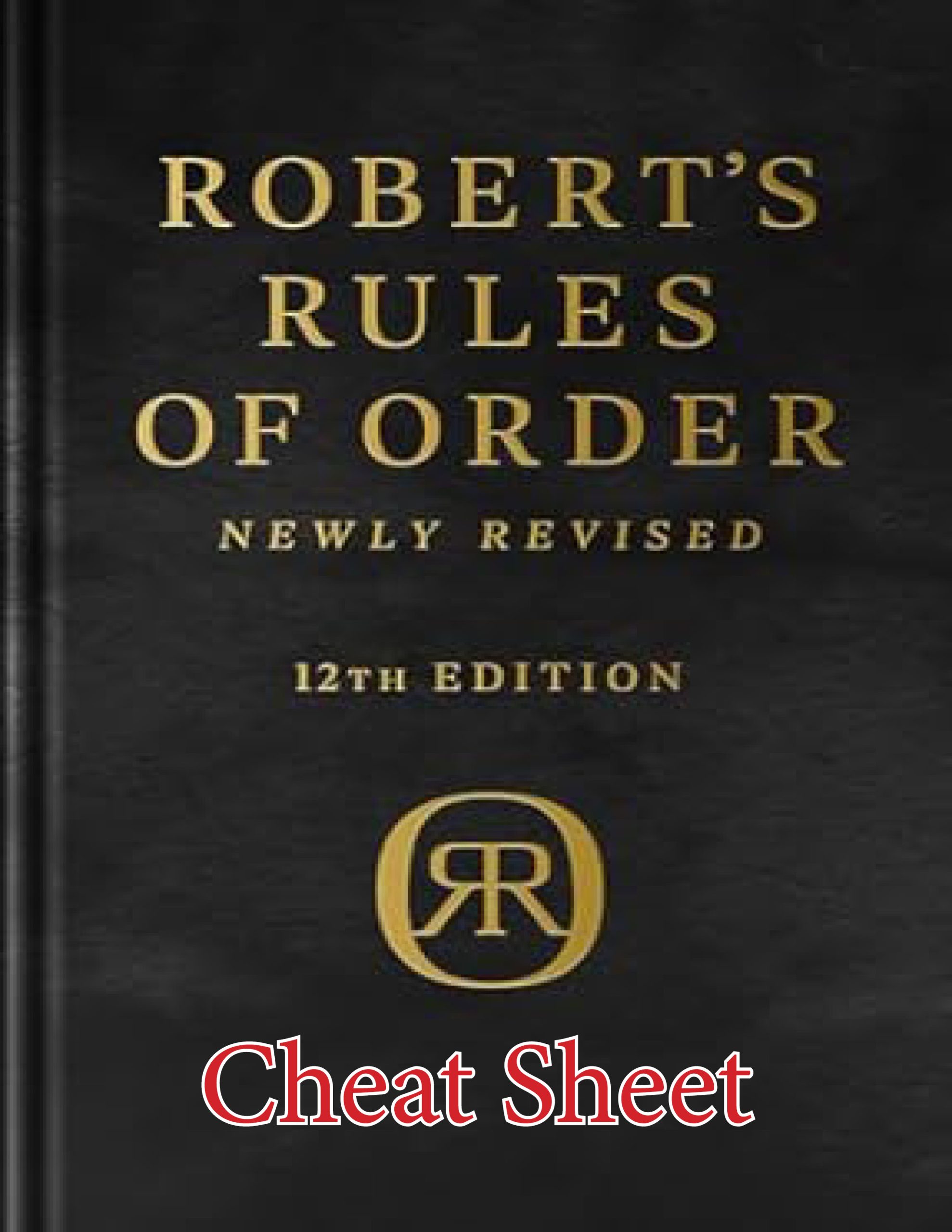
Cornell University's Simplified Version of Robert's Rules of Order provides a brief overview of the most commonly utilized rules to guide and structure your public meetings.

DOPL's Residential Construction Contract provides an optional template contract for contractors and homeowners in Utah addressing residential construction projects. If you decide to use it, you may agree in writing to change or delete any provision, and it is recommended that the contractor and homeowner read, understand, complete, and sign each page.
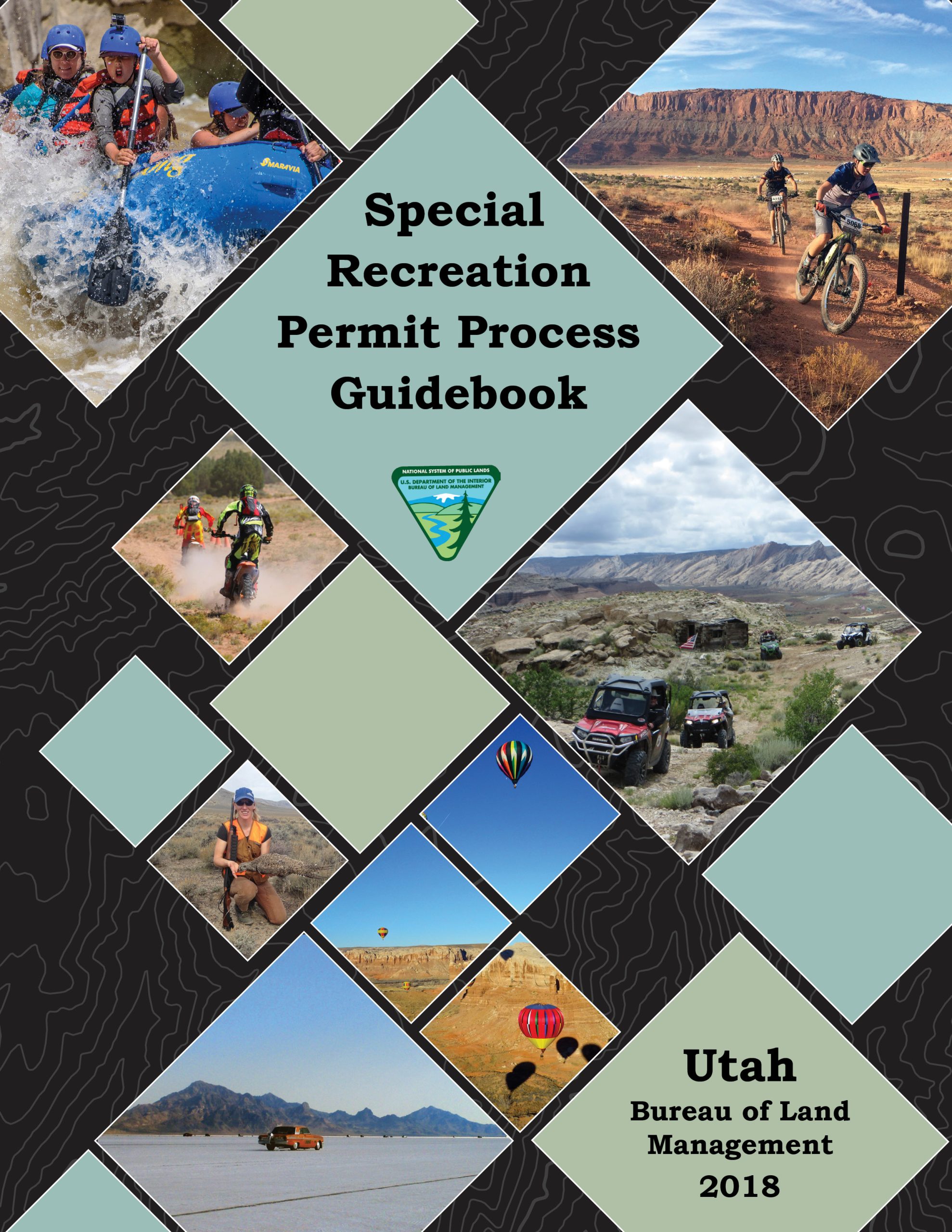
The Utah Bureau of Land Management's Special Recreation Permit Process Guidebook helps agencies navigate obtaining Special Recreation Permits (SRPs), which are authorizations that allow for commercial, competitive, and group recreation uses of the public lands and related waters.
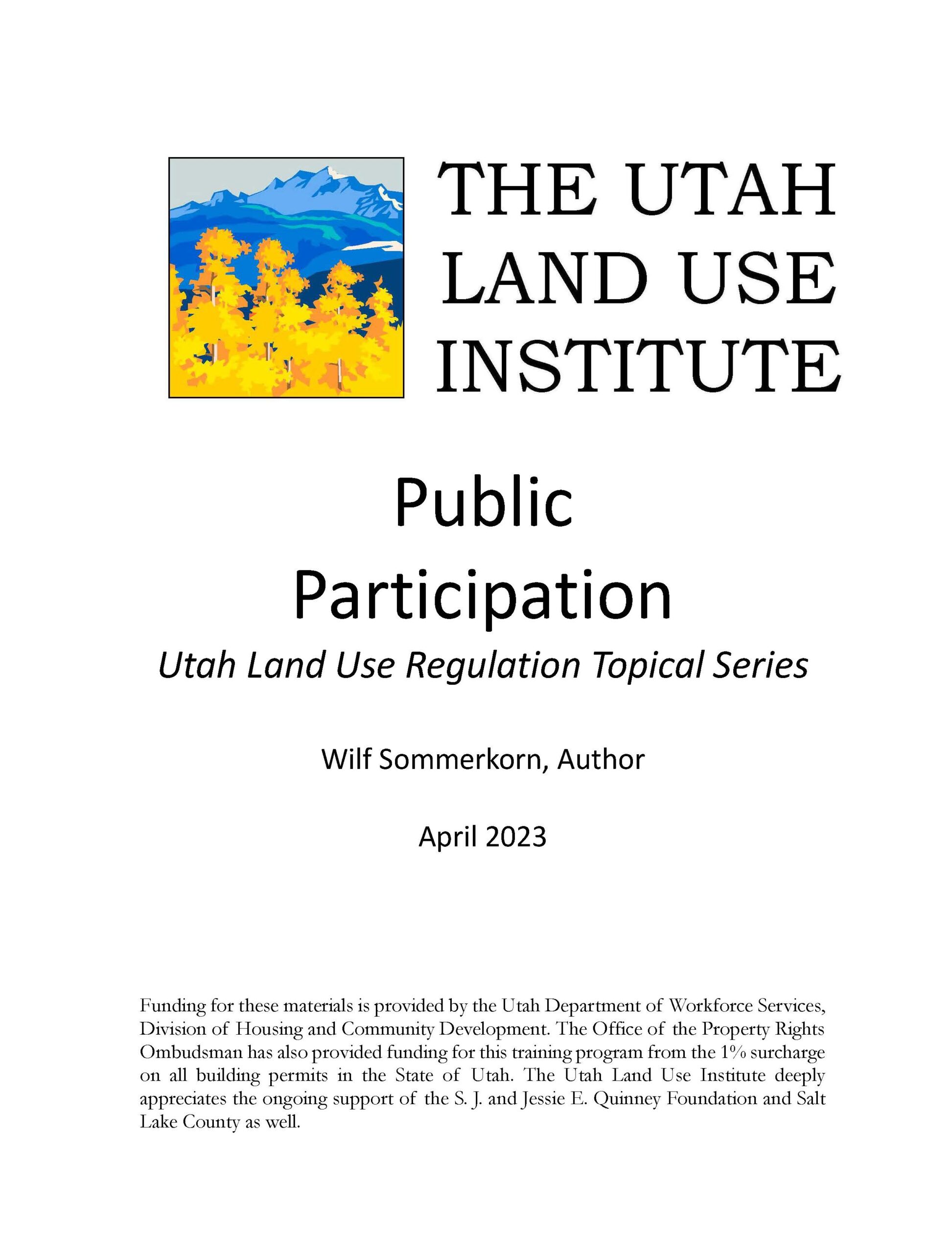
ULUI's Public Participation in Land Use Processes summarizes the background of Utah's requirements for public involvement in land use processes, the legal requirements for such, and ways to enhance and guide it.
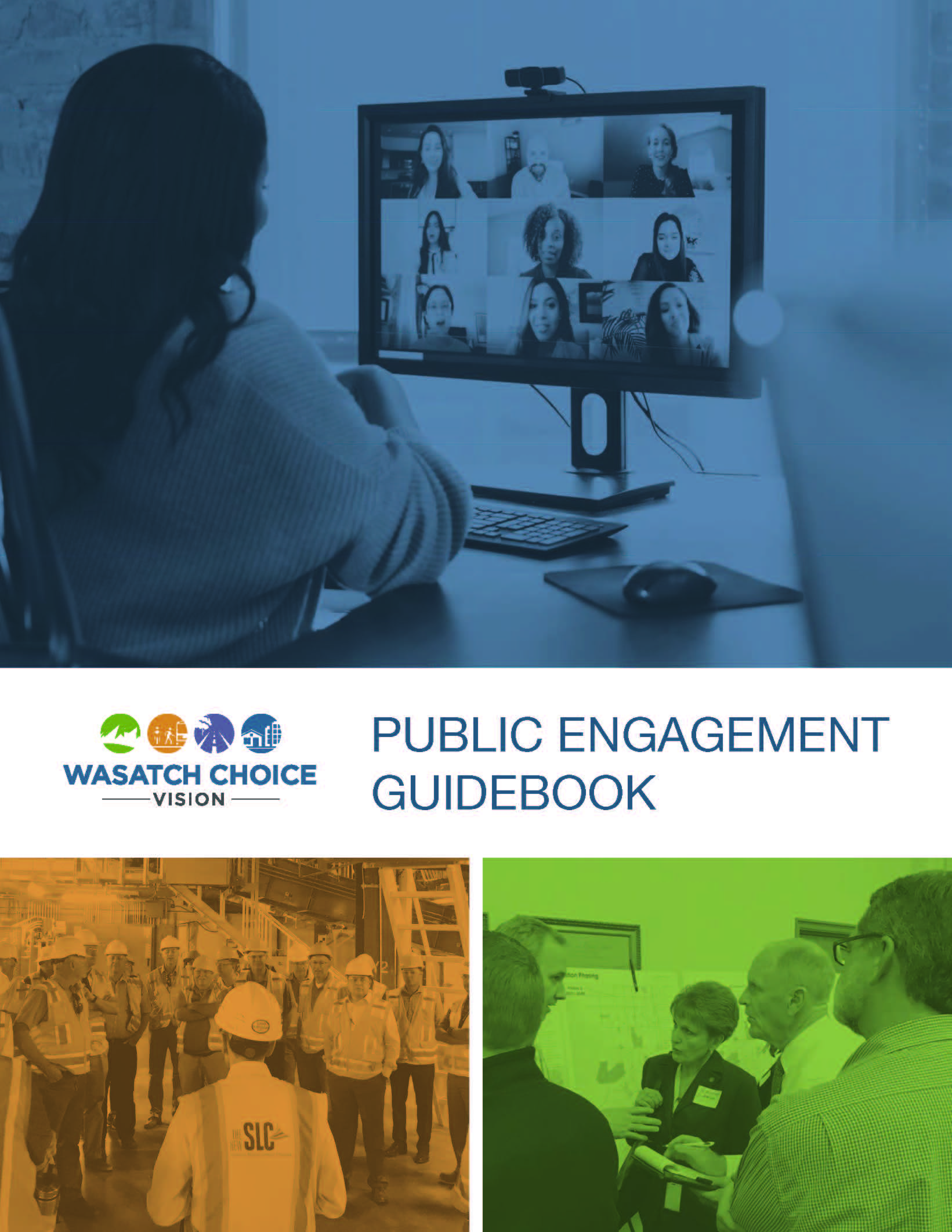
Envision Utah's Public Engagement Guidebook was developed as a resource to help community, regional, and state leaders and staff develop and implement plans and policies that benefit from broad stakeholder ownership.
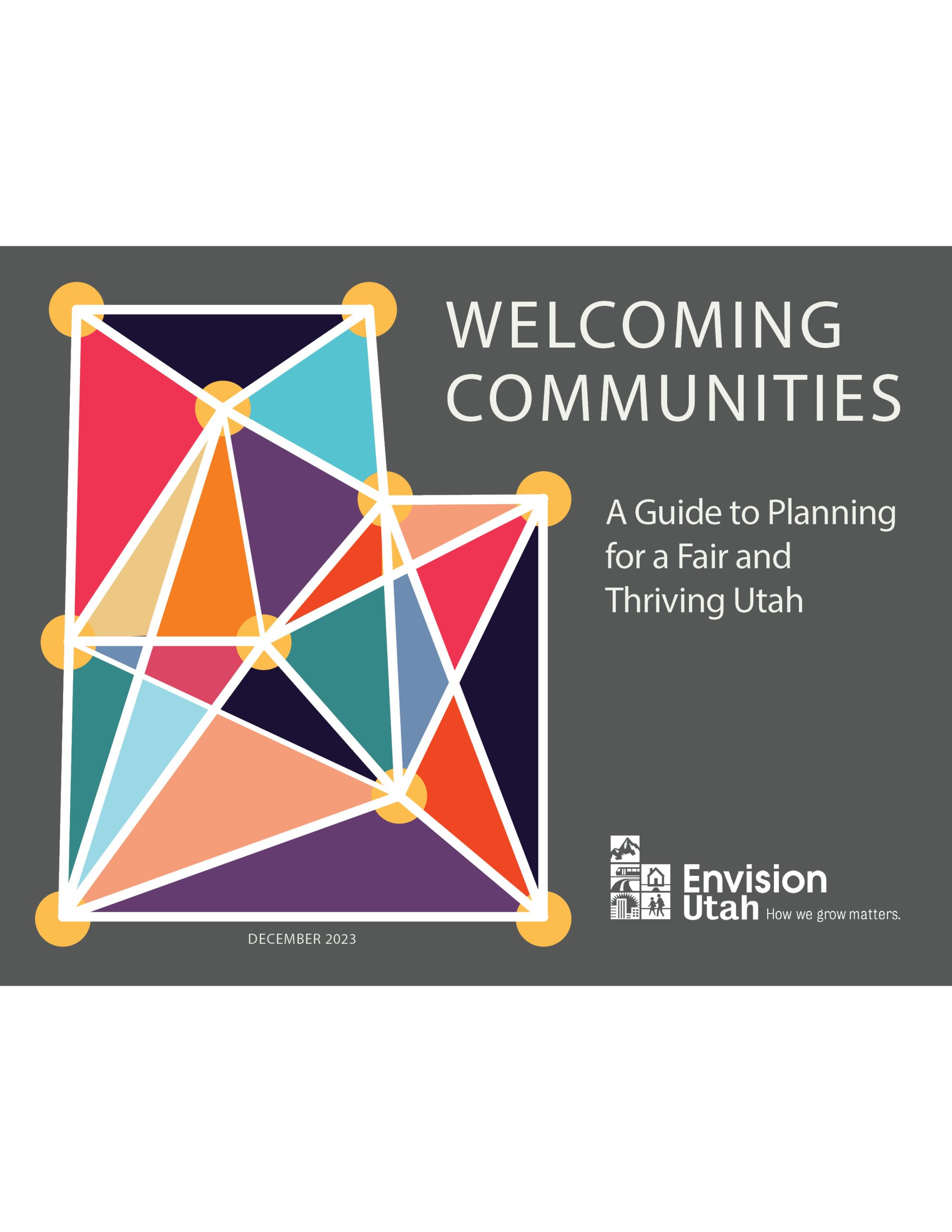
Envision Utah's Welcoming Communities: A Guide to Planning for a Fair and Thriving Utah focuses on inlcusivity in land use, transportation, and community planning.
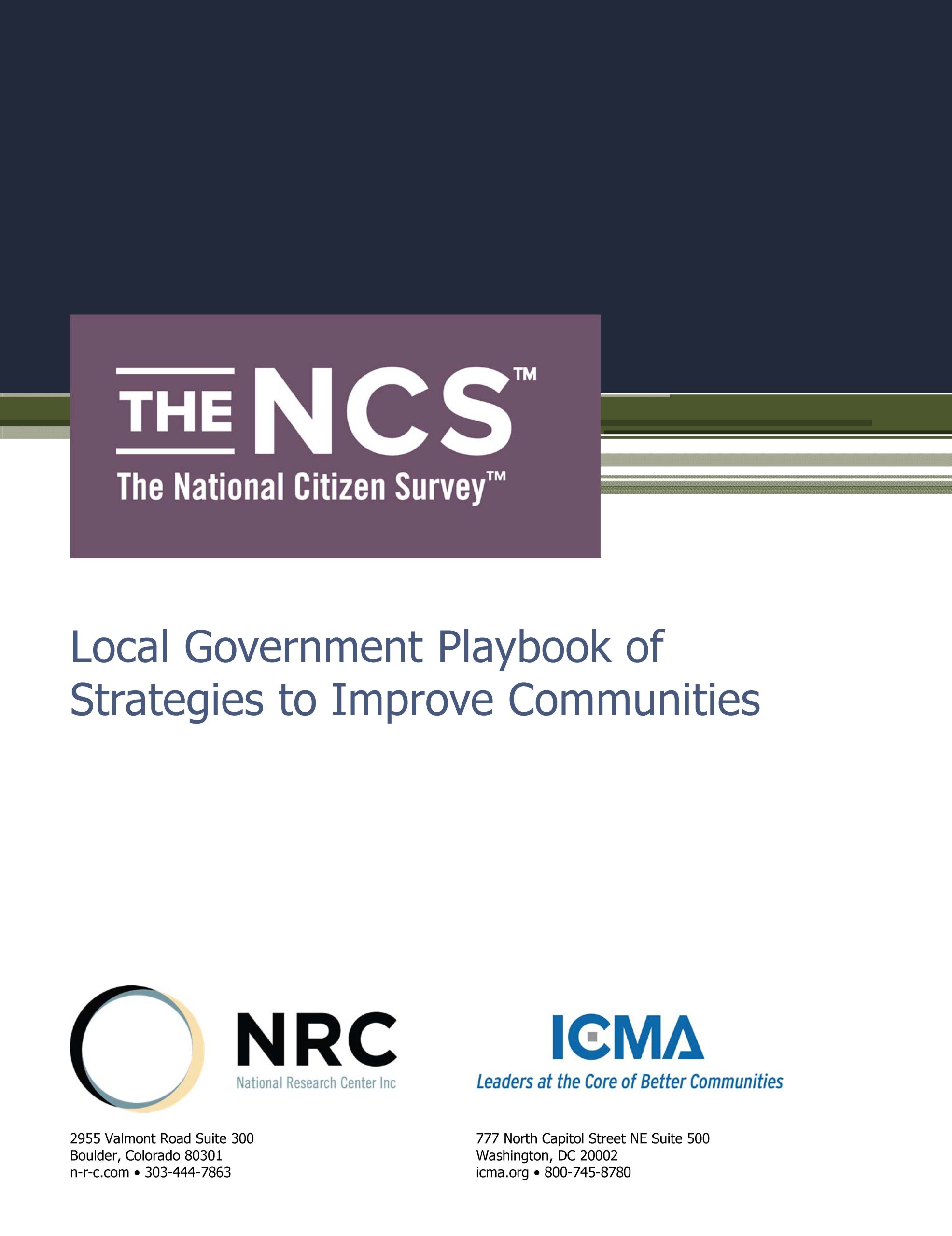
The National Research Center's Local Government Playbook of Strategies to Improve Communities includes a vignette of how Park City, Utah, as well as other jurisdictions throughout the U.S., used their National Citizen Survey results to improve their communities.
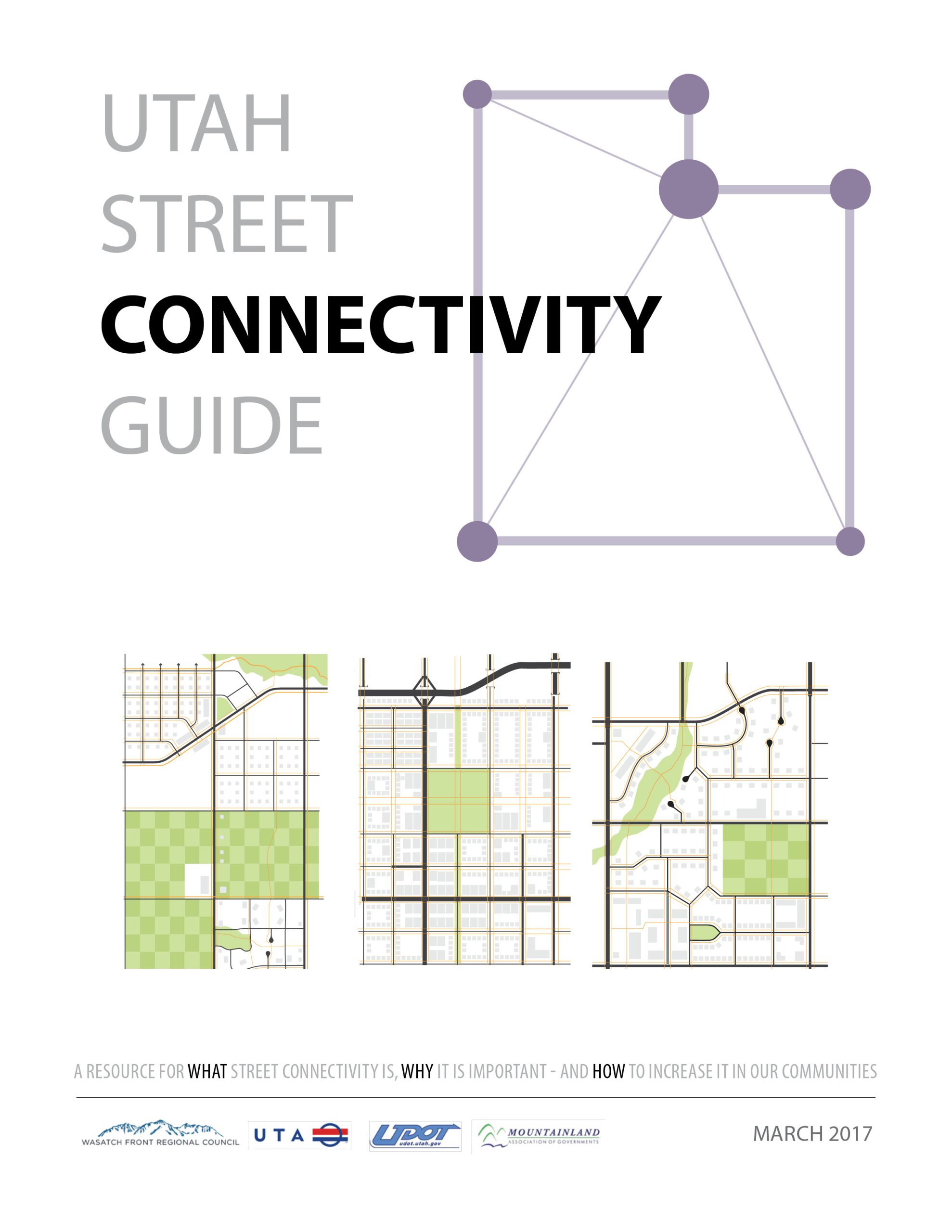
The Utah Street Connectivity Guide is a comprehensive resource for improving
street connectivity in communities throughout Utah.
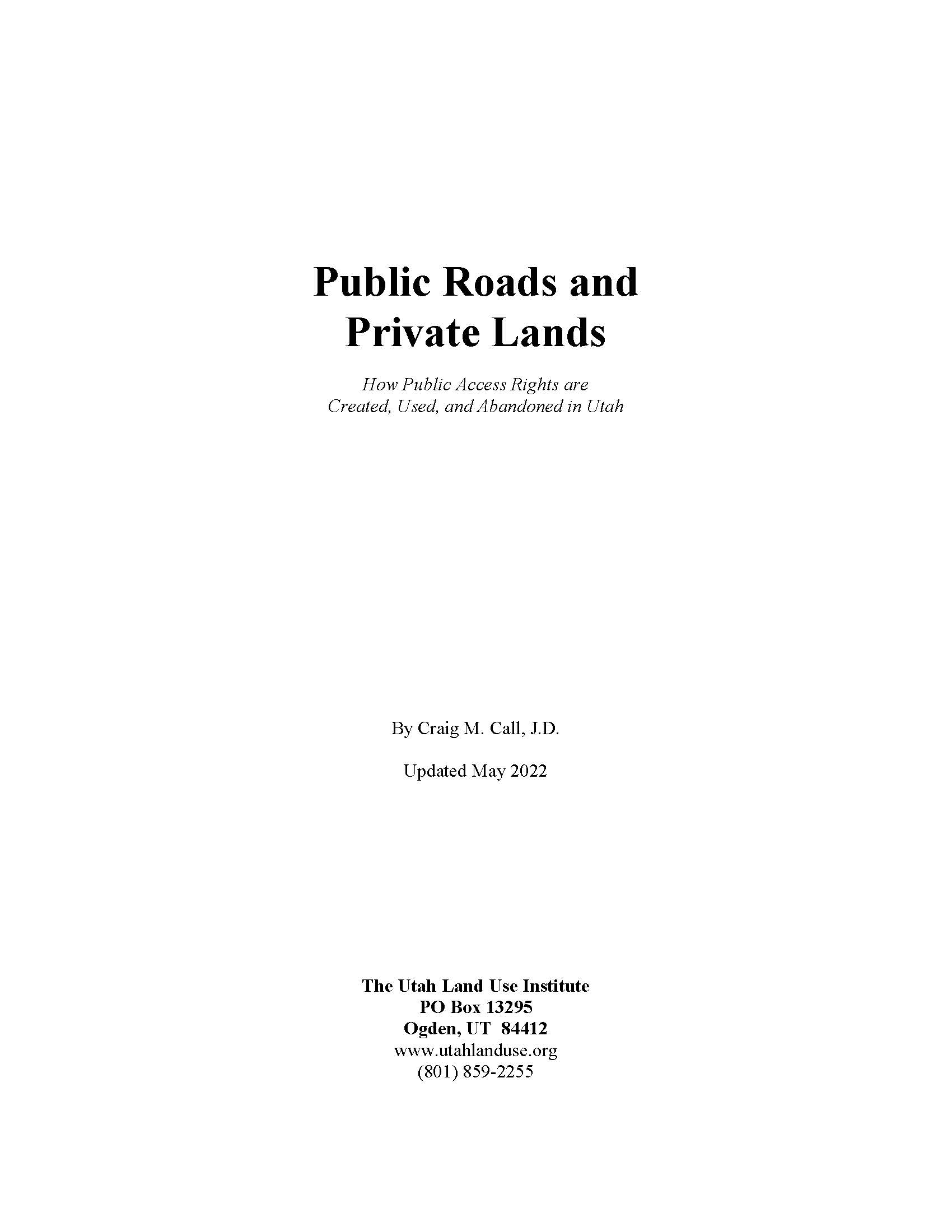
ULUI's Public Roads and Private Lands provides a broad overview of the case law related to various kinds of public rights of way -- distinguished by how they have been created, and indicating how different kinds of rights of way may be treated differently when changes are proposed.
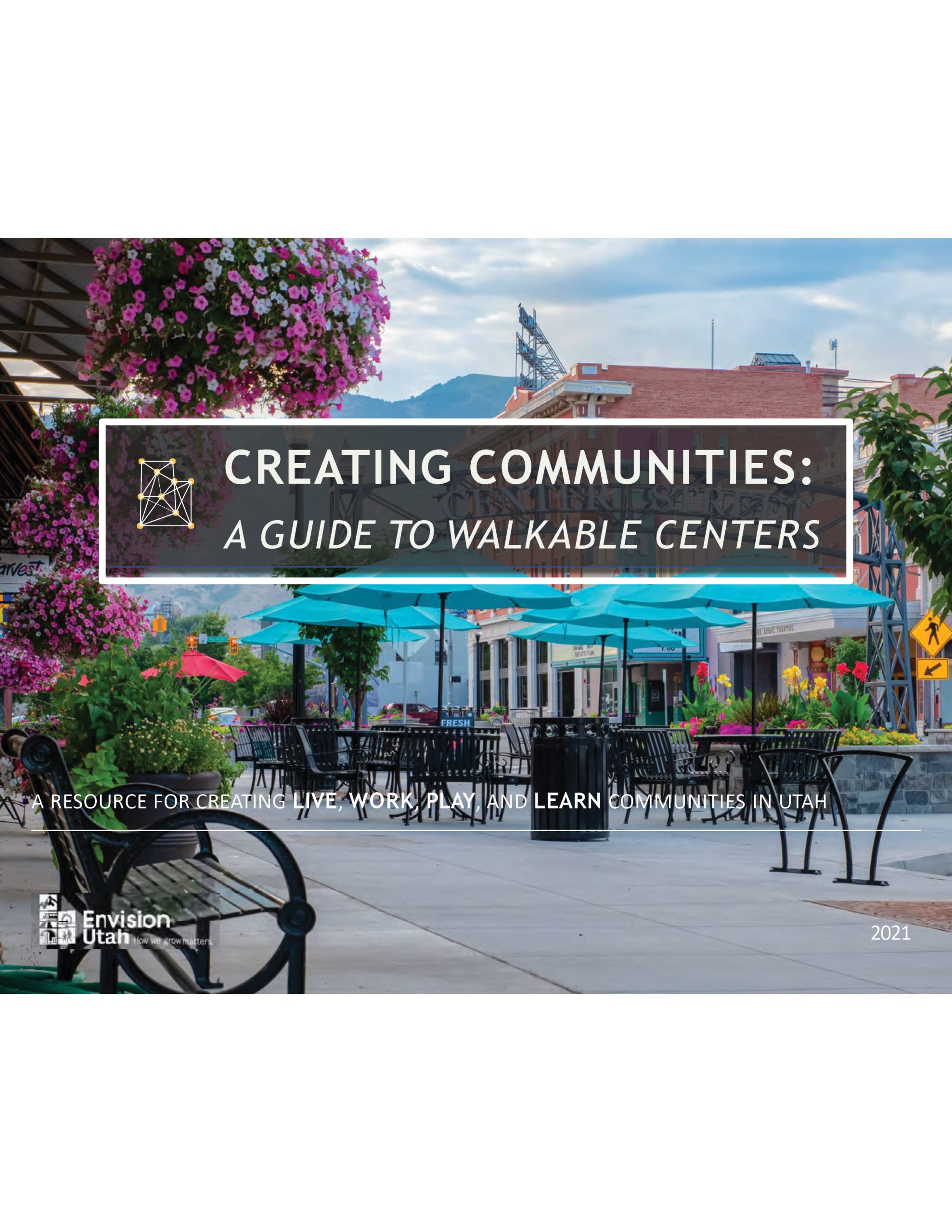
Envision Utah's Creating Communities: A Guide to Walkable Centers provides tools and strategies for staff, local officials, and the general public to understand the significant components of centers and how they can be brought to life in your community.
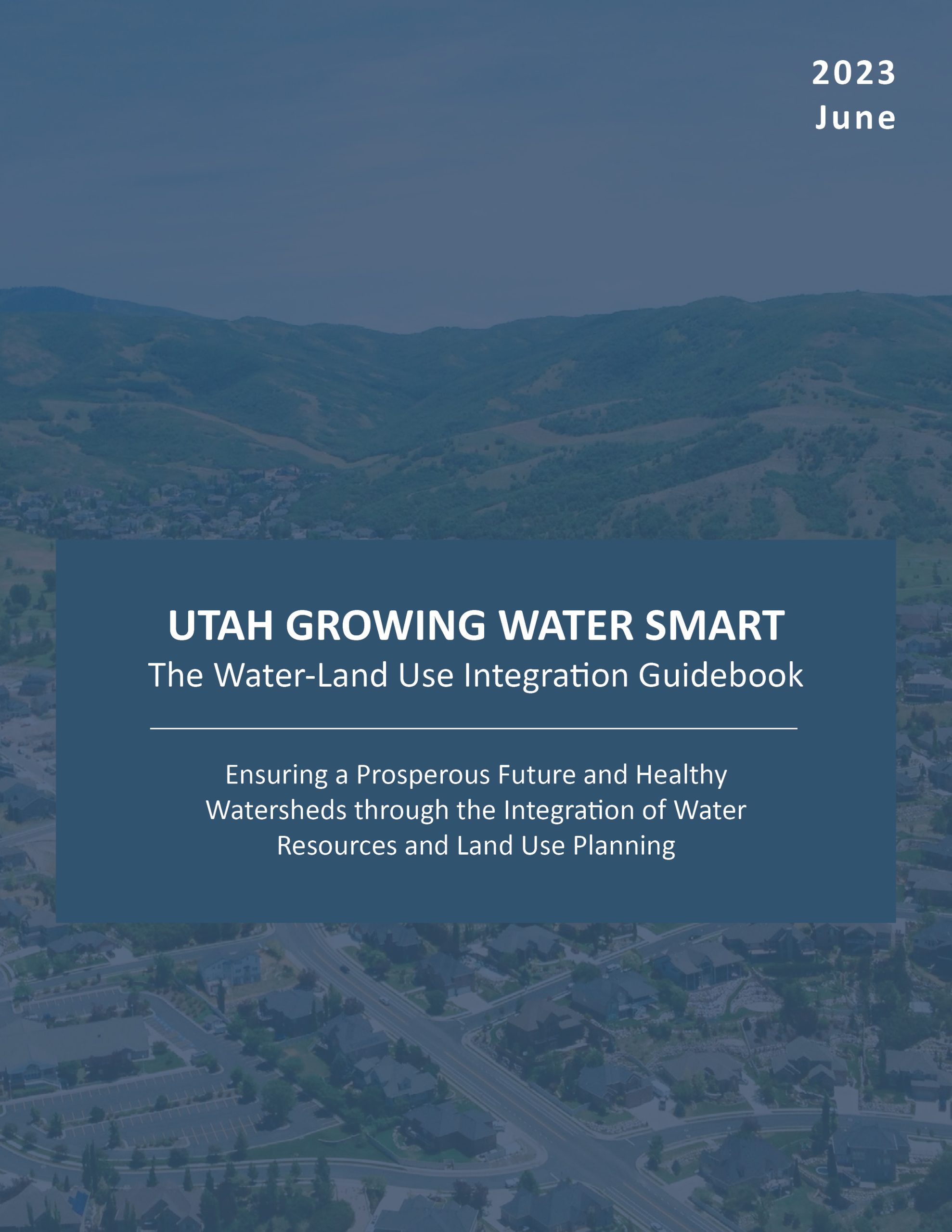
The Utah Growing Water Smart (GWS) workshop brings together key community staff and water and land use planning decision-makers to help build a more resilient and sustainable water future. The Water-Land Use Integration Guidebook is the document used to guide workshop and interested participants through the GWS process.
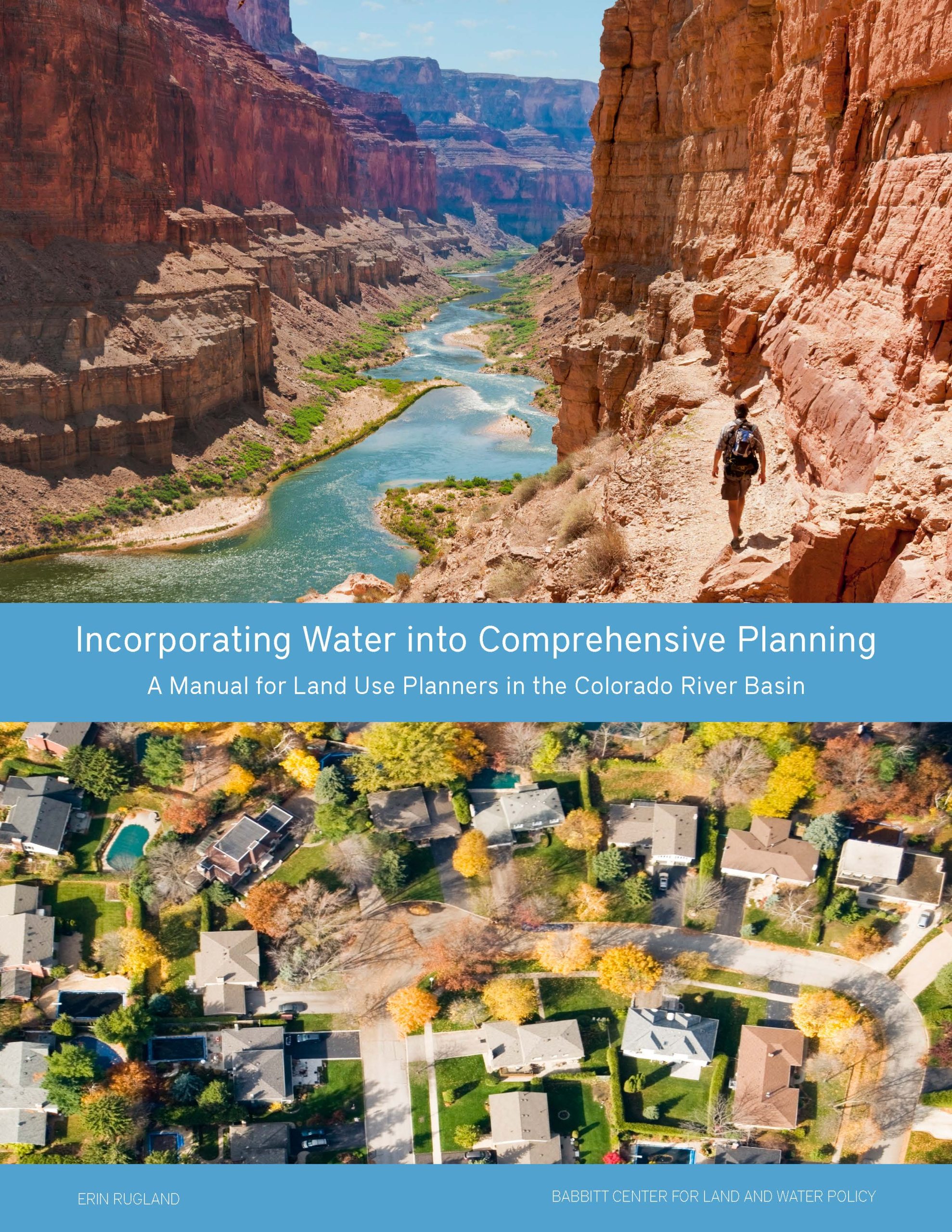
The Babbitt Center for Land and Water Policy authored Incorporating Water into Comprehensive Planning to help land use planners incorporate water management into comprehensive plans. This manual demonstrates how land use planners can facilitate a comprehensive planning process and resulting plan that will ensure integration of water management into their community’s future vision, as well as the water-related topics such a vision might include.
